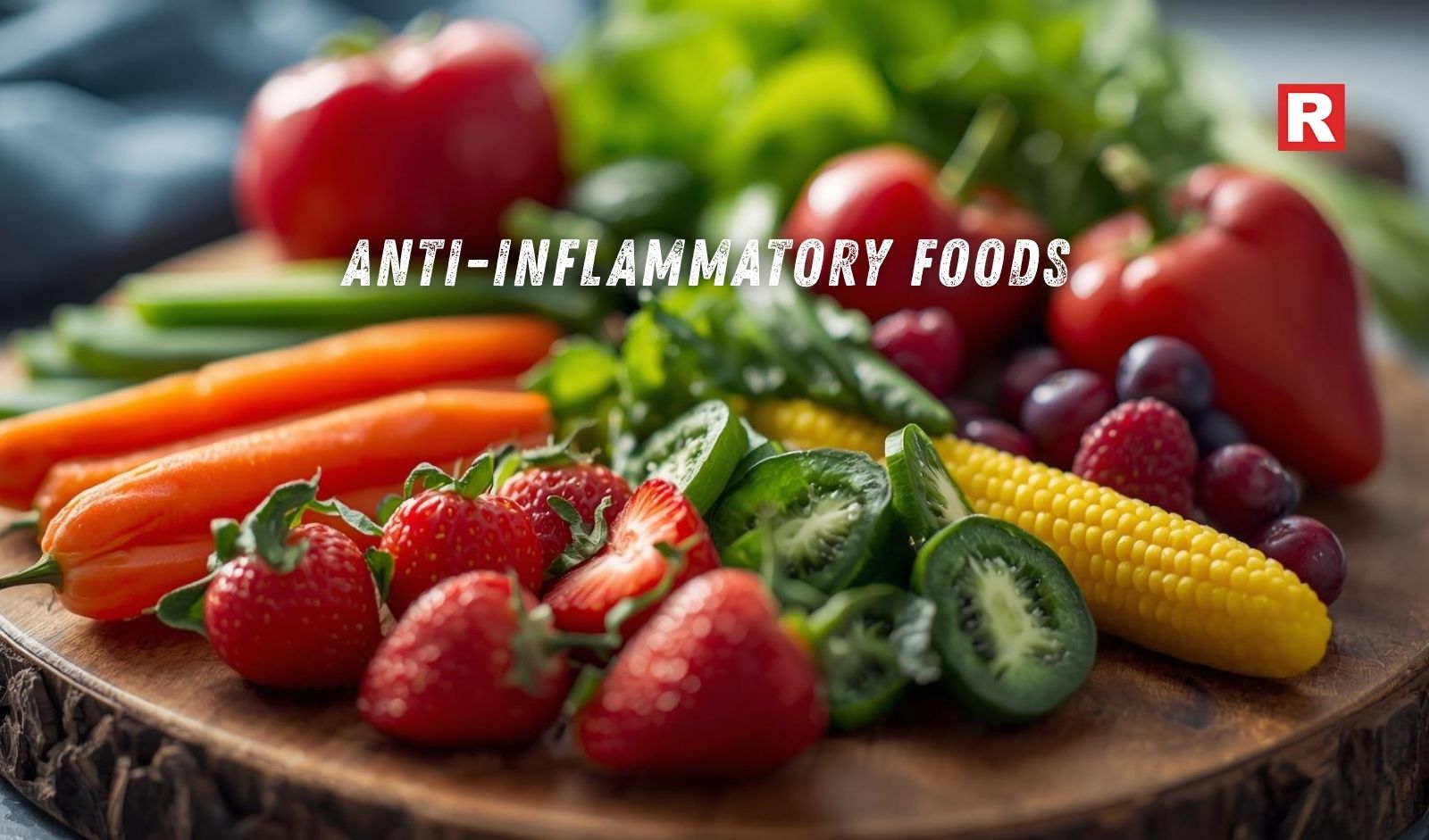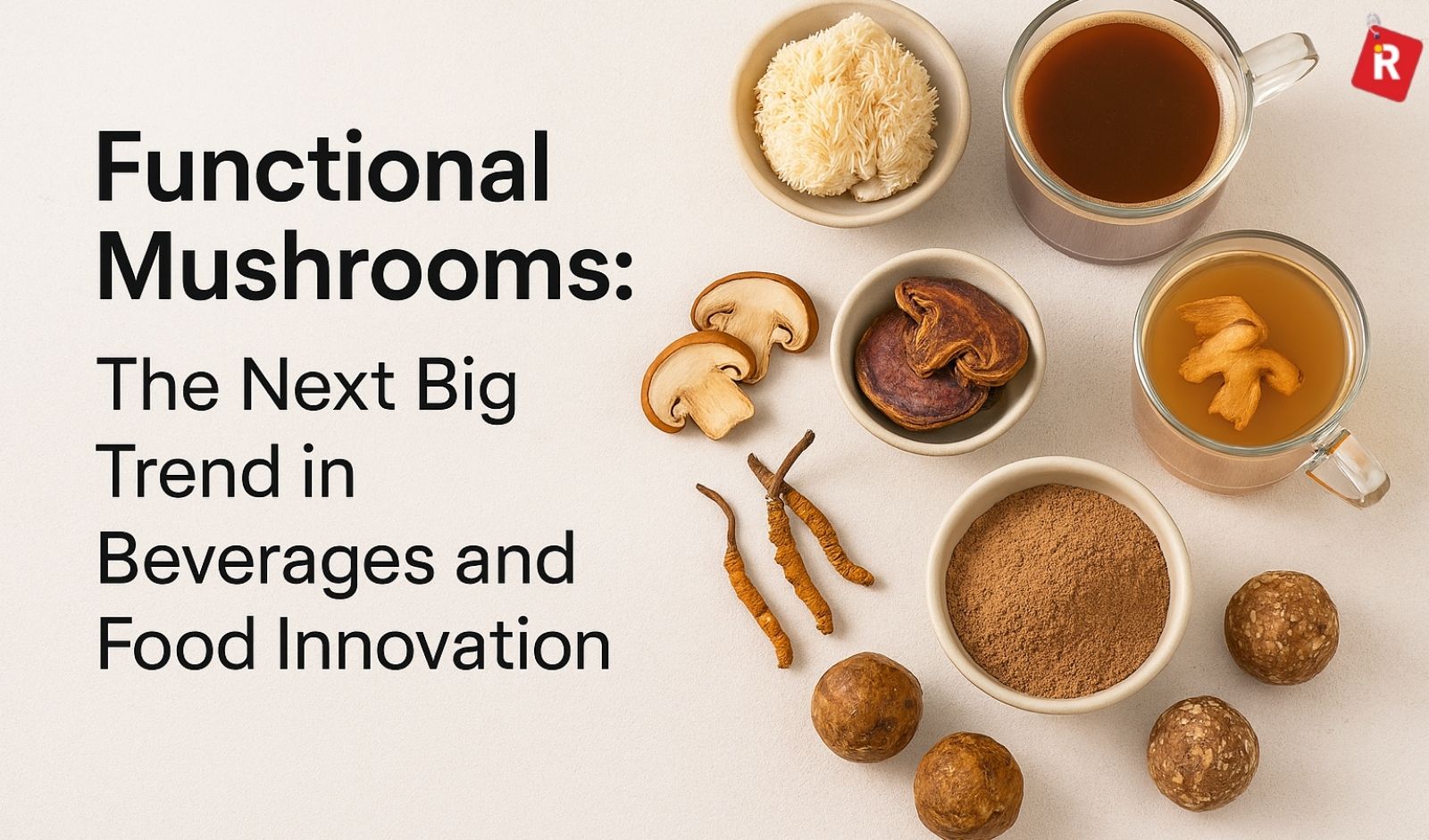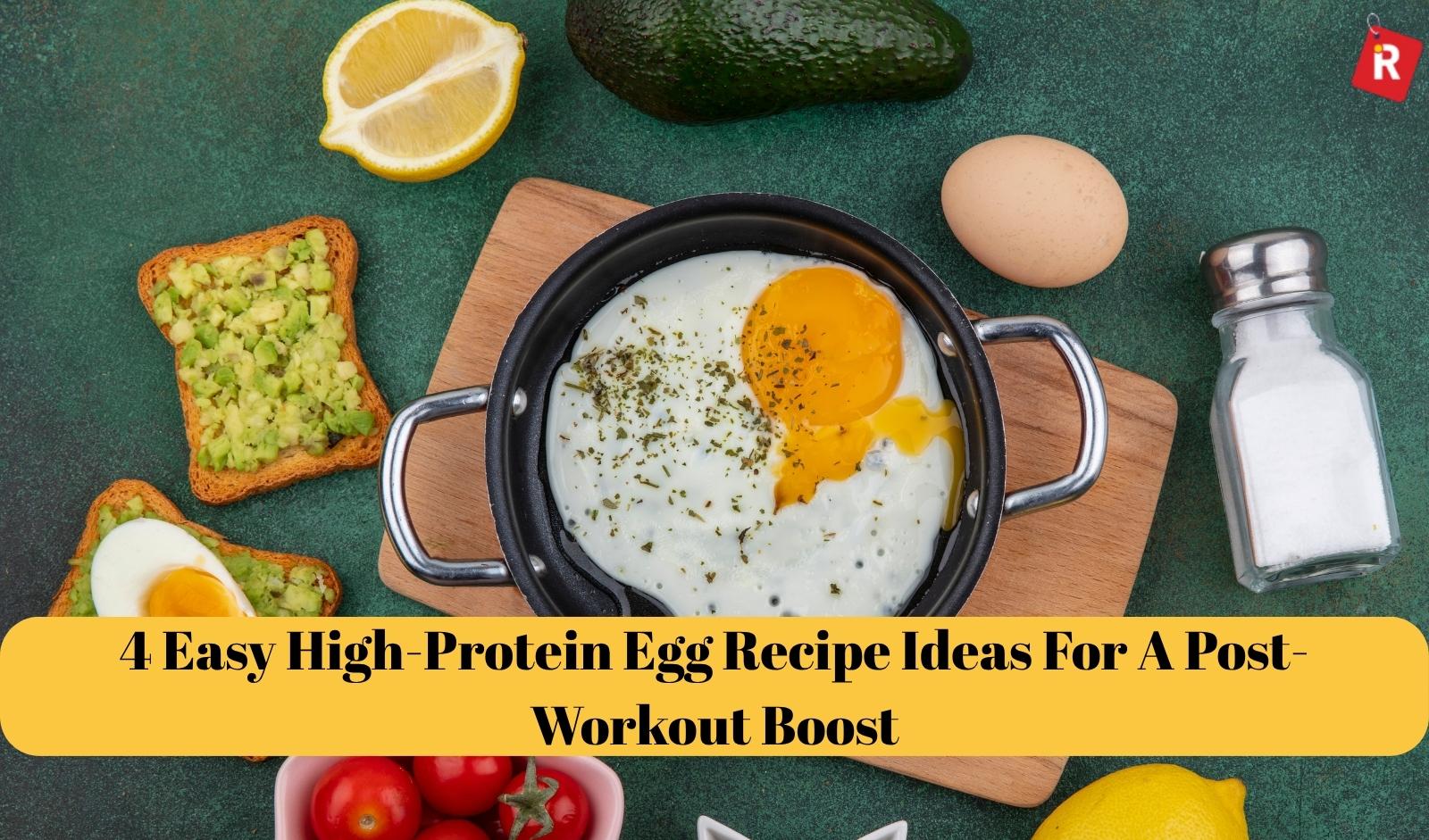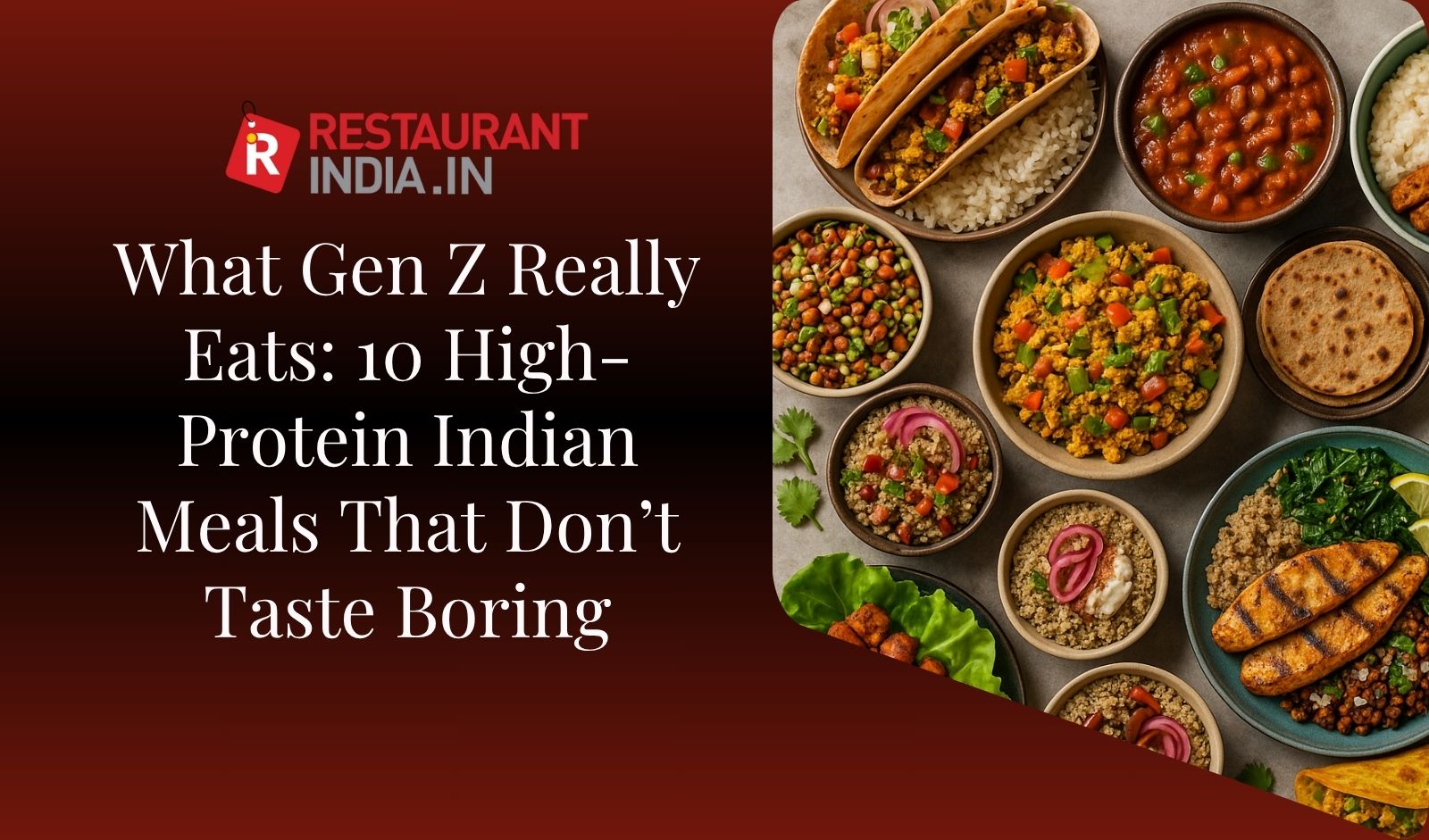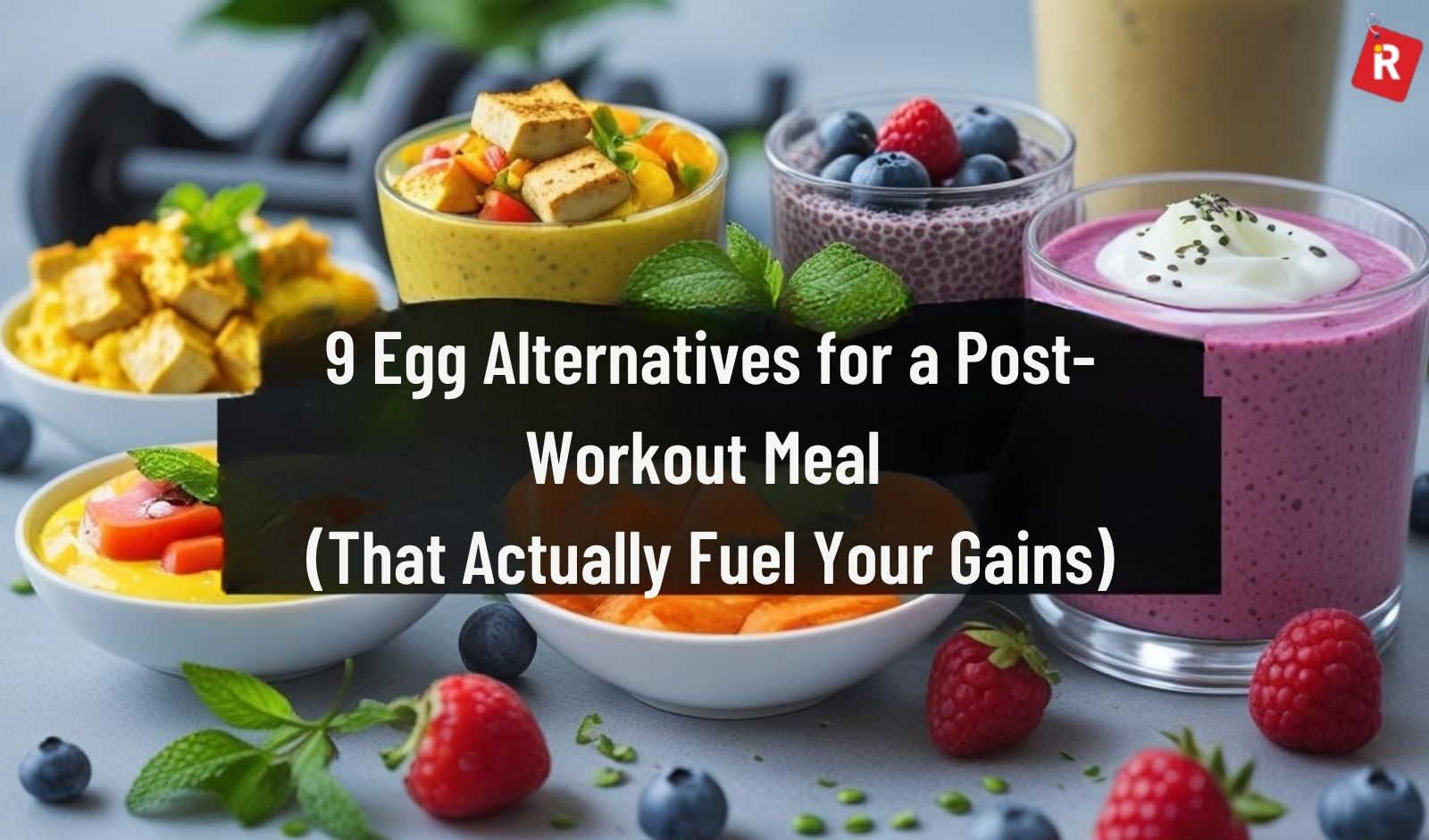Disclaimer: The information in this article is for general knowledge and educational purposes only. It does not replace professional medical or nutritional advice. Readers should consult a qualified healthcare provider before making changes to their diet or cooking practices.
10 Anti-Inflammatory Foods to Add to Your Diet

Inflammation is your body’s way of defending itself. It fights infections and injuries, protecting your body from both. Your white blood cells and all the right nutrients rush to where they’re needed, patching you up fast. But when this inflammation becomes a daily occurrence, it becomes more of a trouble than a help.
Long-term inflammation plays a part in lots of health problems, like heart disease, arthritis, diabetes, obesity, and even some cancers. It can speed up aging, suck your energy, and leave you feeling foggy or run down. While genetics and lifestyle matter in this, what you eat every day has a huge impact. Some foods fan the flames, while others help put them out. You need to add more anti-inflammatory foods, like those packed with antioxidants, omega-3s, vitamins, and minerals, to your meals. These nutrient-rich foods protect your cells, keep swelling in check, and help you feel more alive.
Let’s take a look at the top ten foods that fight inflammation and how to add them to your daily routine without much fuss.
Read more: How to Keep Strawberries Fresh: Tips for Storing Strawberries
10 Anti-Inflammatory Foods for Your Body
Here’s a closer look at the top 10 anti-inflammatory foods backed by science.
1. Berries (Blueberries, Strawberries, Raspberries)
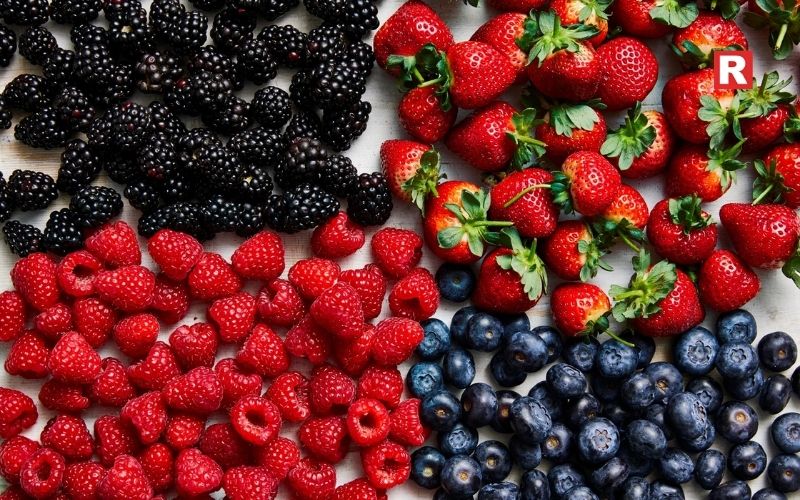
Berries might be small, but they are full of anti-inflammatory properties. Thanks to their antioxidants, especially anthocyanins, which give them their vibrant color, they help lower inflammation and protect your heart. Studies even show they can cut down oxidative stress and lower inflammatory markers in your blood. A cup of mixed berries is about 80 calories, 4 grams of fiber, and over half your daily vitamin C, which keeps your immune system strong and your skin healthy.
How to Eat: Toss them in a smoothie, sprinkle over oatmeal or yogurt, or just grab a handful as a snack.
Know more: 6 Easy Pumpkin Seed Recipes with Surprising Health Benefits
2. Fatty Fish (Salmon, Mackerel, Sardines)

Fatty fish are loaded with omega-3s (EPA and DHA). These are healthy fats known to lower inflammation by blocking cytokines, which are the molecules that set off the body’s inflammatory response. Also, eating fish regularly is great for your heart, brain, and joints. A 100-gram piece of salmon gives you about 2 grams of omega-3s, 20 grams of protein, and 200 calories.
How to Eat: Bake or grill fish with some lemon and herbs, mix it into salads, or pair it with quinoa and veggies for a supercharged meal.
(If you’re Vegan, then try flaxseeds, chia seeds, or walnuts. They’re full of plant-based omega-3s.)
3. Leafy Greens (Spinach, Kale, Swiss Chard)
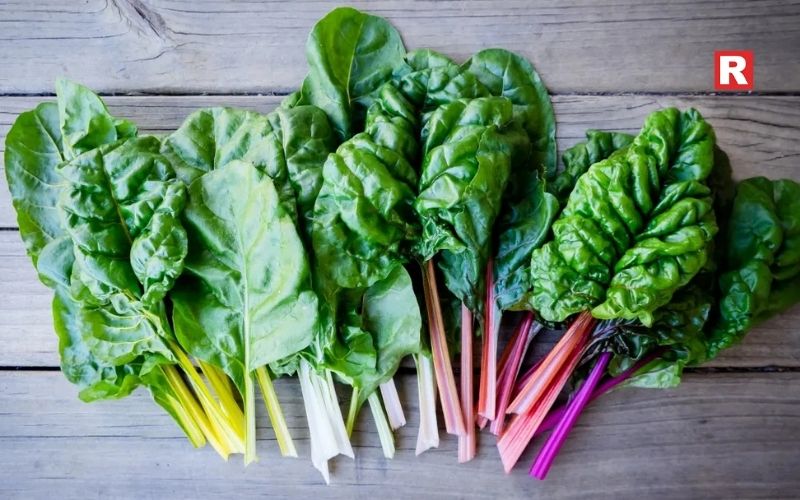
Leafy Greens are vitamin and mineral powerhouses, especially vitamin K, magnesium, and polyphenols. They help neutralize free radicals and calm inflammation deep in your cells. They also help your liver in liver detoxification and improve digestive health. One cup of raw spinach has just 7 calories, but provides over 180% of your daily vitamin K and nearly half your vitamin A.
How to Eat: Blend into smoothies, sauté with a little garlic and olive oil, make saag, or pile into salads and soups.
Pro tip: Eat them with healthy fats (like avocado or olive oil) so your body absorbs more nutrients.
4. Turmeric
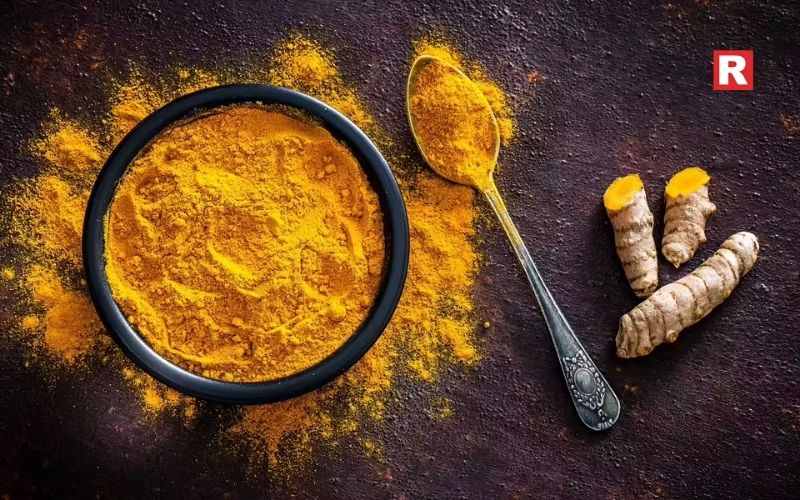
The bright yellow color is curcumin, turmeric’s secret weapon. Curcumin fights inflammation and acts as an antioxidant, which is why turmeric gets used for everything from easing arthritis to slowing cell aging. A teaspoon of turmeric powder gives you about 29 calories, 1 gram of fiber, and a solid hit of curcuminoids.
How to Eat: Stir into curries, soups, or stir-fries, or try a cozy turmeric latte with a pinch of black pepper. (The pepper actually helps your body use curcumin better.)
What's new: 10 Benefits of Turmeric in Your Daily Life and Top Brands to Pick
5. Ginger
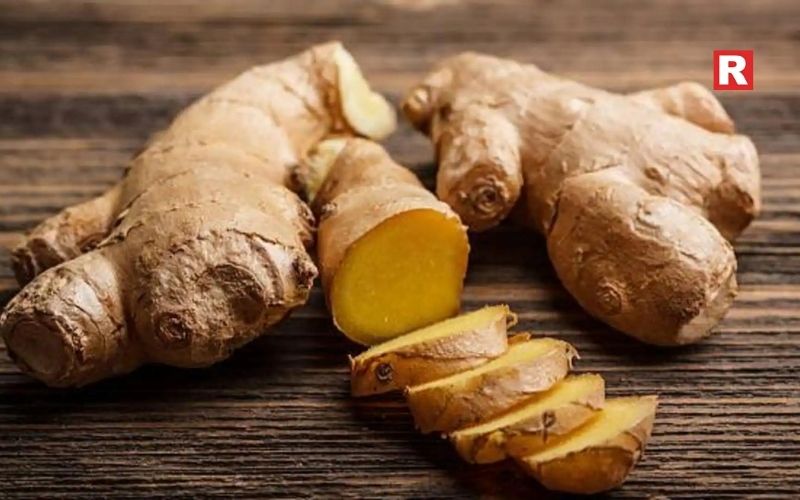
Ginger’s been a go-to remedy across Asia for ages, thanks to gingerol, the compound that helps fight inflammation, soothes nausea, and boosts digestion. A teaspoon of fresh ginger has just 5 calories, but packed with antioxidants and oils that are good for your joints and gut.
How to Eat: Grate it into tea, soups, stir-fries, or smoothies. It pairs especially well with citrus and honey if you want a fresh, immune-boosting drink.
6. Green Tea
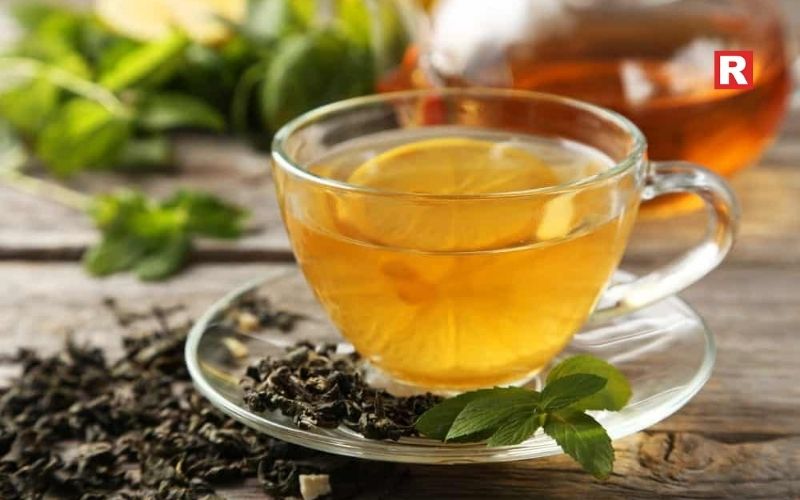
Green tea is one of the healthiest teas in the world. It’s full of EGCG, a powerful antioxidant that reduces inflammation, helps manage weight, and might even slow aging. A cup of green tea has only 2 calories and a blend of polyphenols that can lower CRP, a key inflammation marker.
How to Eat: Swap out your coffee or soda for a cup or two of green tea daily. And if you want more antioxidants, then go for matcha.
7. Nuts (Almonds, Walnuts)
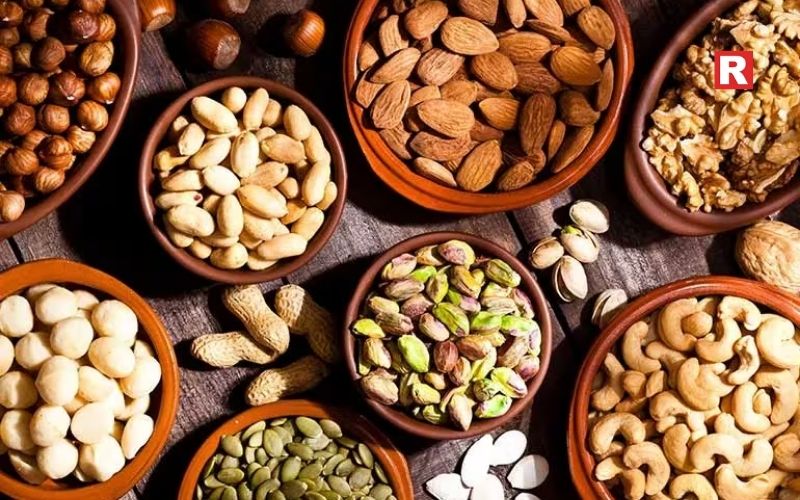
Nuts are tiny nutrient bombs. They have healthy fats, vitamin E, and fiber all packed in. They protect your cells from oxidative damage and help lower bad cholesterol, which are both big players in inflammation. A handful (28 grams) of almonds gives you about 160 calories, 6 grams of protein, and a third of your daily vitamin E. Walnuts bring plant-based omega-3s to the table.
How to Eat: Snack on a mix, toss crushed almonds on salads, or blend walnuts into a smoothie or sauce for a creamy, dairy-free texture.
8. Olive Oil
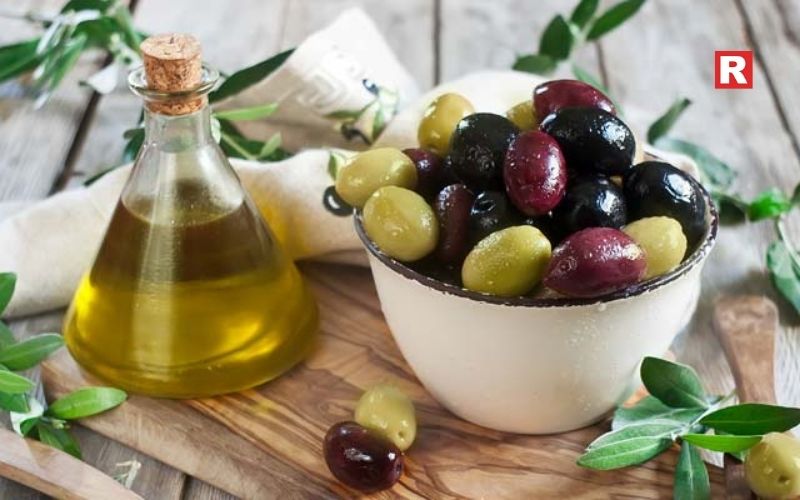
Extra-virgin olive oil is a staple in the Mediterranean diet for a reason. It’s packed with oleocanthal, known for its strong inflammation-reducing properties. These help protect the heart, joints, and cells from oxidative stress. Olive oil also looks after your heart and keeps inflammation in your arteries down. One tablespoon gives you 120 calories, mostly from healthy monounsaturated fats, plus a solid hit of antioxidants.
How to Eat: Use cold-pressed olive oil as your main cooking oil, or just drizzle it over salads, roasted veggies, or pasta. Mix it with lemon and fresh herbs for a quick, anti-inflammatory dressing.
9. Tomatoes
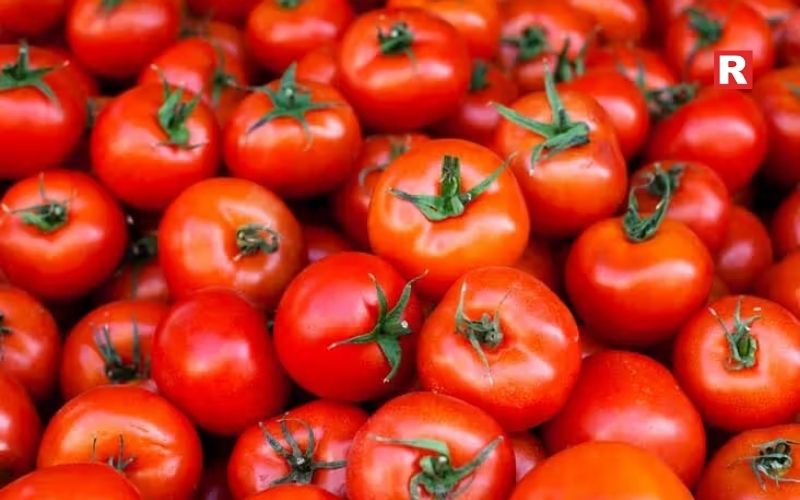
Tomatoes are loaded with lycopene, a powerful antioxidant that cools inflammation, especially in your lungs and skin. Cooking tomatoes actually unlocks more lycopene, so tomato sauces and soups do your body extra favors. A medium tomato has only 25 calories, but covers nearly half your daily vitamin C and a strong dose of antioxidants.
How to Eat: Toss fresh tomato slices into salads, simmer chopped tomatoes into sauces with a bit of olive oil, or blend up a tomato soup and enjoy it with whole-grain bread.
Check out: Top 10 Healthiest Breakfast Bowl Fruits
Top 10 Health Benefits of Eating Dry Fruits Daily
10. Whole Grains (Oats, Quinoa, Brown Rice)

Whole grains give you fiber and B vitamins, both crucial for calming inflammation by looking after your gut and steadying your blood sugar. Unlike white bread or regular pasta, whole grains keep their bran and germ, so you get longer-lasting energy and digestive perks. A cup of cooked quinoa delivers about 220 calories, 8 grams of protein, and 5 grams of fiber. This combo feeds the good bacteria in your gut, which helps keep inflammation in check.
How to Eat: Swap out white rice for quinoa or brown rice, start your day with overnight oats, or add barley to soups.
Bonus: Easy Anti-Inflammatory Meal Ideas
Here are some fast, tasty ways to get these foods on your plate:
- Breakfast: Overnight oats with berries, chia seeds, and a mug of green tea.
- Lunch: Quinoa salad loaded with spinach, cherry tomatoes, walnuts, and a splash of olive oil.
- Snack: Whip up a fruit smoothie with turmeric and ginger.
- Dinner: Grill some salmon, sauté kale, and serve with brown rice.
- Dessert: A bowl of mixed berries finished with dark chocolate and almonds.
Each meal packs in antioxidants, healthy fats, and plant nutrients that team up to fight inflammation from all angles.
How Anti-Inflammatory Foods Improve Health
Eating these foods regularly will help you more than just ease aches and pains; your whole body will run better.
- Heart Health: Omega-3s and olive oil keep your arteries calm and help manage cholesterol.
- Brain Function: Green tea and berries sharpen focus and memory.
- Joint Relief: Turmeric and ginger ease stiffness and pain.
- Digestive Balance: Whole grains and leafy greens feed your gut and cut down on bloating.
Bottom line, these foods help your body heal itself by lowering oxidative stress and giving your immune system a boost.
Learn more: Top 10 Vegan Dishes in Asian Cuisine
Calming Your Body From the Inside
Eating more anti-inflammatory foods can leave you feeling more energized, sharper, and stronger against whatever comes your way. There’s no miracle cure, but adding these ten foods into your routine lays the groundwork for better health.
Swap white rice for brown, reach for olive oil instead of butter, or sip green tea instead of a sugary drink. With a few simple swaps, you can help cool chronic inflammation and get your body back in balance. No need to go on extreme diets or eat nutritional supplements.
Disclaimer: This article is intended for general informational purposes only and should not be considered a substitute for professional medical advice, diagnosis, or treatment. Readers are advised to consult a qualified healthcare professional before making any dietary, health, or lifestyle changes.
5 Easy Ways to Make Wheatgrass Juice at Home

Wheatgrass has become one of the most talked-about superfoods in recent years. Many health enthusiasts call it a “green energy shot” because it is full of essential nutrients. It contains vitamins A, C, E, and K, along with iron, calcium, and magnesium. These nutrients help the body detox, boost immunity, and support overall well-being. Wheatgrass juice is also rich in chlorophyll, which is known to help cleanse the digestive system and increase energy levels naturally. Regular consumption is believed to improve skin health, support metabolism, and keep the body refreshed.
The best part is that making wheatgrass juice does not require any complicated tools. With a few simple steps, anyone can prepare it at home. Whether using a juicer, blender, or pressing it cold, the process is simple and quick. Even beginners can follow the steps without difficulty. This article explains five easy and practical ways to make wheatgrass juice at home. Each method suits different lifestyles, from quick shots to blended smoothies, making it easy to include this powerful drink in a daily routine.
Read more: 5 Cities That Serve the Best Non-Vegetarian Street Food
10 Awadhi Cuisine Classics You Must Try at Least Once
Why Wheatgrass Juice is Good for You
Wheatgrass is rich in vitamins A, C, E, and K, as well as iron, magnesium, and calcium. It contains chlorophyll, which helps cleanse the body and support healthy digestion. Regular consumption may also improve skin health, increase energy levels, and reduce inflammation. Even a small glass of fresh wheatgrass juice is highly concentrated, so it’s very beneficial.
Many people avoid wheatgrass because of its strong taste. But once you know how to make it, you can adjust flavors and enjoy it easily.
1. Traditional Juicer Method
The simplest way to get fresh wheatgrass juice is with a juicer.
What You Need:
- Fresh wheatgrass (around one handful)
- A wheatgrass juicer
How to Make It:
- Wash the wheatgrass thoroughly.
- Cut the wheatgrass into smaller pieces.
- Feed the wheatgrass into the juicer slowly.
- Collect the juice in a small glass and drink immediately.
Tips:
- Use only fresh, bright green wheatgrass.
- Drink immediately for the best nutrients.
- If the taste is strong, add a few drops of lemon juice.
This method gives you pure juice and keeps all nutrients intact. It is perfect if you want the traditional wheatgrass experience.
2. Blender Method (No Juicer Needed)
You don’t always need a juicer. A blender works well, too.
What You Need:
- 1 cup chopped wheatgrass
- ½ cup water
- Optional: apple, lemon, or ginger for flavor
How to Make It:
- Wash the wheatgrass thoroughly.
- Chop it roughly.
- Add it to the blender with water.
- Blend until smooth.
- Strain using a fine mesh or cheesecloth to remove pulp.
- Pour the juice into a glass and enjoy.
Tips:
- Using a small apple or a slice of ginger improves the taste.
- This method is quick and works even if you don’t have a juicer.
The blender method is convenient and lets you adjust the flavor to suit your preference.
Know more: Six Benefits of Starting Your Day with Okra Water
3. Cold Press Method for Maximum Nutrients
Cold pressing preserves more vitamins and enzymes than regular juicing. If you want to get the full benefits, this is the method to try.
What You Need:
- Fresh wheatgrass
- Cold press juicer
How to Make It:
- Wash and chop the wheatgrass.
- Feed the wheatgrass slowly into the cold press juicer.
- Collect the juice and drink immediately.
Tips:
- Store wheatgrass in the fridge for no more than a day before juicing.
- Cold pressing retains enzymes that are sensitive to heat.
- Add a pinch of salt or a few drops of lemon if the taste is too strong.
Cold press juice is slightly more expensive to make but is very effective for detox and energy.
4. Wheatgrass Shots
If you are busy or want a concentrated dose, wheatgrass shots are perfect.
What You Need:
- 1–2 ounces of fresh wheatgrass juice
How to Make It:
- Follow the juicer or blender method to extract juice.
- Pour into a small shot glass.
- Drink quickly in one go.
Tips:
- Drinking shots on an empty stomach can increase absorption.
- You can add a small piece of ginger or a squeeze of lemon for a milder taste.
- Shots are quick, powerful, and energizing.
Wheatgrass shots are ideal for people who want all the benefits in a small amount.
Also check: 5 Ways to Use Garden Cress Seeds (Halim) for Stronger Hair and Bones
5. Wheatgrass Smoothie Twist
If you find the taste of wheatgrass too strong, blending it into a smoothie is a great option.
What You Need:
- 1 handful of wheatgrass
- 1 banana or apple
- ½ cup yogurt or milk
- Optional: honey, mint, or cucumber
How to Make It:
- Wash the wheatgrass thoroughly.
- Chop it roughly and blend with fruit and milk/yogurt.
- Blend until smooth.
- Serve chilled.
Tips:
- The fruit and yogurt reduce the strong green flavor.
- You can experiment with different fruits like mango, pineapple, or berries.
- This is a great way to introduce kids or picky eaters to wheatgrass.
Smoothies make wheatgrass juice enjoyable while keeping it nutritious.
Tips & Tricks for Best Results
- Store Properly: Keep wheatgrass in the fridge for 1–2 days. Avoid freezing it as it can reduce nutrient quality.
- Harvest Young Grass: Younger wheatgrass is sweeter and less bitter.
- Combine Flavors: Lemon, apple, ginger, cucumber, or mint can improve taste.
- Timing: Drink on an empty stomach for better absorption.
- Small Glasses: Wheatgrass juice is concentrated, so 1–2 ounces is usually enough per serving.
Check more: 6 Unexpected Benefits of Eating Jackfruit (Kathal) – Nature’s Spiky Surprise!
Top 4 Ways to Use Betel Leaves for Daily Detox
Slurping Through India: 6 Iconic Noodles You Can’t Miss
Happy Eating!
Wheatgrass juice offers a simple and natural way to improve daily health. It can be made in different ways, depending on what suits an individual’s routine. A juicer gives a pure, concentrated shot of nutrients, while a blender offers a quick and easy option. For those who prefer a mild taste, blending wheatgrass into smoothies with fruits or yogurt can make it more enjoyable.
Each method provides unique benefits, making it easy to include wheatgrass in everyday life. Starting with small amounts allows the body to adjust to its strong flavor and powerful effects. Adding lemon, ginger, or apple can make the drink fresher and easier to consume. With regular use, wheatgrass juice can support energy, detox, and overall well-being. By exploring different preparation styles, anyone can find a method that fits their taste and routine. Over time, it can become a refreshing and healthy daily habit.
Next Story
Sip Smart: Hydrating Drinks to Power You Through Navratri Fasting

Navratri is one of the most celebrated festivals in India. For nine days, many people fast as a way to cleanse the body and mind. While fasting brings discipline and devotion, it can also make you feel tired, dizzy, or drained if your body is not properly hydrated.
During fasting, our food and liquid intake often changes. Many of us avoid grains, regular salt, and heavy meals. This shift can cause dehydration if we do not pay attention to what we drink. The good news is that Navratri allows several natural, sattvik-friendly drinks that keep you energized and refreshed throughout the day. In this guide, we’ll look at the best hydrating beverages for Navratri fasting, their benefits, and some practical tips to stay active and fresh.
Read more: Pani Puri Has Different Names in Different Indian States—Know Them All
These 7 Foods Can Help You Cool Your Stomach in Summer
Why Hydration Matters During Navratri
When you fast, your body gets fewer meals than usual. This means fewer chances of getting fluids from food. At the same time, your body continues to lose water through sweating, urination, and even breathing.
Without enough water or hydrating drinks, you may feel:
- Headaches or lightheadedness
- Fatigue and low energy
- Indigestion or acidity
- Dry skin or dullness
Staying hydrated helps regulate body temperature, keeps digestion smooth, and prevents weakness. It also helps you enjoy the festival without feeling worn out.
Find the Hydration Heroes
Here are some healthy, sattvik-approved beverages that not only quench your thirst but also nourish your body.
1. Coconut Water – Nature’s Energy Booster

Coconut water is one of the purest natural drinks for Navratri fasting. It is light, sweet, and refreshing. The drink is filled with potassium and minerals that keep the body active. When people fast, they often feel weak or tired. Coconut water helps fight this fatigue. It also restores the electrolytes that are lost through sweat. Unlike heavy drinks, it never makes the stomach feel full or uneasy. It is gentle and easy to digest. Many prefer drinking it in the morning or afternoon for a quick lift. Its cooling nature keeps the body calm. For long fasting hours, coconut water works like a natural shield against tiredness. It is truly a simple, sattvik drink for energy and hydration.
Why choose it?
- Keeps you hydrated without heaviness
- Balances electrolytes and prevents cramps
- Helps beat fatigue during long fasting hours
2. Buttermilk (Chaas) – Cooling & Digestive
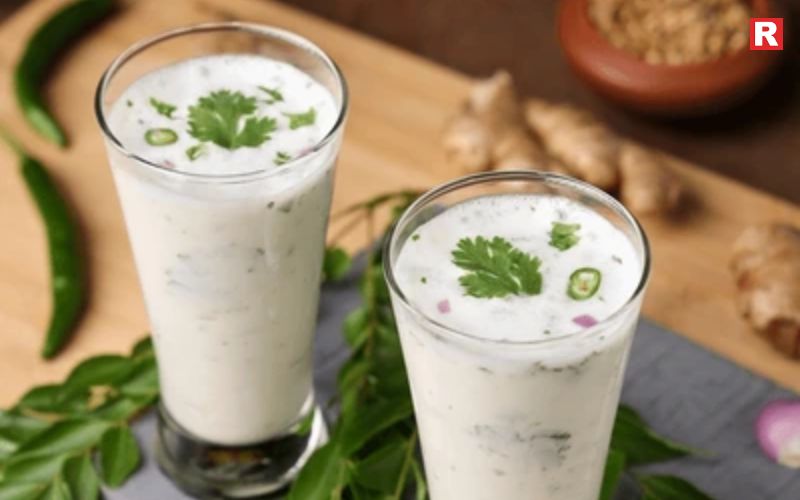
Buttermilk is another popular choice during Navratri fasting. Made by mixing curd with water, it is light yet filling. Many people feel heaviness after their fasting meals. Buttermilk helps ease that discomfort. It keeps the stomach cool and supports digestion. A pinch of roasted cumin or rock salt makes it tastier and sattvik. Its natural cooling effect is helpful in warm weather when dehydration is common. Unlike carbonated drinks, buttermilk never harms the stomach. It keeps acidity under control and prevents bloating. For people who want a soothing drink that is also healthy, buttermilk is perfect. Taken in the afternoon, it refreshes the body and mind. Simple, cooling, and nourishing, it is one of the safest drinks for fasting.
Why choose it?
- Prevents acidity during fasting
- Keeps the body cool in warm weather
- Boosts digestion naturally
Know more: 12 Delicious High-Protein Foods to Eat Daily for a Healthier You
3. Lemon Water with Honey – Quick Refreshment

Lemon water with honey is a simple yet powerful fasting drink. It is easy to prepare and refreshing to taste. Lemon provides Vitamin C, which improves immunity. Honey works as a natural energy booster. Together, they create a drink that fights fatigue during fasting hours. Many people drink it in the morning or evening for a quick lift. It helps in digestion and keeps constipation away. The drink also prevents dehydration by restoring fluids. It is light on the stomach, unlike heavy fruit juices. The natural sweetness of honey makes it enjoyable without refined sugar. Lemon water with honey is a trusted way to stay fresh, hydrated, and active while fasting. It brings both energy and health benefits.
Why choose it?
- Refreshes instantly
- Keeps you energetic during fasting hours
- Improves digestion and prevents constipation
4. Herbal Teas – Gentle & Soothing

Herbal teas are a smart choice during Navratri fasting. They replace regular tea or coffee in a healthy way. Teas made from tulsi, ginger, mint, or cinnamon are gentle on the stomach. They do not have caffeine, which often causes dehydration. Instead, they hydrate the body and provide calmness. Herbal teas also improve digestion and reduce bloating. Tulsi strengthens immunity, while ginger eases discomfort. Mint adds freshness, and cinnamon helps balance the body. Many people drink herbal teas in the evening to relax after fasting. Warm and soothing, they create comfort for both body and mind. Herbal teas are sattvik-friendly and natural. They are a safe and healing option for those who want light yet hydrating drinks during Navratri.
Why choose it?
- Caffeine-free alternative to regular tea
- Helps with digestion and bloating
- Strengthens immunity naturally
5. Fresh Fruit Juices – Natural Sweetness
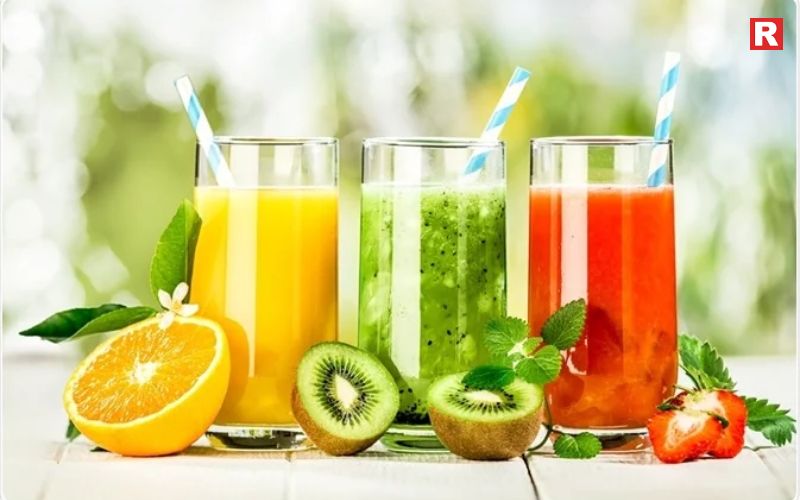
Fresh fruit juices are loved during fasting for their natural taste and health benefits. Fruits like apple, pomegranate, and watermelon are rich in water and nutrients. When juiced, they provide instant hydration. Unlike packaged juices, fresh ones have no added sugar or preservatives. They are filled with natural vitamins, minerals, and antioxidants. These juices keep the body refreshed and active during long fasting hours. Pomegranate juice boosts energy, while watermelon cools the body. Apple juice provides gentle sweetness without heaviness. They are best taken in the daytime when energy dips. Fresh juices are also good for skin health, adding glow and freshness. They are light, tasty, and filling. For a natural dose of hydration, fruit juices are a perfect choice.
Why choose it?
- Hydrates and refreshes
- Gives instant natural energy
- Rich in antioxidants for skin glow
6. Smoothies with Yogurt & Fruits

Smoothies are a filling and hydrating drink during Navratri fasting. They are made by blending yogurt with fruits like banana, apple, or papaya. This makes a thick and creamy drink. Smoothies combine hydration with nutrition in one glass. Yogurt provides protein and probiotics that support digestion. Fruits add vitamins, minerals, and natural sweetness. Together, they keep the stomach full for longer hours. Smoothies are especially helpful in the evening after breaking the fast. They give energy and are easy to digest. Unlike heavy foods, they never cause discomfort. Smoothies are also versatile, as they can be made with different fruits. They are simple, tasty, and wholesome. For those who want both hydration and nourishment, smoothies are a great option.
Why choose it?
- Combines hydration with nutrition
- A filling option for suhoor or evening meals
- Good source of protein and probiotics
Also check: 6 Unexpected Benefits of Eating Jackfruit (Kathal) – Nature’s Spiky Surprise!
7. Warm Milk with Cardamom or Saffron
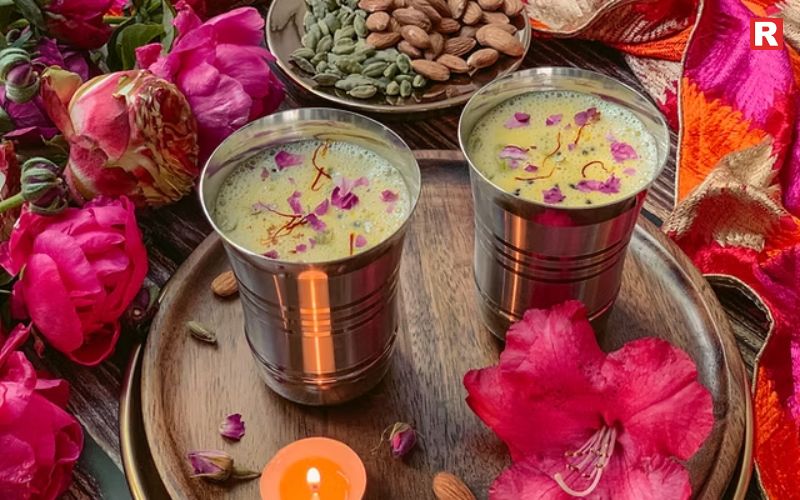
Warm milk with cardamom or saffron is a traditional drink during fasting. It is soothing, nourishing, and calming. Milk provides calcium and protein, which strengthen the body. Adding cardamom makes it fragrant and helps in digestion. Saffron brings warmth and improves mood. This drink is best taken at night before sleep. It keeps the stomach full and prevents midnight hunger. The calming effect of warm milk helps the body relax after a day of fasting. Unlike caffeinated drinks, it does not disturb sleep. Instead, it supports rest and recovery. Many families use this drink as a ritual during festivals. It is simple yet powerful in its benefits. Warm, comforting, and nutritious, it completes a healthy fasting routine with ease.
Why choose it?
- Keeps you full at night
- Helps relax the body
- Strengthens bones and immunity
Smart Tips to Stay Hydrated During Navratri
Drinks are important, but how you consume them matters too. Here are some practical hydration tips:
- Sip, Don’t Gulp – Drink water in small sips regularly instead of drinking large amounts at once.
- Choose Fresh Over Packed – Avoid packed juices and aerated drinks, as they often contain sugar and preservatives.
- Limit Caffeine – Too much tea or coffee causes dehydration. Replace with herbal teas.
- Include Hydrating Fruits – Watermelon, cucumber, oranges, and papaya are great choices during Navratri.
- Listen to Your Body – Don’t wait until you feel thirsty. Thirst is already a sign of dehydration.
Check more: Pouring Festive Cheer: Beers & Spirits Winning Consumer Carts This Season
5 Delicious Snacks to Enjoy This Navratri Season
10 Must-Try Goan Dishes That Define Its Rich Food Culture
A Quick Drinks Guide for Navratri
Drink | Key Benefit | Best Time to Have |
|---|---|---|
Coconut Water | Replenishes electrolytes | Morning or post-afternoon |
Buttermilk | Cooling and aids digestion | Afternoon |
Lemon Honey Water | Refreshing, boosts energy | Mid-morning or evening |
Herbal Tea | Caffeine-free, soothing | Evening |
Fresh Juice | Natural sugars, antioxidants | Midday |
Smoothie | Filling and nutritious | Evening |
Warm Milk | Relaxing, improves sleep | Night |
Happy Fasting!
Navratri fasting is not only a spiritual practice but also a way to refresh the body. When done correctly, it can improve both health and energy. While people often focus on what foods to eat during fasting, drinks are equally important. Proper hydration keeps the body active and prevents fatigue. It also supports digestion and helps maintain a clear mind throughout the day.
Choosing the right drinks can make fasting easier and more enjoyable. Coconut water, buttermilk, herbal teas, fruit juices, and smoothies are all excellent choices. Each of these beverages provides hydration, energy, and essential nutrients. Drinking them at the right time ensures that the body stays balanced during fasting hours. It is important to sip water and other drinks regularly. Listening to the body’s needs and staying consistent with fluids is key. With proper hydration, fasting becomes a smooth, healthy, and fulfilling experience.
Disclaimer: This article is intended for general informational purposes only and should not be considered a substitute for professional medical advice, diagnosis, or treatment. Readers are advised to consult a qualified healthcare professional before making any dietary, health, or lifestyle changes. Persons with diabetes/specific allergies/special conditions are advised to follow their doctor's advice.
Next Story
7 Reasons to Add Macadamia Nuts to Your Daily Diet

Macadamia nuts are more than just a tasty snack. Their rich and buttery flavor makes them a favorite among many. People enjoy them as a treat, but they also offer several health benefits. These nuts are packed with important nutrients that support the body in different ways. For those who want to eat healthy without giving up on good taste, macadamia nuts are an excellent choice. They are natural and full of nutrients like healthy fats, fiber, vitamins, and minerals. Adding them to everyday meals is simple and doesn’t require much effort. Macadamia nuts can be eaten as a quick snack or added to salads, breakfast bowls, or desserts. Even a small amount each day can make a difference in your health.
These nuts help in improving heart health, boosting energy, supporting digestion, and keeping the skin healthy. They are a smart option for people of all ages. With their unique taste and health benefits, macadamia nuts are an easy and enjoyable way to stay fit and feel good every day. Starting small can lead to big benefits in the long run.
Read more: High Protein Indian Meals You Should Try
Top 10 Health Benefits of Eating Dry Fruits Daily
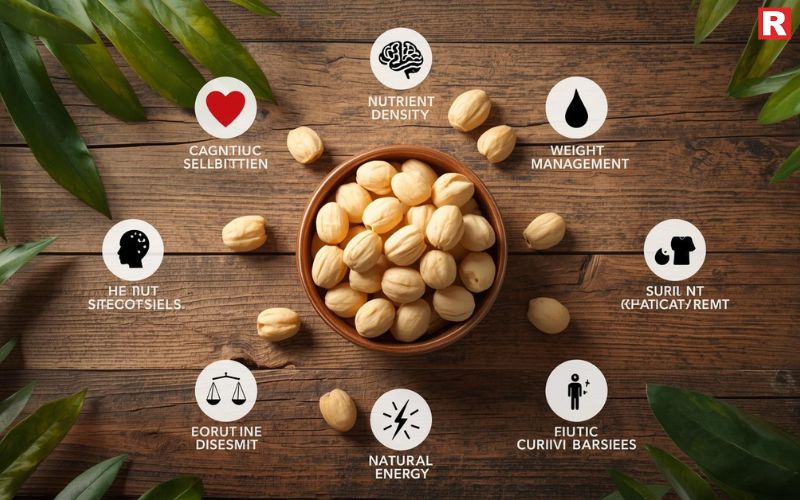
1. Heart-Healthy Goodness
One of the biggest reasons to eat macadamia nuts is that they support heart health. These nuts are full of monounsaturated fats. These fats are the same kind that you find in olive oil, which is known to be good for your heart. Eating these healthy fats helps lower bad cholesterol (LDL) and can increase good cholesterol (HDL). This balance is important for keeping your heart healthy. Studies show that regular intake of monounsaturated fats may reduce the risk of heart diseases like heart attacks. Including just a handful of macadamia nuts in your diet can be an easy way to support your heart without making big changes.
2. A Boost for Brain Health
What you eat affects how your brain works. Macadamia nuts are great brain food. They contain omega-9 fatty acids, also known as oleic acid, which helps protect your brain cells from damage. These nuts also have antioxidants that fight harmful free radicals. Free radicals can cause stress in the brain, leading to memory loss or other issues. Regular consumption of macadamia nuts may help improve memory, focus, and mental clarity. For students, professionals, or anyone who needs to stay sharp, adding macadamia nuts to your diet can give your brain the fuel it needs to perform better.
3. Packed with Nutrients
Macadamia nuts are more than healthy fats. They are a good source of several essential vitamins and minerals. For example, they are rich in vitamin B1 (thiamine), magnesium, manganese, and copper. Vitamin B1 helps your body turn food into energy. Magnesium supports muscle and nerve function. Manganese and copper play a role in bone health and enzyme production. These nutrients work together to keep your body running smoothly. If you have a busy lifestyle, eating macadamia nuts can help you stay energized and balanced.
4. Great for Weight Management
It may sound strange that nuts, which are high in calories, can help you manage weight. But macadamia nuts are an exception. They are full of healthy fats and fiber, which help you feel full for longer. When you feel full, you are less likely to snack on unhealthy foods like chips or sweets. Eating a small portion of macadamia nuts between meals can prevent overeating and keep your weight in check. Also, these nuts don’t cause sharp spikes in blood sugar, unlike processed snacks. This slow and steady energy release helps you stay satisfied throughout the day.
Know more: 6 Benefits of Drinking Black Coffee
5. Supports Healthy Skin
Your skin is the largest organ in your body. What you eat can have a direct impact on its health. Macadamia nuts are especially good for the skin because they contain a rare type of fat called palmitoleic acid (omega-7 fatty acid). This nutrient helps keep your skin hydrated and soft. It also plays a role in repairing damaged skin and protecting it from aging signs like wrinkles and dryness. Adding macadamia nuts to your diet can help you glow from the inside out. For people living in harsh weather conditions or with dry skin, this natural boost is especially helpful.
6. Gut-Friendly Snack
A healthy gut is key to overall wellness. Macadamia nuts are rich in fiber, which helps your digestive system work properly. Fiber promotes healthy bowel movements and prevents constipation. More importantly, fiber feeds the good bacteria in your gut. These bacteria are essential for digestion, immune function, and even mood regulation. Eating macadamia nuts regularly supports a balanced gut microbiome. This means you will feel lighter, more energetic, and less bloated.
7. A Natural Energy Booster
If you are always on the go, macadamia nuts can be your secret weapon. They are calorie-dense, which means they provide a lot of energy in a small portion. But unlike sugary snacks that cause energy crashes, macadamia nuts give you a steady release of energy. This helps you stay active without feeling tired. A handful of these nuts before a workout or during a long day can keep you going. They are especially useful for athletes, students, or anyone with a demanding schedule.
Also check: 5 Foods to Avoid for Better Cholesterol
These 7 Foods Can Help You Cool Your Stomach in Summer
From Murukku to Misal: Regional Snack Stars Winning Big on Q-Commerce Platforms
How to Add Macadamia Nuts to Your Daily Diet
Now that you know the benefits, you might be wondering how to include macadamia nuts in your meals. Here are some simple and effective ways:
- As a snack: Eat them raw or roasted. A handful is enough for a quick energy boost.
- In smoothies: Add a few nuts for extra creaminess and nutrients.
- In salads: Sprinkle chopped macadamia nuts over your favorite salad for texture and flavor.
- With breakfast: Mix them into oatmeal, yogurt, or cereal.
- In baked goods: Add them to muffins, cookies, or granola bars.
- With desserts: Use them as toppings for ice cream or chocolate-based treats.
You don’t have to make big changes. Even a small portion every day can make a difference.
Final Thoughts
Macadamia nuts are a simple yet powerful way to improve your health. From supporting your heart to boosting your brain and keeping your skin healthy, they are a nutrient-rich option for everyone. You don’t need to overhaul your entire diet to enjoy their benefits. Just add them gradually, and you’ll start to feel the difference. For those looking for a natural, tasty, and nutritious snack, macadamia nuts are the perfect choice. Whether you are a busy professional, a student, or someone focused on wellness, they can help you stay energized, healthy, and balanced every day. Start today—make macadamia nuts a part of your daily routine and give your body the care it deserves.
Next Story
5 Delicious Sago Desserts to Enjoy This Monsoon

The monsoon carries a charm that touches every sense. The sound of raindrops on the roof, the smell of wet earth, and the cool breeze create a calm and inviting mood. It is a season when many people look for something warm and sweet to enjoy at home. For some, it brings back memories of family kitchens and simple comfort foods. One such memory is of a grandmother serving steaming bowls of sago kheer on rainy evenings. Sago, known as "sabudana" in many parts of India, is soft, soothing, and gentle on the stomach. It is often linked with fasting, but its use goes far beyond that.
These tiny pearls can be turned into many delicious desserts, both warm and chilled. They pair well with milk, coconut, jaggery, and even seasonal fruits. During the rainy season, sago desserts bring warmth to cold evenings and a light sweetness to damp days. From creamy kheer to tropical puddings, this humble ingredient offers endless possibilities for creating treats that make monsoon moments special.
Read more: Sip Like a Pro: 8 Coffees Every True Coffee Lover Must Try
12 Delicious High-Protein Foods to Eat Daily for a Healthier You
Why Sago is Perfect for Monsoon Desserts
Sago pearls are made from the starch of tropical palms. They are gluten-free, easy to digest, and provide quick energy. In monsoon, when the body craves warmth and comfort, sago becomes the perfect ingredient. It pairs beautifully with milk, coconut, jaggery, or even fresh fruits.
One of the best things about sago is its texture. When cooked well, the pearls become soft and slightly chewy, making every spoonful enjoyable. They also take on the flavor of the ingredients they are cooked with, so you can be creative with combinations.
1. Sago Kheer (Sabudana Payasam)
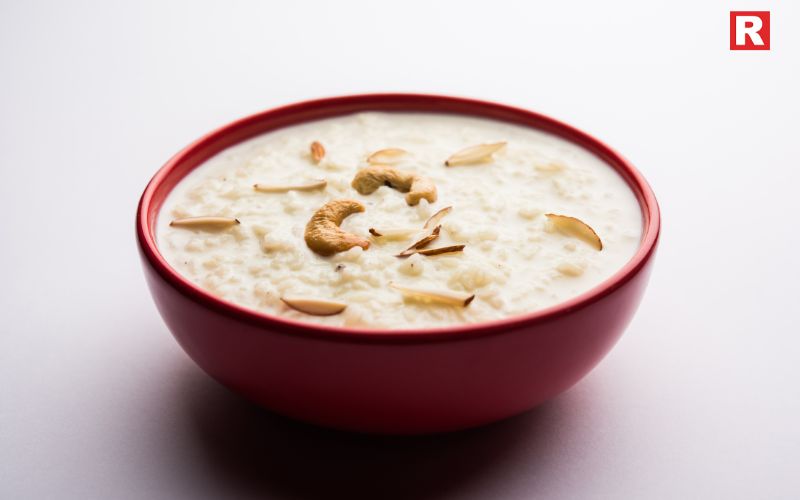
Sago kheer, also known as sabudana payasam, is a timeless dessert loved across many homes. It is made by cooking soft, translucent sago pearls in milk until they turn creamy and smooth. Sugar adds sweetness, while cardamom gives a gentle fragrance. Some like to add saffron for a rich colour and flavour. Garnishing with toasted almonds or pistachios makes it even more special. The texture is soft and comforting, perfect for cold or rainy days. Served warm, it brings a sense of warmth and care, making it more than just a sweet dish but a reminder of homely comfort.
How to make it:
- Soak half a cup of sago in water for 30 minutes.
- Drain and cook in two cups of milk until the pearls turn translucent.
- Add sugar, crushed cardamom, and a few strands of saffron.
- Let it simmer until it thickens slightly.
- Garnish with toasted almonds and pistachios.
Know more: High Protein Indian Meals You Should Try
2. Sago Coconut Pudding
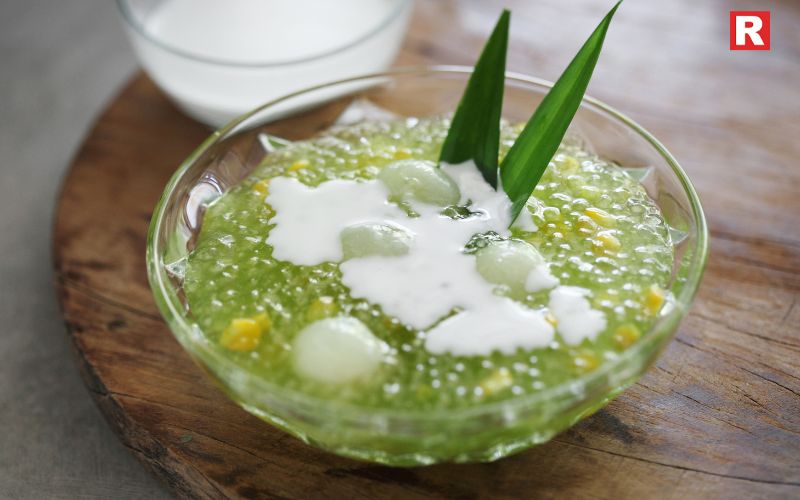
Sago coconut pudding is a light and soothing dessert with a hint of tropical flavour. It is made by cooking soft sago pearls in creamy coconut milk until they blend together smoothly. A touch of sugar or palm sugar adds gentle sweetness without overpowering the taste. The pudding can be served warm for comfort or chilled for a refreshing treat. Its smooth texture and mild coconut aroma make it perfect for a relaxed afternoon or a humid monsoon day. Simple to prepare yet rich in taste, this pudding is a delightful way to enjoy sago in a different and refreshing style. This dessert is light yet indulgent, perfect for a humid monsoon day when you want something cool and not too heavy.
How to make it:
- Soak sago for 20 minutes and boil until just cooked.
- In a separate pan, heat coconut milk with a little sugar or palm sugar.
- Add the sago and cook on low heat.
- Chill before serving for a refreshing treat.
3. Sago Mango Delight

Sago mango delight is a vibrant dessert that brings together the sweetness of ripe mangoes and the soft texture of sago pearls. The sago is cooked until translucent and cooled before mixing with smooth mango puree. A little condensed milk can be added for extra creaminess. Fresh mango cubes on top give the dish a burst of flavour and colour. It is best served chilled, making it perfect for warm monsoon afternoons. The natural sweetness of mango pairs beautifully with the mild taste of sago, creating a dessert that feels both refreshing and indulgent, ideal for celebrating the season’s freshest fruit.
How to make it:
- Cook sago pearls until translucent and cool them.
- Blend ripe mango pulp with a little condensed milk.
- Mix the mango puree with the cooked sago.
- Top with diced mangoes for extra sweetness.
Also check: 5 Ways to Use Garden Cress Seeds (Halim) for Stronger Hair and Bones
4. Sago and Jaggery Pudding
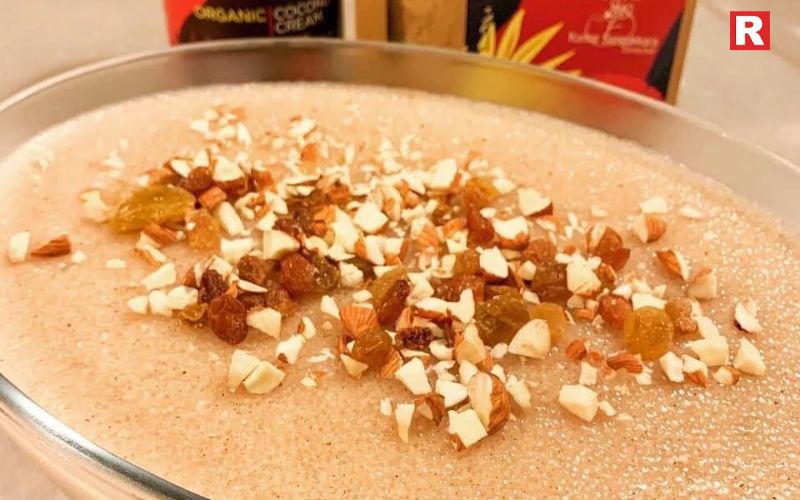
Sago and jaggery pudding is a wholesome dessert with a rich, earthy taste. The sago pearls are cooked until soft and translucent, then mixed with warm jaggery syrup. The jaggery melts into the pudding, giving it a deep golden colour and a natural sweetness. A spoon of ghee can be added for extra richness and aroma. This pudding is often served warm, making it perfect for cool, rainy evenings. It is not only delicious but also comforting, with flavours that remind many of traditional homemade sweets. Simple ingredients come together to create a dessert that is both nourishing and satisfying.
How to make it:
- Cook sago in water until almost done.
- In another pan, melt jaggery with a little water and strain to remove impurities.
- Add the jaggery syrup to the sago and mix well.
- Stir in a spoon of ghee for extra richness.
Serve this warm. It feels like comfort food for the soul, especially when the rain is pouring outside.
5. Sago Rose Falooda
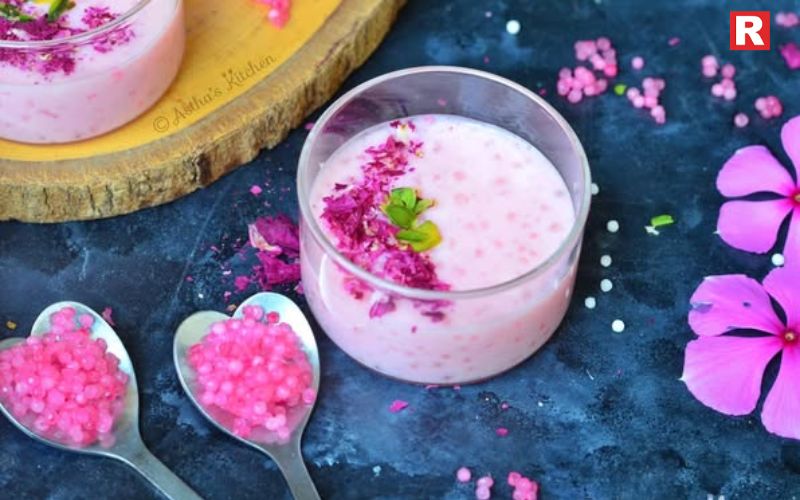
Sago rose falooda is a colourful and festive dessert that looks as good as it tastes. Soft sago pearls are layered with chilled milk and fragrant rose syrup, creating a sweet and refreshing base. Jelly cubes, falooda sev, and a scoop of ice cream can be added for extra flavour and texture. The rose syrup gives a bright pink colour and a floral aroma that pairs beautifully with the mild taste of sago. Served in tall glasses, it is a treat for both the eyes and the palate. Perfect for special monsoon evenings, it brings a touch of celebration to the table. This is best served cold and is a fun dessert to make for guests during the season.
How to make it:
- Soak and cook sago pearls until soft.
- In a glass, add rose syrup, cooked sago, and chilled milk.
- Layer with jelly cubes, falooda sev, and top with ice cream if you like.
Quick Tips for Cooking Sago Right
- Soak properly: 20–30 minutes is enough for most recipes. Over-soaking can make pearls mushy.
- Cook in enough liquid: Use 4–5 times more water or milk than sago.
- Stir gently: This keeps the pearls intact and prevents clumping.
- Check doneness: Pearls should look translucent and feel soft in the center.
Serving Ideas to Make It Extra Special
- Garnish with saffron strands for a rich aroma.
- Add toasted nuts for crunch.
- Serve in clay cups or small glass jars for a rustic, homely touch.
- Use seasonal fruits like mango, lychee, or berries for freshness.
Check more: 6 Unexpected Benefits of Eating Jackfruit (Kathal) – Nature’s Spiky Surprise!
These 7 Foods Can Help You Cool Your Stomach in Summer
Top 5 States With the Spiciest Food in India
Final Thought
Monsoon is a season that slows life down. It is a time to notice the small things and enjoy them. Warm, comforting food feels even better when the rain is falling outside. Sago desserts are perfect for this season. They are soft, sweet, and full of flavour. They also carry a sense of nostalgia, reminding many of family kitchens and old recipes. A bowl of hot kheer can warm the body, while a chilled coconut pudding can refresh the mind. Each dish offers its own charm on a rainy day. When the sound of rain fills the air, it is the perfect time to cook. Soak some sago, light the stove, and create a dessert that turns a simple monsoon evening into a moment to remember.
Next Story
Functional Mushrooms: The Next Big Trend in Beverages and Food Innovation

Mushrooms have moved far beyond their traditional place as a simple side dish. In 2024, they have become one of the most talked-about food and beverage trends. Across the world, cafés, restaurants, and brands are using mushrooms in many new ways. They are no longer limited to soups or pizzas. Today, they are being added to coffees, teas, snacks, and even plant-based meat products.
This change is not only about experimenting with taste. Mushrooms bring a rich, savoury flavour called umami. They also offer several natural health benefits that more people are now looking for. Functional mushrooms such as reishi, lion’s mane, and cordyceps are being used for their benefits for immunity, focus and energy. Global interest in mushroom drinks has grown at a fast pace. Searches for these beverages have gone up by over 500 percent in 2024. This rise shows how quickly people are turning towards mushrooms as part of their daily routine. Chefs and brands are now looking at mushrooms as a way to create fresh and healthy menus.
Read more: 12 Delicious High-Protein Foods to Eat Daily for a Healthier You
6 Unexpected Benefits of Eating Jackfruit (Kathal) – Nature’s Spiky Surprise!
What Makes Mushrooms Special
Mushrooms are fungi. They are not plants. They grow naturally and are rich in nutrients. They also add a deep savory flavor called umami, which makes food taste better.
Many chefs like mushrooms because they are sustainable. They grow fast, do not need much water, and leave a low impact on the environment. They also work well with both vegetarian and non-vegetarian dishes.
The Rise of Functional and Adaptogenic Mushrooms

There is a special category of mushrooms called functional mushrooms. These mushrooms are also called adaptogenic mushrooms because they help the body handle stress and improve wellness.
Some of the most popular ones are:
- Reishi – Known as the “mushroom of immortality” in traditional Chinese medicine. It is linked to better immunity and calmness.
- Lion’s Mane – Often used to support brain health, memory, and focus.
- Cordyceps – Believed to improve stamina and energy levels.
- Chaga – Valued for its antioxidants.
These mushrooms are not new. They have been used in traditional medicine for hundreds of years. But now they are being added to modern products.
Know more: Power-Packed Mornings: 8 Protein-Rich Vegetarian Indian Breakfast Ideas to
Mushrooms in Beverages: A New Revolution

The biggest buzz right now is about mushroom-based drinks.
- Mushroom Coffee: A mix of coffee and functional mushrooms. It has less caffeine and more natural wellness benefits.
- Mushroom Tea: Herbal teas with mushrooms for immunity and stress support.
- Ready-to-drink mushroom lattes: Packaged beverages that are easy to grab on the go.
Consumers in the US, Europe, and now Asia are curious about these drinks. They are looking for alternatives that boost focus, calmness, and energy without the jitters of coffee.
Food with Mushrooms
Mushrooms are also making their way into other foods:
- Protein balls and energy bites made with mushroom powders.
- Plant-based meat alternatives where mushrooms provide texture and flavor.
- Mushroom broths and soups that taste rich and healthy.
- Even chocolates and granola bars are now using mushrooms as a key ingredient.
These products fit perfectly with the growing demand for natural and functional snacks.
Opportunities for Indian Restaurants and Cafés
This is the right time for Indian cafés and restaurants to notice the mushroom trend. City customers are now open to new wellness food and drinks. They want fresh ideas on menus. Brands that try mushroom-based coffees, teas or snacks can stand out and attract curious young people.
Adding mushroom-based drinks or snacks to a menu can make a brand stand out. Imagine:
- A café offering Lion’s Mane coffee to office-goers.
- A bakery selling Reishi protein balls as a healthy snack.
- Restaurants are experimenting with mushroom-based meat alternatives in Indian curries.
These ideas can create a fresh experience for customers who want something modern and healthy.
Also check: Rapido Food Delivery Strategy: A New Game Plan to Beat Zomato & Swiggy
6 Common Fruits That Have the Highest Amount of Fibre: Your Tasty and Simple
Why This Trend Will Grow
- Global wellness culture: People want natural options to stay healthy.
- Changing lifestyles: More Indians are looking for food and drinks that boost focus and reduce stress.
- Innovation potential: Mushroom drinks and foods are still new in India. Early adopters will have a competitive advantage.
The Future of Functional Mushrooms
The mushroom trend in India is still new. Many people are just starting to notice how mushrooms are being used in new ways. Around the world, this trend is growing fast and it does not look like it will slow down.
Mushrooms are no longer seen only as an extra ingredient on a dish. They are now a main part of drinks, snacks and even plant-based food. They bring a strong flavour and also many natural health benefits. For chefs, cafés and food brands, mushrooms are becoming an idea to watch closely. They can be used to make menus different and more exciting. This simple ingredient is now turning into a hero on the plate and in a cup. It combines taste, wellness and new ideas.
Next Story
4 Easy High-Protein Egg Recipe Ideas For A Post-Workout Boost

Eggs have always been a popular choice after a workout. They are rich in protein and simple to prepare. When someone finishes a workout, their muscles feel tired and need food to heal. Protein helps muscles recover and grow strong. Eggs naturally provide that protein. They also have vitamins and minerals that keep the body healthy.
Many people choose eggs because they are quick to cook. They can be boiled, scrambled, or made into an omelette in a few minutes. The taste of eggs also goes well with vegetables, bread, or even chicken. This makes them a flexible ingredient in the kitchen. After a workout, eating eggs gives the body the right balance of nutrition. Trainers and doctors often suggest adding eggs to a daily diet. Four simple dishes can be made at home. These are egg white omelette with vegetables, avocado and boiled egg toast, scrambled eggs with cottage cheese, and spinach and chicken egg wrap. Each dish is high in protein and ideal for a post-workout meal.
Read more: 12 Delicious High-Protein Foods to Eat Daily for a Healthier You
7 Healthy Chicken Dishes to Maintain Your Diet
The Science Behind the Protein Punch
After a workout, muscles break down. To grow stronger, they need protein. Eggs have all nine essential amino acids. This helps repair and build muscles faster. One egg has about 6 grams of protein. If you eat more egg whites, you get even more protein with less fat. This is why eggs are called a complete protein food.
Eggs also have vitamins like B12 and D. These keep your energy high. They also have minerals like iron and zinc. These help you recover and stay strong. Eggs are also cheap and easy to find. You can cook them in so many ways.
1. Protein-Packed Egg White Omelette with Veggies
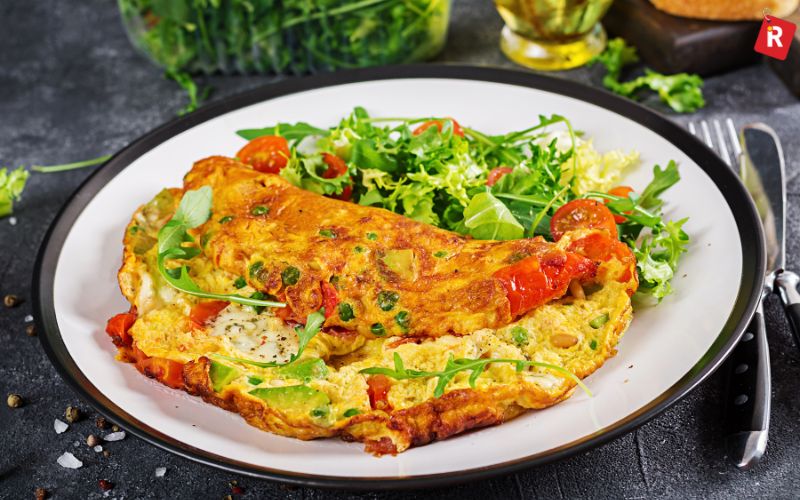
The egg white omelette with vegetables is a simple and healthy meal. It is light and high in protein. It is made with egg whites, a little whole egg, and fresh vegetables like spinach, peppers, and onions. It cooks fast and tastes fresh. It is a good choice after a hard workout. It helps muscles recover and keeps the stomach full without feeling heavy.
Ingredients:
- 5 egg whites
- 1 whole egg
- 1 cup chopped spinach, bell peppers, and onions
- A pinch of salt and pepper
Method: Whisk the egg whites and egg. Heat a non-stick pan. Add the veggies and sauté for 2 minutes. Pour the eggs on top. Cook on low heat until set. Fold and serve.
Protein per serving: Around 20 grams.
Tip: Add a slice of brown bread on the side for some carbs.
2. Avocado and Boiled Egg Protein Toast
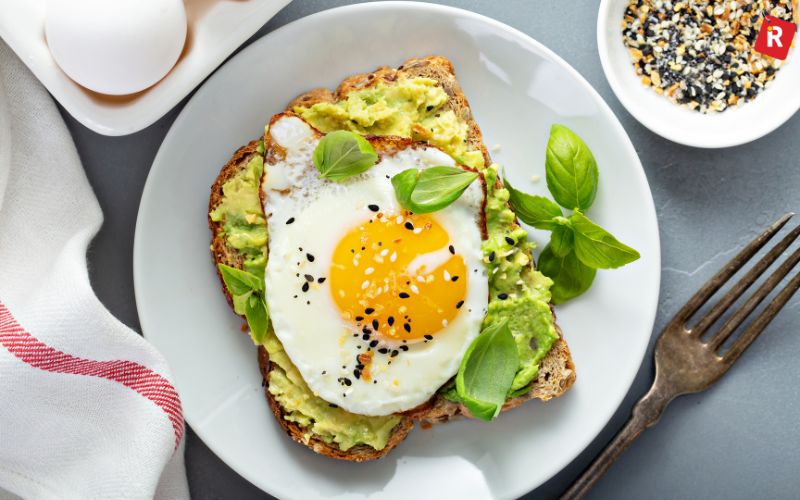
Avocado and boiled egg toast is an easy and filling snack. It has good protein and healthy fats. Whole grain bread is toasted for a crisp base. Mashed avocado is spread with a touch of lemon, salt, and pepper. Slices of boiled egg are placed on top. It is simple to make and tastes fresh. It is a good food to eat after exercise or as a light meal.
Ingredients:
- 2 boiled eggs
- 1 ripe avocado
- 2 slices of whole-grain bread
- A pinch of salt, pepper, and lemon juice
Method: Toast the bread. Mash the avocado with lemon juice, salt, and pepper. Spread it on the toast. Slice the boiled eggs and place on top. Sprinkle some more pepper.
Protein per serving: Around 15 grams.
Tip: Add some seeds like pumpkin seeds for crunch.
Know more: What Happens When You Consume 1 Avocado Daily?
3. Scrambled Eggs with Cottage Cheese
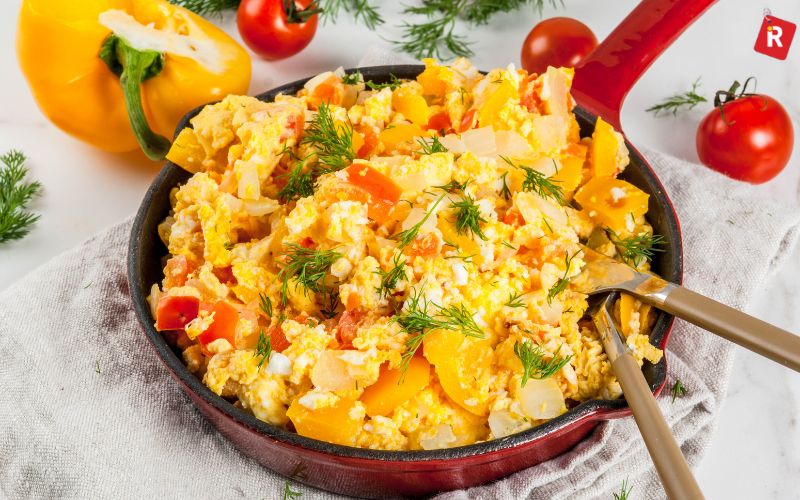
Scrambled eggs with cottage cheese is a soft and rich meal. It is full of protein and easy to make. Eggs are cooked slowly in a pan. Small cubes of cottage cheese are mixed in while cooking. The cheese melts slightly and gives a creamy taste. A little salt and pepper add simple flavour. It keeps the body full and gives strength after a workout or during breakfast.
Ingredients:
- 3 whole eggs
- 100 grams cottage cheese (paneer)
- A pinch of salt and pepper
- 1 tsp olive oil
Method: Heat oil in a pan. Break the eggs and scramble them. Add cottage cheese cubes. Cook for 2-3 minutes until soft. Season with salt and pepper.
Protein per serving: Around 22 grams.
Tip: Use low-fat paneer if you want fewer calories.
4. Spinach and Chicken Egg Wrap

The spinach and chicken egg wrap is a strong and balanced meal. It has protein from eggs and chicken and carbs from a soft tortilla. A thin omelette is made first. Grilled chicken pieces and fresh spinach are placed on top. The wrap is rolled and served warm. It is easy to hold and eat. This dish gives good energy and helps in recovery after a workout.
Ingredients:
- 2 whole eggs
- 2 egg whites
- 100 grams grilled chicken (shredded)
- 1 whole-wheat tortilla
- 1 cup fresh spinach
- A pinch of salt and pepper
Method: Whisk the eggs and cook them as a thin omelette. Lay the omelette on a tortilla. Add grilled chicken and spinach on top. Roll it up like a wrap.
Protein per serving: Around 30 grams.
Tip: Add a little hummus inside for taste.
Tips to Maximize Your Post-Workout Meal
Eating eggs after a workout gives the body protein. Along with protein, the body also needs some carbs. Carbs help refill energy that is lost during exercise. A slice of whole grain bread, a small roti, or some rice with eggs can be a good choice. Water is also important after a workout. Drinking enough water helps the body stay fresh and avoids tiredness. Fruits can also be added to the meal. A banana, an apple, or a few slices of papaya give natural sugar, vitamins, and fiber. These help the muscles recover faster. A small balanced plate with eggs, some carbs, water, and fruits can be simple but very effective. This kind of meal supports the body, builds strength, and helps the person recover after exercise.
Also check: Top 10 Health Benefits of Eating Dry Fruits Daily
7 Protein-Rich Vegan Foods That Pack a Punch – No Meat, No Problem!
7 Chinese Dishes That Can Be a Healthy Option for Your Diet
Closing Thought
Eggs are one of the simplest foods to add to a daily diet. They are easy to cook, light on the pocket, and full of protein. This makes them a smart choice after a workout. When the body feels tired, eggs help muscles recover and grow. They also bring taste to the plate without taking much time to prepare. These four recipes – omelette with vegetables, avocado and egg toast, scrambled eggs with cottage cheese, and chicken and spinach wrap – are healthy options. Each dish gives a good amount of protein and can be made in minutes. They are easy to make at home with simple ingredients. Eating these recipes after a workout can support recovery. Good food and fitness can come together in a simple way.
Next Story
Oats vs. Muesli: Which Breakfast Option Is Better For Weight Loss?

If someone is trying to lose weight, breakfast can make a big difference. A healthy start keeps energy levels steady and controls hunger through the day. Two popular choices seen in almost every store are oats and muesli. Both come in neat packs with words like “wholesome,” “natural,” or “high fiber” on them. They sound good and look healthy. But not all healthy foods work the same for weight loss.
Oats are plain, simple, and clean. Muesli is colorful, tasty, and filled with different ingredients. Some people feel full after eating oats. Others prefer the mix and crunch in muesli. But calories, sugar, and fiber content can be very different in the two. That’s why it’s important to know what you’re really eating. It’s not about following a food trend. It’s about picking what suits your goals and routine. So before filling up your bowl, take a closer look. This simple guide will help clear the confusion and show which breakfast works better for weight loss.
Read more: 7 Healthy Chicken Dishes to Maintain Your Diet
12 Delicious High-Protein Foods to Eat Daily for a Healthier You
Oats vs Muesli: The Breakfast Battle Begins
In the world of weight loss breakfasts, oats and muesli are top picks. Oats are simple and clean. Muesli looks more fun and fancy. Both are rich in nutrients, but not all calories are created equal. It’s time to see which one fits your weight loss goals better.
| Factor | Oats | Muesli |
|---|---|---|
| Calories (per bowl) | Lower | Higher |
| Sugar | None (plain) | Can be high |
| Fiber | High | Moderate to high |
| Prep Time | 5–15 mins | Ready to eat |
| Protein | Moderate | Higher (if nuts) |
| Taste | Customizable | Naturally tasty |
- Choose oats if you’re on a strict weight-loss plan, want fewer calories, and prefer a clean meal.
- Choose muesli if you need more protein, like flavor, and are okay with checking the label.
What’s in Your Bowl?
- Oats are made from whole oat grains. They are often sold in three main forms — rolled oats, instant oats, and steel-cut oats. They’re all-natural, with no added sugar.
- Muesli is a mix. It usually includes rolled oats, nuts, seeds, dried fruits, and sometimes sugar or honey. Some types are raw, while others are toasted. Always read the label because some versions are loaded with added sugar.
Calories & Carbs: Who Keeps It Lighter?
Oats and muesli may look similar, but they differ in calories and how they affect the body. Plain oats, without milk or toppings, have around 150 calories per bowl. They are simple and clean, with no added sugar or fats. Muesli, on the other hand, can have up to 300 calories per serving. That’s because it often includes dried fruits, nuts, seeds, and sometimes sweeteners.
Oats also have a lower glycemic index. That means they release energy slowly and help people stay full longer. It also helps in keeping sugar levels steady. Muesli may offer more variety, but it can spike energy quickly and then drop it. For people trying to lose weight, oats may be a safer and lighter choice. They keep hunger in check and are easy to digest.
Know more: Why Should You Soak Mangoes Before Eating?
Protein Punch & Fiber Fix
Oats and muesli are both good for health, especially when trying to lose weight. But each has its own strengths. Here’s a quick look:
- Fiber content: Both are rich in fiber, but oats have more beta-glucan. This special fiber helps lower cholesterol and keeps the stomach full for longer.
- Appetite control: The fiber in oats works slowly in the body. It helps control hunger and stops people from snacking between meals.
- Protein boost: Muesli has more protein because it contains nuts, seeds, and sometimes grains. This makes it a better choice for people who exercise or want muscle strength.
- Fuller feeling: Muesli may feel more satisfying after a meal, while oats are better for slow energy and digestion.
Both are healthy—the choice depends on your goal.
Bland vs. Grand?
Many people say oats are plain. That’s true, but it also means they’re a blank canvas. You can add fruits, cinnamon, or a spoon of peanut butter to make it tasty without ruining your diet.
Muesli is naturally more flavorful because of the mix. It can feel more like a treat. But again, watch out for added sugar or oil-roasted nuts.
Also check: Power-Packed Mornings: 8 Protein-Rich Vegetarian Indian Breakfast Ideas
Who Saves More Morning Minutes?
Oats and muesli differ in how long they take to prepare. Here's a quick look at both:
- Steel-cut oats: These are the least processed and take the longest to cook, around 15 minutes. They have a chewy texture and are very filling.
- Rolled and instant oats: Rolled oats cook in about 5 minutes. Instant oats are the fastest, ready in just 2 minutes, but they are more processed and may not be as filling.
- Muesli: No cooking needed. Just mix it with milk or yogurt and eat. It’s quick and easy, especially for busy mornings.
- Time-saving: Muesli is the better choice when someone has no time to cook. But oats offer better control over ingredients and taste.
Add-Ons Matter: Are You Making Them Unhealthy?
Be careful what you add. Both oats and muesli can turn into calorie bombs if you use too much sugar, honey, syrups, or full-fat milk.
Smarter toppings include:
- Fresh fruits
- Chia seeds
- Almond milk or toned milk
- Greek yogurt (in moderation)
What Does Your Breakfast Say About You?
Breakfast choices can say a lot about someone’s personality. People who eat oats often like structure. They follow a routine and prefer meals that are simple and clear. They enjoy planning and want to know exactly what goes into their food. Oats give them that control. The taste may be plain, but they like adding their own toppings and keeping it balanced.
On the other hand, muesli lovers enjoy variety. They like a mix of flavors and textures in one bite. These people are more open to change and enjoy exploring different tastes. Muesli gives them that fun mix of nuts, fruits, seeds, and grains. It feels exciting, even though it’s healthy. Oats are for those who love function and order. Muesli is for those who enjoy flair and surprise. Both show a different side of healthy eating. It’s not just about food — it’s also about how a person sees their day.
Check more: A Guide to Different Breads and Their Nutritional Value
What Happens When You Consume 1 Avocado Daily?
These 7 Foods Can Help You Cool Your Stomach in Summer
Meal Ideas to Keep It Fun
Oats Recipes for Weight Loss:
- Overnight oats with apple slices and cinnamon
- Masala oats with veggies
- Oat smoothie with banana and protein powder
Muesli Bowl Ideas:
- Raw muesli with almond milk and berries
- Greek yogurt with unsweetened muesli and chia seeds
- Muesli parfait with layers of fruit and low-fat yogurt
Which One Should You Choose?
Choosing between oats and muesli depends on your lifestyle and goals. If someone wants a low-calorie, simple, and filling meal, oats are a better fit. They help with weight control, keep hunger away for longer, and are easy on the stomach. People who like to plan their meals and avoid extra sugar often choose oats.
Muesli works well for those who enjoy variety and need a quick, no-cook option. It has more protein, thanks to nuts and seeds, and feels more like a complete meal. But it can also have hidden sugars and extra calories. So, oats are great for weight loss and routine eaters. Muesli suits active people who need a fast and tasty breakfast. The best part? You don’t have to pick just one. Try both on different days. Keep it balanced and simple. Your body will tell you what works best.
Next Story
What Gen Z Really Eats: 10 High-Protein Indian Meals That Don’t Taste Boring

Gen Z is changing Indian eating habits by demanding high protein without sacrificing flavor in everything from reels to actual meals. Today's young Indians are turning to traditional flavors and contemporary shortcuts to meet their macros without sacrificing taste or culture, even though protein shakes and boring grilled chicken still have a place.
These 10 high-protein Indian dishes are Gen Z-approved, full of flavor, simple to prepare, and anything but dull, whether you're a gym-goer, desk-worker, or someone simply trying to reach your daily protein goal.
1. Paneer Bhurji with Multigrain Roti
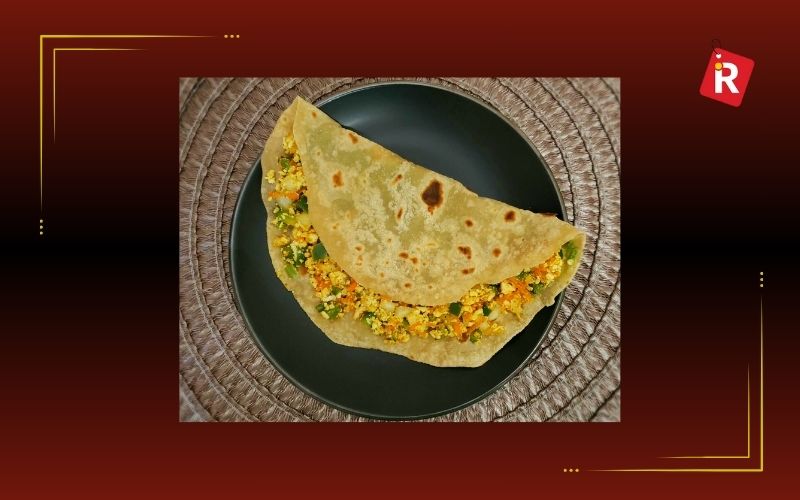
Protein: ~22g per serving
Prep Time: 15 mins
Best For: Post-workout lunch or quick dinner
Bhurji-style paneer, which consists of soft crumbled paneer mixed with a spicy masala base of tomatoes, onions, turmeric, and green chilies, is anything but boring. For freshness, squeeze in some lime juice and add some capsicum. To increase fiber and reduce glycemic load, pair with jowar or multigrain rotis.
Pro Tip: For a cleaner cut, use homemade low-fat paneer instead of regular paneer. For texture and extra protein, add crushed peanuts or hemp seeds.
2. Vegan-Friendly Soy Keema Tacos (Desi Style)
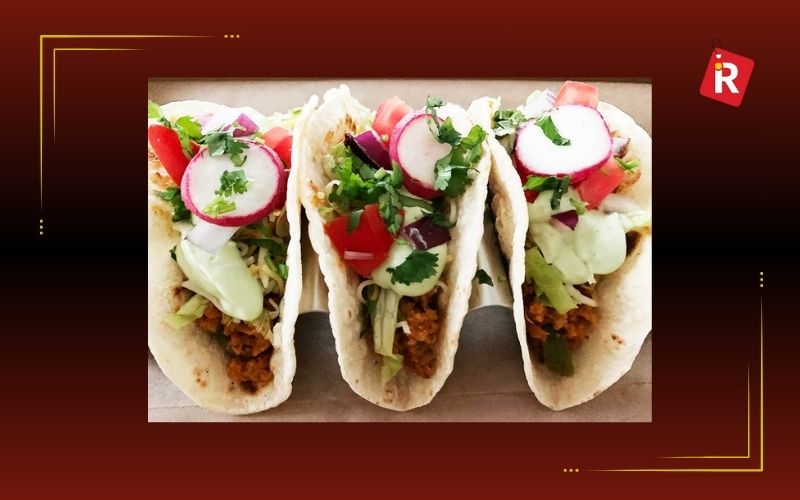
Protein: about 18g per two tacos
Ideal For: Snack boxes or meal-prep dinners
Although soy granules have no cholesterol and plant-based protein, they have the texture of minced meat. This spicy, juicy, and filling keema is made with garam masala, garlic, and onions. For crunch, stuff it into lettuce wraps or whole-grain tacos.
Pro Tip: For a naturally sweet, micronutrient-rich, and visually appealing taco filling that's ideal for gatherings, mix in some shredded carrot or beetroot.
3. Egg Chaat Bowl
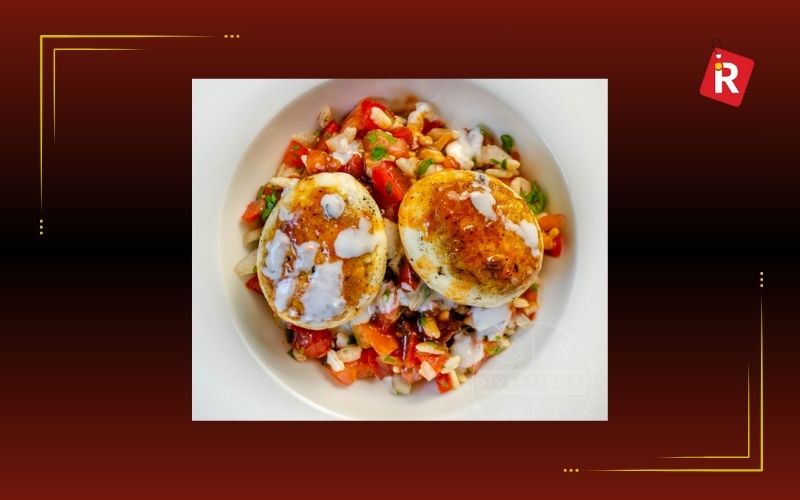
Protein: 12g of protein per two eggs
Ideal For: Lazy late-night meals or snack cravings
Chopped onions, green chilies, tomatoes, and coriander give boiled eggs a spicy chaat makeover. A 5-minute street-style protein bowl can be made by drizzling tamarind chutney or yogurt on top and adding some roasted chana or sev for texture.
Why It Works: The combination of protein and fat from eggs, the tang from the lime, and the crunch from the toppings quickly satisfies your hunger. Excellent for people who follow intermittent fasting as well.
4. Rajma Quinoa Bowl
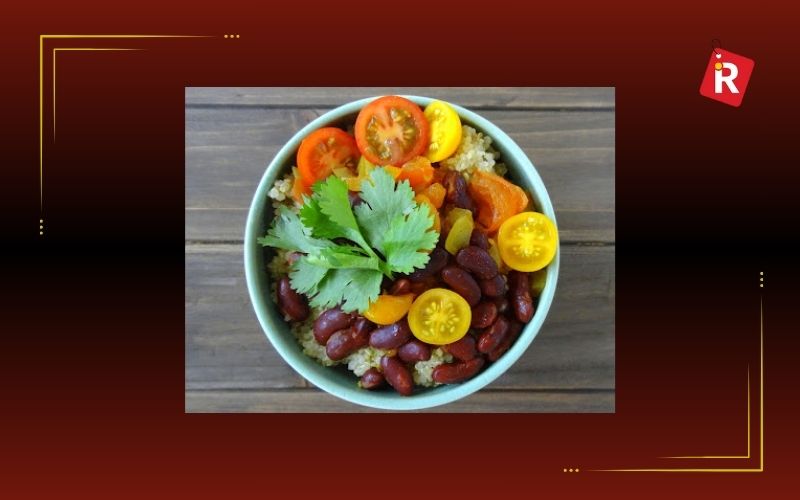
Protein: Each bowl contains about 16g of protein.
Ideal For: Office tiffins or Sunday batch cooking
Rajma is more than just a comfort food; it's also a great source of iron, slow carbohydrates, and plant protein. For more amino acids and easier digestion, serve it over quinoa rather than rice. To make it a power bowl, add grilled vegetables or a soft-boiled egg.
Pro Tip: Enhance the flavor by tempering ghee with cumin seeds and hing. For a health-blog aesthetic, garnish with roasted flaxseed, microgreens, and hung curd.
5. Lettuce Wraps with Chicken Tikka

Protein: About 28g of protein per 100g of chicken
Ideal For: Weekend meal preppers, low-carb enthusiasts, and keto dieters
Pieces of perfectly roasted Tandoori-marinated chicken wrapped in crispy romaine or iceberg lettuce. Add sliced onions and coriander on top, then drizzle with mint yogurt dip. Full flavor, no carbs.
💡 Upgrade Idea: For a sweet boost, add pomegranate or grilled pineapple chunks. It also functions well in the cold, making it suitable for picnics and lunchboxes.
6. Stir-fried Chana Sundal
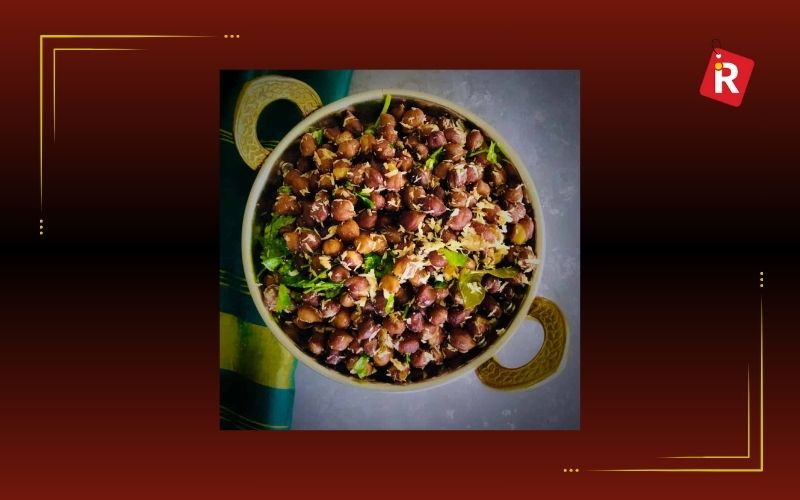
Protein: About 15g of protein per cup
Ideal For: Clean snacking, light meals, and Navratri fasts
Sundal, a temple-style snack from South India, is a simple, high-protein snack. Made with curry leaves, mustard seeds, fresh grated coconut, and kala chana (black chickpeas), it's incredibly filling, low in oil, and high in flavor.
Nutrition Add-On: To make it a total powerhouse, add baby spinach, sunflower seeds, or moringa powder.
7. Moong Dal Chilla with Stuffed Tofu
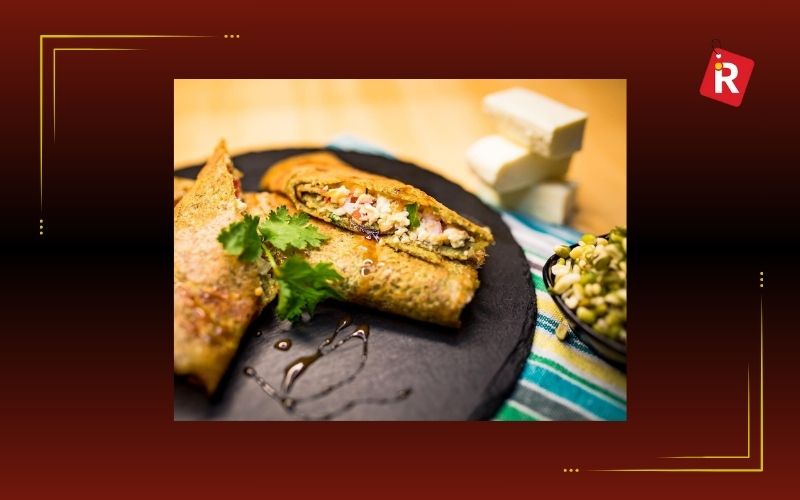
Protein: about 20g per serving (2 chillas plus tofu filling)
Ideal For: Post-workout snacks, college meals, and breakfast
Made from soaked moong dal, these flavorful Indian pancakes are naturally high in protein and free of gluten. Stuff with cheese and mashed green peas or sautéed tofu crumble. Each bite will provide you with complete protein, calcium, and fiber.
Elevate it: Serve with hot tomato garlic chutney, garnish with avocado slices, and sprinkle with sesame seeds. Your reel did indeed just go viral.
8. Fish Masala Bowl with Grilling
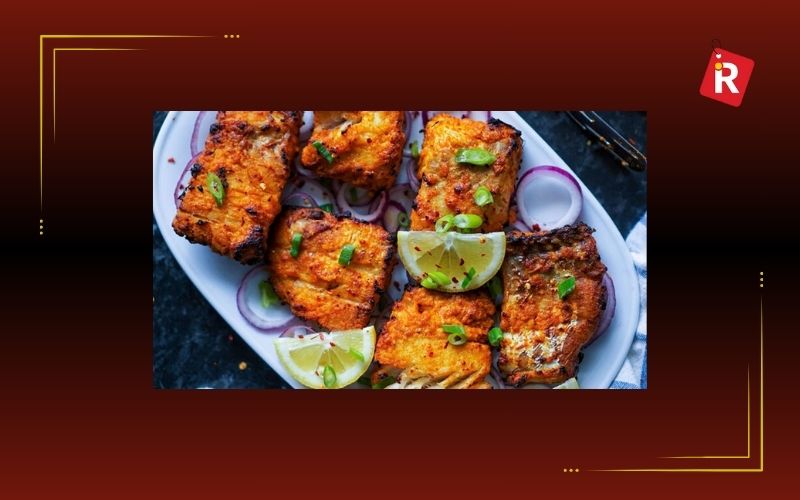
Protein: about 30g per 150g of fish
Ideal For: Brain days, keto eaters, and Sunday meal prep
Whether you choose to grill basa, salmon, or surmai, adding lemon, garlic, and a little tandoori spice results in a flavorful, flaky fillet that is high in protein and omega-3 fatty acids. Serve it with lemon pickle and sautéed greens over brown rice or millet.
Clever Add: Include hummus dip or a soft-boiled egg. Now you have an anti-inflammatory, macro-balanced meal.
9. Peanut Tadka with Sprouts Bhel
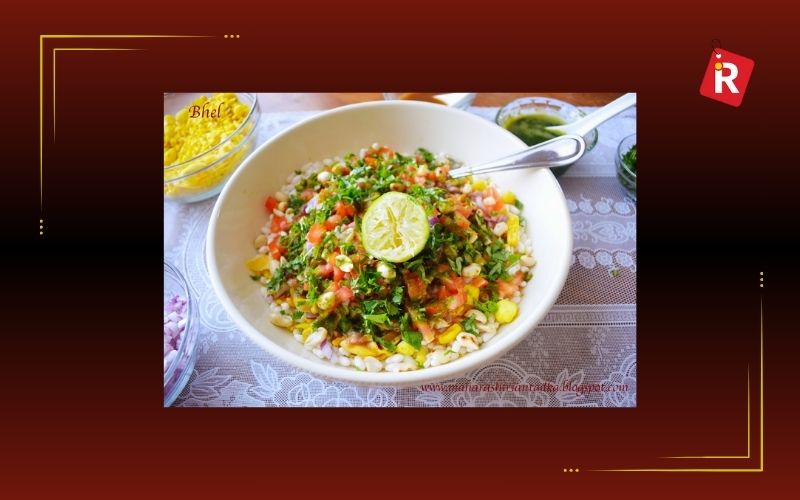
Protein: About 14g of protein per bowl
Ideal For: Detox days or evening snacks
This high-protein bhel uses sprouted moong or moth beans in place of puffed rice. Crunch, flavor, and gut health are all delivered by this dish, which is tossed with crunchy onions, tomatoes, cucumber, and lime and finished with a warm peanut tadka.
To make it a meal, top with paneer or crumbled feta and serve with boiled eggs. Serve warm with a ghee tempering in the winter or cold in the summer.
10. Grilled Tempeh with Curd Rice
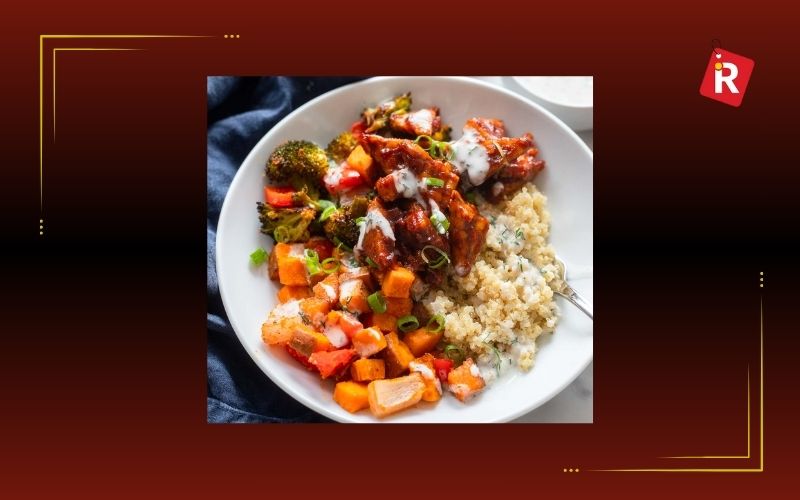
Protein: about 18g per plate
Ideal For: Light dinner days, gut resets, and recovery meals
India's go-to comfort food is curd rice, which is calming for both the stomach and the spirit. However, when combined with grilled tempeh (fermented soy cake) marinated in south Indian spices, you transform a simple dish into a powerful, protein-rich, gut-friendly meal.
Tempeh, why? It contains probiotics, is easier to digest than tofu, and provides all nine essential amino acids. This is all over Gen Z's wellness radar.
Why Gen Z Is Adoring These Dishes
- Instagrammable: These meals are shareable because of their vibrant colors, textures, and styling.
- Most take less than 30 minutes. Low Prep, High Reward
- Fusion-Friendly: Combine traditional and modern ingredients.
- Meal prep approved: excellent for cooking in large quantities
- Nutrient Dense: Equilibrium of fiber, protein, and good fats
Conclusion: The New Fitness Is Flavor
Young Indians today don't sacrifice flavor for health. They are discovering a middle ground: meals that are authentic, meet macro objectives, and honor culture. This list is only the start of a 100% Gen Z, high-protein, homemade food revolution.
This week, which will you try?
Next Story
9 Egg Alternatives for a Post-Workout Meal (That Actually Fuel Your Gains)

After a tough workout, the body needs the right fuel to recover. Protein is essential for repairing muscles, while carbohydrates help restore energy levels. Many people choose eggs because they are high in protein, quick to cook, and quite filling. Eggs have become a go-to option for post-workout meals because they are both convenient and effective. However, not everyone can or wants to eat eggs every day. Some people have allergies, others follow a vegan lifestyle, and many simply want more variety in their meals. For all these reasons, it is helpful to know about other options that can work just as well.
There are many egg-free foods that are rich in protein, delicious, and easy to prepare. These alternatives make it possible to recover properly after exercise without relying on eggs. Eating within 30 to 60 minutes after a workout is ideal for supporting muscle repair and replenishing energy. This list of nine options offers nutritious, satisfying meals that can fit into any routine, helping the body recover and stay strong without getting stuck in the same habit.
Read more: 12 Delicious High-Protein Foods to Eat Daily for a Healthier You
6 Benefits of Drinking Black Coffee
Why Some People Avoid Eggs
Not everyone chooses eggs as part of their post-workout routine, and the reasons vary widely. Some individuals have allergies that make eggs unsafe to consume, forcing them to look for equally nutritious alternatives. Others follow a vegan lifestyle, avoiding all animal products, including eggs, and instead opting for plant-based sources of protein and energy. Many people simply want more variety in their meals, as eating the same food every day can become monotonous and uninspiring.
Here are three reasons why someone might skip eggs:
- Allergies: Eggs are a common allergen, and for those affected, they’re completely off the menu.
- Vegan choices: Those committed to a plant-based diet avoid eggs as part of their ethical or health-driven choices.
- Need for variety: Even without restrictions, some prefer exploring other flavors and nutrients to keep their meals interesting and balanced.
These alternatives provide satisfying, nutritious options for everyone.
No Eggs? No Problem — Crack These Options Instead
Below are 9 simple, high-protein egg alternatives. Each comes with benefits and a quick meal idea to try.
- Greek Yogurt Power Bowl: Greek yogurt is rich in protein and probiotics. It also has some carbs. Top it with berries, honey, and nuts for a complete meal. It’s creamy, refreshing, and easy to eat after the gym.
- Cottage Cheese (Paneer) Perfection: Paneer or cottage cheese is full of casein, a slow-digesting protein. It keeps you full longer. You can eat it raw with spices or sauté it with vegetables. Add some whole-grain bread for carbs.
- Tofu Scramble Supreme: Tofu is a popular vegan protein. It’s soft, mild, and easy to season. Make a tofu scramble with turmeric, spinach, and peppers. It looks and feels like scrambled eggs but is completely plant-based.
- Quinoa & Chickpea Salad: Quinoa is a complete plant protein. Chickpeas add even more protein and fiber. Together, they make a hearty salad. Add olive oil, lemon juice, and herbs for flavor.
- Protein Smoothie with Plant or Whey Protein: A smoothie is fast and portable. Blend protein powder with banana, oats, and milk or a plant-based alternative. You can also add peanut butter or spinach for extra nutrients.
- Nut Butter & Banana Toast: Whole-grain toast with peanut or almond butter is simple but effective. Bananas add carbs and potassium. This meal is perfect if you’re short on time.
- Lentil & Veggie Stew: Lentils are high in protein and iron. Cook them with carrots, spinach, and tomatoes for a warm, comforting meal. This is a good option when you want something filling.
- Seitan Stir-Fry: Seitan is made from wheat gluten. It has a chewy texture and is very high in protein. Stir-fry it with soy sauce, garlic, and broccoli for a satisfying dish.
- Tempeh Wrap: Tempeh is a fermented soy product. It’s firm and nutty in flavor. Slice it and add to a whole-wheat wrap with lettuce, tomato, and a bit of hummus. It’s rich in protein and also good for your gut.
Know more: 6 Unexpected Benefits of Eating Jackfruit (Kathal) – Nature’s Spiky Surprise!
Quick Fixes vs. Meal Prep: Which Works Best for You?
Time plays a big role in post-workout meal choices. For those with packed schedules, quick and easy options are the way to go. Smoothies, yogurt bowls, or nut butter toast offer the right mix of protein and carbs without taking more than a few minutes to prepare. On the other hand, if there’s extra time available, a warm lentil stew, a stir-fry with tofu or seitan, or a fresh quinoa salad can offer more depth and satisfaction. Planning ahead can make a big difference during busy weekdays.
- Quick fixes: Smoothies, toast, or Greek yogurt are fast and effective.
- Hearty meals: Stir-fries, stews, and salads are great when time allows.
- Weekend prep: Cook in advance and store meals for the week ahead.
Protein Boosters You Didn’t See Coming
Small additions to a meal can make a big nutritional difference, especially after a workout. For those looking to increase their protein intake without much effort, there are plenty of simple options. Hemp seeds, for example, are rich in protein and healthy fats and can be sprinkled over salads, yogurt, or even toast. Sunflower seeds and roasted soybeans also offer a crunchy texture along with valuable nutrients. Edamame, whether steamed or lightly seasoned, works well as a side dish or mixed into a bowl. Even a handful of almonds, walnuts, or cashews can boost protein while adding a satisfying bite.
These small, easy-to-use ingredients not only enhance the flavor and texture of meals but also contribute extra protein and healthy fats, supporting muscle recovery and overall health without much preparation or cooking required.
Also check: These 7 Foods Can Help You Cool Your Stomach in Summer
How to Pair Indian Food with the Right Alcohol: A Desi Guide to Perfect
Health Benefits of Quinoa: A Superfood for Every Diet
Closing Thoughts
Post-workout meals play a key role in recovery and building strength. Choosing the right food helps repair muscles and restore energy. For those who prefer to avoid eggs, there are plenty of satisfying alternatives that still deliver high protein and great taste. The nine options shared here are simple to prepare, packed with nutrients, and versatile enough for any routine.
It’s worth experimenting with these choices to discover what suits personal taste and lifestyle best. There’s no need to stick to just one option—combining different meals through the week can keep things interesting and balanced. These egg-free ideas prove that recovery meals can be both healthy and enjoyable. Which of these would you try after your next workout? Everyone has a favorite—what’s yours?
Next Story
5 Superfoods That Are Overrated—and Better Alternatives You’ll Enjoy

Superfoods have become a buzzword in modern diets. From Instagram reels to health store shelves, these foods are often presented as magical solutions to all health problems. Marketers portray them as secret weapons for achieving perfect health, making them seem indispensable. However, the reality is quite different. Many of these so-called superfoods are overrated, with benefits that are often exaggerated or no better than more common foods.
People often spend a fortune on bitter, exotic, and imported items, believing they are superior. In truth, many everyday ingredients found in a regular kitchen can offer the same, if not greater, nutritional value. Local foods are often fresher, more affordable, and more sustainable than these trendy imports. Instead of chasing expensive trends, one can simply turn to humble, easily available alternatives that provide balanced nutrition without breaking the bank. This approach is not only kinder to the wallet but also better for the planet. Here are five popular superfoods that don’t quite live up to their hype — and better alternatives that deserve the spotlight.
Read more: 12 Delicious High-Protein Foods to Eat Daily for a Healthier You
High Protein Indian Meals You Should Try – Desi, Delicious, and Packed with
Why Pay a Fortune for Fads?
These superfoods rose to fame largely because of their exotic appeal. People are naturally drawn to trying something new and different, especially when it comes with promises of extraordinary health benefits. However, most of these trendy foods fail to justify their high price tags when compared to simpler, local options.
Here are three reasons why sticking to familiar, everyday foods makes more sense:
- Similar Nutritional Value: Many local foods offer the same vitamins, minerals, and antioxidants as these expensive superfoods, often in higher amounts.
- Better Taste and Versatility: Everyday foods are usually tastier, easier to cook, and fit seamlessly into regular meals without effort.
- Affordable and Sustainable: Choosing local options helps save money and reduces the environmental impact of importing exotic foods.
By focusing on what is already available in the kitchen, one can eat healthy, save money, and support sustainable choices without falling for marketing hype.
1. Chia Seeds — The Tiny Diva

Chia seeds are everywhere in smoothies, puddings, and fancy recipes. They’re known for fiber and omega-3 fats. While they do have these nutrients, the quantities are small. You’d need to eat a lot of chia seeds daily to see big benefits. And they’re not cheap.
- Better alternative: Flax seeds.
Flax seeds have even more omega-3 fats than chia. They also have lignans, which help with hormone balance. They’re easier to find, cost much less, and can be added to roti dough, yogurt, or salads. For the same benefits, you save money and enjoy local options.
Know more: 6 Unexpected Benefits of Eating Jackfruit (Kathal) – Nature’s Spiky Surprise!
2. Goji Berries — The Red Carpet Wannabe

Goji berries look bright and pretty. They’re marketed as anti-aging and packed with antioxidants. But many studies show their benefits are similar to those of common fruits. Also, they’re imported, expensive, and often full of added sugar when dried.
Better alternative: Amla or blueberries.
Amla, or Indian gooseberry, is a vitamin C powerhouse. It boosts immunity and is very affordable. Blueberries, if you prefer something sweet, are also full of antioxidants. You can even find frozen ones more cheaply. Both are better choices than imported goji.
3. Kale — The Leafy Celebrity

Kale became a star overnight. It’s labeled as the healthiest green on the planet. But here’s the catch — it’s bitter, hard to cook, and no better than the leafy greens already in your kitchen. Gram for gram, it doesn’t offer anything magical.
- Better alternative: spinach.
Spinach is packed with iron, folate, and other nutrients. It’s mild, cooks quickly, and blends well into almost any dish. You can eat it raw, stir-fried, or in curries. It’s easy to find and much cheaper than kale.
4. Avocado — The Creamy Green Obsession

Avocado is called a superfood for its healthy fats and potassium. But let’s be real — it’s very expensive, high in calories, and comes with a big environmental cost. It’s often flown in from faraway countries.
Better alternative: Nuts or bananas.
Almonds and walnuts give you healthy fats and are good for your heart. Bananas are rich in potassium and much more budget-friendly. Both are easily available and fit into our daily diet without fuss.
Also check: Power-Packed Mornings: 8 Protein-Rich Vegetarian Indian Breakfast Ideas to
5. Matcha — The Zen Overlord

Matcha is marketed as the ultimate green tea, full of antioxidants and energy. But it’s bitter, overpriced, and no healthier than good-quality regular green tea.
Better alternative: Fresh green tea.
Loose-leaf green tea gives you the same antioxidants without the heavy price tag. It’s also fresher and more pleasant to drink. You can even experiment with adding lemon or mint for flavor.
The Carbon Footprint of Fancy Foods
Many popular superfoods, such as avocados, quinoa, and goji berries, are imported from far-off countries. Before they reach the plate, these foods travel thousands of miles, passing through planes, ships, and trucks. This long journey consumes vast amounts of fuel, generates more pollution, and leaves behind a heavy carbon footprint. Choosing local alternatives not only benefits health but also shows care for the environment.
Reasons to prefer local foods over imported superfoods:
- Lower Environmental Impact: Local foods require less transportation, which means fewer emissions and less harm to the planet.
- Fresher and Healthier: Foods grown closer to home are fresher, retain more nutrients, and are free from long-term storage chemicals.
- Supports Local Farmers: Buying local ingredients helps sustain farmers and strengthens the local economy while promoting traditional crops.
Opting for local choices is a simple step toward eating responsibly and protecting the planet.
Check more: Health Benefits of Quinoa: A Superfood for Every Diet
5 Ways to Use Garden Cress Seeds (Halim) for Stronger Hair and Bones
Grandma Was Right: Old is Gold
Our grandparents ate local, seasonal foods. They didn’t need fancy powders or berries to stay strong and healthy. Science now backs what they knew — traditional diets are often healthier than trendy ones.
Healthy eating doesn’t mean spending more. It means making smart choices. Look for foods that are fresh, affordable, and easy to include in your daily life. Your body — and your wallet — will thank you.
Final Thoughts
Superfoods are not harmful, but they are far from magical. Many people enjoy adding them to their diets, and there is nothing wrong with that. However, it is important to understand that they are not essential for good health. The best sources of nutrition are often the simple, familiar foods people grew up eating. These everyday ingredients are wholesome, nourishing, and easily available without the need for special trips to expensive stores.
Local and seasonal foods, like fresh vegetables, fruits, grains, and nuts, offer all the nutrients the body needs to stay healthy. They are affordable, sustainable, and better suited to traditional cooking. Instead of chasing trends, one can find true health benefits in the humble ingredients already sitting in the kitchen. Eating well does not have to mean eating exotic or expensive foods.
Next Story
5 One-Pot High-Protein Meals to Power Your Workouts & Save Your Time

For anyone who exercises regularly, protein is a crucial part of the diet. It plays a key role in building muscle, repairing tissues, and keeping hunger at bay for longer periods. Yet, preparing high-protein meals each day often feels like a time-consuming task, and the pile of dishes left behind can make it even more discouraging.
One-pot meals offer a smart solution to this problem. These dishes are designed to deliver the right amount of protein without requiring much effort in the kitchen. They save time, reduce clean-up, and still provide a balanced, nutrient-rich meal. Busy professionals, athletes, and fitness enthusiasts can all benefit from these quick and wholesome recipes. Instead of relying on multiple pots and pans, these recipes use a single pot or pan to cook everything, making the process efficient and simple. The result is satisfying, high-protein meals that support fitness goals while fitting into a busy lifestyle. Here are five practical one-pot meals that anyone can prepare at home to stay on track with their health and fitness routine.
Read more: 12 Delicious High-Protein Foods to Eat Daily for a Healthier You
High Protein Indian Meals You Should Try
1. Chicken & Quinoa Power Bowl

This dish combines lean protein from chicken with plant-based protein from quinoa, making it a balanced choice for anyone focused on fitness and health. The chicken provides essential amino acids that help repair and build muscle, while the quinoa adds not only protein but also complex carbohydrates. These carbs supply steady energy, which is especially useful for people with active routines.
Quinoa is also rich in fiber, iron, and magnesium, supporting overall well-being alongside its high protein content. Together with fresh vegetables like spinach and bell peppers, this meal becomes even more nutritious and colorful. It is light yet filling, making it ideal for lunch or dinner. With just one pot, it saves time in the kitchen while delivering about 35 grams of protein per serving.
Ingredients:
- 1 cup quinoa
- 200–250 g boneless chicken breast
- 1 cup chopped spinach
- 1 bell pepper, diced
- Garlic, olive oil, salt, and pepper
How to make: Sauté garlic in olive oil. Add chicken and cook until golden. Toss in quinoa, water, and salt. Cover and cook until quinoa is fluffy. Add spinach and bell peppers at the end and stir.
Why it’s great: It’s light, filling, and gives over 35 grams of protein per serving.
2. One-Pot Lentil & Spinach Stew

Lentils are an excellent source of plant-based protein and dietary fiber, making them an ideal choice for a wholesome, balanced meal. This dish works especially well for vegetarians who want to meet their protein needs without relying on animal products. Lentils are also packed with iron, folate, and other essential nutrients that support energy and overall health.
Combined with spinach and carrots, the dish becomes even more nutritious, offering vitamins and minerals in every bite. The hearty texture of lentils makes the stew satisfying and filling, while the mild spices add warmth and flavor without overpowering the ingredients. It’s easy to prepare in one pot, making it convenient for busy days. Each serving provides about 20 grams of protein, making it a reliable vegetarian option.
Ingredients:
- 1 cup green or brown lentils
- 2 cups spinach
- 1 carrot, diced
- 1 onion, chopped
- Spices like cumin, turmeric, and black pepper
How to make: Cook onions and spices in a pot. Add lentils and water. Simmer until lentils are soft. Add spinach toward the end and stir well.
Why it’s great: It’s warm, hearty, and gives about 20 grams of protein per bowl.
Know more: 9 Facts You Should Know About Beer
3. Paneer & Vegetable Stir-Fry

This dish is a flavorful and satisfying choice for vegetarians, combining the richness of paneer with fresh, crunchy vegetables. Paneer is known for being high in protein and an excellent source of calcium, which supports both muscle health and strong bones. When paired with broccoli and a portion of whole grains like brown rice or noodles, it creates a balanced meal with the right mix of protein, fiber, and complex carbohydrates.
The soft texture of paneer contrasts nicely with the crisp vegetables, making the dish enjoyable to eat as well as nourishing. Light seasoning with garlic, soy sauce, and pepper enhances the taste without adding unnecessary calories. Cooked in a single pan, it is quick to prepare and easy to clean up. Each serving provides around 30 grams of protein.
Ingredients:
- 200 g paneer, cubed
- 1 cup broccoli florets
- 1/2 cup cooked brown rice or whole wheat noodles
- Garlic, olive oil, soy sauce, and black pepper
How to make: Cook paneer cubes in a pan until golden. Remove and set aside. In the same pan, cook garlic and broccoli. Add paneer back with cooked rice or noodles. Season with soy sauce and pepper.
Why it’s great: One serving gives around 30 grams of protein with good fats.
Also check: 6 Benefits of Drinking Black Coffee
These 7 Foods Can Help You Cool Your Stomach in Summer
4. Creamy Tofu & Chickpea Curry

Tofu and chickpeas come together in this dish to create a wholesome, protein-rich curry that is both hearty and satisfying. Tofu provides a complete plant-based protein with all essential amino acids, while chickpeas add additional protein along with fiber and minerals like iron and magnesium. Together, they offer a nourishing alternative to meat-based meals, ideal for vegetarians and anyone looking to include more plant foods in their diet.
The creamy texture of tofu blends beautifully with the firm bite of chickpeas, creating a balanced and flavorful combination. Simmered in tomato puree and coconut milk with spices, the curry develops a rich, aromatic taste that is both comforting and healthy. Made in just one pot, this dish is simple to cook and offers about 25 grams of protein per serving.
Ingredients:
- 200 g firm tofu, cubed
- 1 cup cooked chickpeas
- 1/2 cup coconut milk
- Tomato puree, onions, and spices
How to make: Cook onions and spices in a pot. Add tofu and chickpeas. Pour in tomato puree and coconut milk. Let it simmer for 10–15 minutes.
Why it’s great: This dish gives about 25 grams of plant-based protein.
5. Salmon & Sweet Potato Skillet

Salmon is a nutrient-rich fish that provides high-quality protein and heart-healthy omega-3 fatty acids, making it an excellent choice for anyone focusing on fitness and well-being. In this dish, it is paired with sweet potatoes, which add fiber, complex carbohydrates, and essential vitamins like vitamin A and C. The combination results in a balanced meal that supports muscle repair, sustained energy, and overall health.
The tender, flaky salmon contrasts nicely with the naturally sweet and hearty sweet potatoes, while green beans add freshness and color to the plate. A touch of olive oil, herbs, and lemon enhances the flavor without overpowering the natural ingredients. Cooked entirely in one skillet, this dish is quick to prepare and easy to clean up, offering around 35–40 grams of protein per serving.
Ingredients:
- 1 salmon fillet (150–200 g)
- 1 small sweet potato, cubed
- 1 cup green beans
- Olive oil, lemon, and herbs
How to make: Sear salmon in olive oil until done. Remove and set aside. In the same skillet, cook sweet potatoes and green beans. Place salmon back on top and warm through.
Why it’s great: You get about 35–40 grams of protein and healthy fats in one serving.
Why Your Muscles Deserve More Than Just Protein Shakes
Protein shakes are convenient for a quick fix, but they often fall short when it comes to providing a balanced meal. Unlike shakes, these one-pot recipes deliver not just high-quality protein but also fiber, vitamins, and minerals that support overall health. They also offer real flavors and textures, making them more satisfying and enjoyable.
For those with busy schedules, these meals can also be prepared in advance. Cooking in batches ensures that a nutritious, high-protein option is always within reach after a workout. Here are three key benefits of choosing these meals over shakes:
- Balanced Nutrition: They combine protein with essential nutrients for better overall health.
- Better Taste and Satisfaction: Fresh, whole ingredients make meals more enjoyable and filling.
- Easy Meal Prep: Most recipes can be stored in containers and reheated, saving time and ensuring consistency.
Check more: Power-Packed Mornings: 8 Protein-Rich Vegetarian Indian Breakfast Ideas to
How One-Pot Meals Keep You Lean & Clean
One-pot meals are low in oil and full of clean ingredients. They’re balanced and easy to portion. With just one pot, you also save time for more important things — like your next workout.
Use fresh herbs, spices, and citrus to brighten flavors. Even a little chili or lemon can make a big difference. Healthy food doesn’t have to be boring if you season it right.
Why One-Pot Wins Every Time
One-pot meals are a practical choice for anyone looking to save time and reduce stress, especially after a busy day. They allow for easy cooking and quick clean-up, leaving more time to focus on fitness and relaxation. Here are three reasons why one-pot meals work so well for a healthy lifestyle:
- Minimal Clean-Up: Using just one pot or pan means fewer dishes to wash, keeping the kitchen tidy with little effort.
- Time-Saving: These meals cook faster and require less preparation, making it easier to stick to healthy eating even on busy days.
- Stress-Free Cooking: With fewer steps and simple ingredients, one-pot recipes reduce the hassle of meal prep and make it enjoyable.
This approach supports both health goals and daily routines.
The Bottom Line!
These five one-pot high-protein meals are designed to be simple, delicious, and perfect for a busy lifestyle. Each recipe provides a balanced mix of protein, healthy fats, and essential nutrients, making it easier to stay on track with fitness and health goals. They also save time in the kitchen and minimize cleanup, which is ideal for anyone with a packed schedule.
By trying these meals, one can experiment with different ingredients and flavors to discover what suits their taste and needs best. Whether it’s the richness of salmon and sweet potato, the heartiness of lentils and spinach, or the creamy tofu and chickpea curry, each dish offers variety and nutrition. Eating clean becomes more manageable when there are reliable, quick, and nourishing recipes to depend on.
Next Story
5 Foods That Are Excellent for the Heart

A healthy heart begins with a healthy plate. The food one eats plays a powerful role in maintaining heart health, lowering cholesterol, and keeping blood pressure under control. While regular exercise and a balanced lifestyle are essential, diet remains a cornerstone of cardiovascular care. Some foods are particularly beneficial for the heart, thanks to their nutrients and protective properties. These five foods stand out for their proven impact on heart health. Fatty fish are known for their ability to support heart rhythm and keep arteries clear. Berries contribute to healthier blood vessels and help the body combat oxidative stress. Nuts play a vital role in balancing cholesterol and maintaining artery flexibility. Whole grains support a steady heartbeat by regulating blood sugar and promoting good cholesterol. Leafy greens improve circulation and strengthen the lining of the arteries, making them more resilient.
Incorporating these foods into daily meals is simple. Grilled fish, fresh berry bowls, a handful of nuts, whole-grain salads, and leafy green side dishes make heart-friendly choices. With consistent effort, these dietary habits can reduce the risk of heart disease and support overall well-being for years to come.
Read more: 6 High-Protein Soya Snacks You Can Make In Minutes
12 Delicious High-Protein Foods to Eat Daily for a Healthier You
1. Fatty Fish: A Delicious Way to Protect Your Heart

Fatty fish, including salmon, mackerel, sardines, and tuna, are among the most beneficial foods for heart health. They are naturally rich in omega-3 fatty acids, a type of healthy fat that the body cannot produce on its own. Omega-3s help reduce inflammation in the arteries, lower levels of triglycerides in the blood, and prevent the formation of harmful blood clots. Regular consumption of fatty fish also improves the elasticity of blood vessels and supports a steady heart rhythm, reducing the risk of irregular heartbeats. Health experts recommend eating at least two servings of fatty fish each week to gain these benefits. Grilled, baked, or lightly pan-seared, these fish can be incorporated into meals easily, providing both nutrition and flavor while protecting cardiovascular health.
- How to eat it: Grill salmon with some herbs for dinner. Add tuna to a salad for lunch. Try sardines on whole-grain toast as a quick snack. Experts recommend eating fatty fish at least two times a week for the best benefits.
2. Berries: Tiny Fruits, Big Benefits

Blueberries, strawberries, blackberries, and raspberries are packed with powerful antioxidants that play a key role in maintaining heart health. These antioxidants, particularly anthocyanins, help protect the body’s cells from damage caused by free radicals, which can contribute to heart disease over time. Eating berries regularly has been shown to lower blood pressure and reduce inflammation in the arteries. They also enhance the function of blood vessels, making them more flexible and efficient at carrying blood throughout the body. Fresh, frozen, or added to cereals and salads, berries are an easy and natural way to support cardiovascular health. Including a variety of these fruits in the diet not only adds color and flavor to meals but also provides lasting benefits for the heart and overall well-being.
How to eat it: Sprinkle berries on your morning oatmeal. Blend them into a smoothie. Or just keep a bowl of fresh berries on your desk as a healthy snack. Even a handful of berries a day can make a big difference.
Know more: 6 Benefits of Drinking Black Coffee
3. Nuts: Crunch Your Way to a Healthier Heart

Nuts such as walnuts, almonds, pistachios, and pecans are excellent choices for promoting heart health. They are naturally high in healthy unsaturated fats, fiber, and magnesium, all of which contribute to better cardiovascular function. Regular consumption of nuts has been shown to lower levels of bad cholesterol (LDL) while increasing good cholesterol (HDL), creating a healthier balance in the blood. The nutrients in nuts also support the elasticity and strength of the arteries, helping them stay flexible and less prone to damage. Eating a small handful of nuts daily can also help reduce inflammation, which is linked to heart disease. Whether eaten as a snack, sprinkled on salads, or added to breakfast dishes, nuts offer a simple and satisfying way to care for the heart.
How to eat it: Snack on a small handful of raw or lightly roasted nuts. Add chopped nuts to your salad or yogurt. Use almond butter on whole-grain toast. Stick to about 30 grams a day to avoid extra calories.
4. Whole Grains: The Power of Fiber

Whole grains such as oats, quinoa, barley, and brown rice play an important role in supporting heart health. They are rich in dietary fiber, particularly soluble fiber, which helps lower levels of bad cholesterol by binding to it and removing it from the body. Whole grains also help regulate blood sugar, preventing spikes that can strain the heart over time. By promoting a feeling of fullness, they can aid in weight management, which further reduces the risk of heart disease. In addition to fiber, whole grains provide essential vitamins, minerals, and plant compounds that improve overall cardiovascular function. Including whole grains in daily meals — as porridge, salads, or side dishes — is a simple and effective way to protect the heart while enjoying hearty, nutritious food.
How to eat it: Have a bowl of oatmeal for breakfast. Use brown rice or quinoa instead of white rice. Try whole-wheat bread or pasta with your meals. Look for products that list whole grain as the first ingredient.
Also check: These 7 Foods Can Help You Cool Your Stomach in Summer
5. Leafy Greens: Nature’s Best Medicine

Spinach, kale, collard greens, and Swiss chard are among the most beneficial vegetables for maintaining a healthy heart. They are packed with essential vitamins, minerals, and dietary nitrates, which play a significant role in cardiovascular health. The nitrates found in these leafy greens help relax and widen blood vessels, leading to lower blood pressure and improved circulation. They also support the health of the endothelium, the thin layer of cells lining the arteries, making blood flow more efficient. These greens are also rich in antioxidants, which protect the heart from damage caused by oxidative stress. Adding them to salads, soups, smoothies, or cooked dishes is an easy way to include them in meals. Regularly eating a variety of these greens can strengthen the heart and reduce disease risk.
How to eat it: Make a big green salad with olive oil and lemon. Add spinach to an omelet. Sauté kale with garlic as a side dish. The more variety of greens you eat, the better for your heart.
How Food Can Woo Your Heart
What you eat affects your heart almost immediately. Even one healthy meal can improve blood vessel function for a few hours. Over time, eating the right foods can lower your risk of heart disease and stroke. If you’re hungry between meals, skip the chips and cookies. Instead, snack on a handful of nuts, a bowl of berries, or some roasted chickpeas. These small swaps add up and keep your heart strong.
Omega-3s in fish don’t just lower triglycerides. They also make your blood less sticky, which reduces the chance of clots. That’s why people who eat fish regularly tend to have lower rates of heart attacks.
Check more: How to Pair Indian Food with the Right Alcohol: A Desi Guide to Perfect
Health Benefits of Quinoa: A Superfood for Every Diet
Plant-Based Heroes
Even if you don’t eat fish, you can still protect your heart. Plant-based options like nuts, seeds, whole grains, and greens also offer powerful benefits. Many of them are rich in fiber, healthy fats, and plant compounds that reduce inflammation.
- Eating just five walnuts a day can improve artery health.
- Blueberries may help lower blood pressure in just eight weeks.
- Oats contain a special fiber called beta-glucan that traps cholesterol and removes it from your body.
- People who eat more leafy greens have up to a 16% lower risk of heart disease.
Wrap It Up With Heart
Creating a heart-healthy diet is simple and achievable with small, consistent steps. Adding just one or two heart-friendly foods to daily meals can make a meaningful difference over time. Planning a week of balanced, wholesome dishes helps maintain variety and makes it easier to stick with healthy choices. Meals like warm oatmeal topped with fresh berries, grilled salmon served alongside leafy greens, or quinoa paired with roasted vegetables are not only nourishing but also satisfying and flavorful. These dishes provide essential nutrients that protect the heart and support overall well-being. By choosing these foods regularly, individuals can gradually lower their risk of heart disease and improve their long-term health. The heart works hard every day — giving it the right fuel is an important way to take care of it.
Next Story
5 superfoods that are good for liver health

Many organs in our body are essential for our overall health. One of them is the Liver. This organ, located behind our rib cage, is a tireless powerhouse that serves as the body’s main detoxifying hub, a metabolic maestro, and an essential part of our immune system. However, in our current world, due to modernisation, our livers are under a great deal of strain because of the quantity of processed foods, environmental pollutants, and ongoing stress. Therefore, avoiding alcohol is not the only way to get our livers’ health back. We also need to intake nutrients that are good for liver health.
The good news is that there are many food products available in nature. When it comes to liver support, the idea of consuming superfoods (nutrient-dense foods with remarkable health benefits) is the best. These superfoods are rich in antioxidants, anti-inflammatory substances, and vital minerals. This helps in the liver's complex detoxification processes, shields its cells from harm, and enhances general hepatic health. As we are becoming more and more health-conscious, adding these top superfoods to our diet will be of great benefit to improve our body’s vitality.
After shedding light on the vital roles played by your liver, this in-depth article will identify the top 5 superfoods for liver health and explain exactly how each one helps to protect and improve this vital organ.
Check out: Ghost Kitchen: What is it?
Understanding Your Liver's Crucial Role
Hundreds of tasks that are vital to life and general health are handled by the liver, which is always operating in the background in silence. Its many varied duties are:
- Metabolism: The Liver serves as our primary metabolic center. So, almost everything we eat and drink is processed by it. The extra energy is stored as glycogen, and it transforms food components into forms the body can use, such as glucose for energy. Additionally, it breaks down proteins and fats to ensure that nutrients are used properly.
- Detoxification: The Liver is best known for its detoxification process. Toxins like narcotics, alcohol, metabolic waste products, and environmental contaminants are all neutralized and eliminated from the bloodstream by the liver, which functions as a highly advanced filter. It changes the toxic compounds into harmless ones that the body can eliminate through urine or bile.
- Bile Production: Bile is created by the liver, and it is a digestive fluid that is necessary for the breakdown of fats in the small intestine, the absorption of fat-soluble vitamins (A, D, E, and K), and the removal of waste.
- Storage: The liver also acts as a crucial storage space for critical minerals (copper, iron), vitamins (A, D, and B12), and glycogen, releasing them into the bloodstream when required.
- Protein Synthesis: The liver’s role in overall health is highlighted by the production of many essential proteins, such as albumin (which aids in maintaining fluid balance), blood clotting factors, and immunological proteins.
- Immune Function: Kupffer cells are specialized immune cells that create the initial line of defense in the liver. This defense line absorbs and eliminates dangerous bacteria, viruses, and other pathogens that enter the body through the digestive tract.
It's obvious that maintaining your liver through nutrition and lifestyle is not only advantageous but also crucial for preventing illness and promoting a healthy, active life, given its constant strain.
Top 5 Superfoods for Liver Health
Know this: Why Guests Choose third-party apps over direct ordering and how to win
1. Green Leafy Vegetables (e.g., Spinach, Kale, Arugula, Mustard Greens)

We all know how healthy leafy vegetables are. They are surely the undisputed kings of the nutrient kingdom, and their benefits are immeasurable for the liver. Green leafy vegetables have large amounts of chlorophyll, which is the pigment that gives these leaves their color. Chlorophyll is a powerful detoxifier. They are also rich in a spectrum of vitamins (A, C, E, K, B vitamins, folate), minerals (magnesium, potassium), and potent antioxidants. They also provide nitrates, which research suggests can help prevent fat accumulation in the liver.
Liver benefits:
- Toxin Neutralization: Chlorophyll aids in the neutralization of toxins, preventing pesticides and heavy metals from overpowering the liver.
- Enhanced Detoxification: They offer substances that actively increase the liver's built-in Phase I and Phase II detoxification enzymes, facilitating the liver's more effective breakdown and removal of toxins.
- Antioxidant Protection: Their strong antioxidant content guards against oxidative stress and free radical damage to vulnerable liver cells.
- Fat Reduction: According to some research, the nitrates in leafy greens may help prevent and treat fatty liver disease by reducing the buildup of fat in the liver.
- Better Bile Flow: Some substances can increase the production of bile, which helps with digestion and toxin removal.
How to consume: Include a lot of them in your regular meals. Blend them into soups and stews, add a few to smoothies, make colorful salads, or lightly sauté them as a side dish. For optimal enzyme and antioxidant content, raw ingestion is frequently recommended.
What's new: How Sprouts Can Help You Live a Better Life
2. Turmeric

Turmeric, which is a staple in traditional medicine and cuisine, owes its incredible health benefits primarily to a compound called curcumin. Curcumin is a polyphenol renowned for its exceptional anti-inflammatory and antioxidant properties. Its bioactive substances interact with several bodily molecular targets, including those involved in liver function.
Liver benefits:
- Anti-inflammatory Power: Curcumin aids in the substantial reduction of liver inflammation, which is a major contributing factor to the development of many liver diseases, such as hepatitis and non-alcoholic fatty liver disease (NAFLD).
- Antioxidant defense: It shields liver cells from oxidative damage brought on by pollutants and waste products from metabolism.
- Bile Production & Flow: Due to its choleretic qualities, turmeric promotes the generation of bile and aids in preserving a healthy bile flow, both of which are necessary for the breakdown of fat and the removal of waste.
- Detoxification Support: It helps the liver eliminate toxic chemicals by activating specific liver enzymes involved in detoxification pathways.
- Cellular Regeneration: According to some research, curcumin may help damaged liver cells regenerate.
How to consume: Use it generously in vegetable dishes, stews, and curries. For its health benefits, "golden milk" (turmeric latte) is a popular way to consume it. Supplements containing curcumin (typically with piperine or black pepper extract to improve absorption) are available for therapeutic dosages; nevertheless, before beginning any supplement treatment, always get medical advice.
3. Cruciferous Vegetables (e.g., Broccoli, Cauliflower, Cabbage, Brussels Sprouts)

Because of their special sulfur-containing components, these pungent vegetables, which belong to the Brassica family, are powerful liver aids. Glucosinolates, which are abundant in cruciferous vegetables, are broken down into physiologically active substances like sulforaphane and indole-3-carbinol (I3C) when they are chopped or chewed. They are also a great source of antioxidants, fiber, and vitamin C.
Liver benefits:
- Phase II Detoxification Boost: This is what makes them unique. The liver's Phase II detoxification enzymes, including glutathione S-transferase, are markedly increased in activity by sulforaphane and I3C. The body needs these enzymes to neutralize and get rid of environmental pollutants, excess hormones, and carcinogens.
- Antioxidant and anti-inflammatory: They help lower inflammation and shield liver cells from harm.
- Fatty Liver Protection: Consistent intake may help stop the buildup of fat in the liver.
How to consume: Eat them raw (like shredded cabbage in slaw) or roasted, steamed, or stir-fried. Compared to boiling, steaming them gently helps retain their healthy ingredients.
Read more: How to Effectively Market Your Restaurant
4. Garlic

Garlic is more than just a flavor enhancer; it has significant advantages for liver health and is a culinary and medical wonder. Allicin and other sulfur-containing chemicals, as well as selenium and other antioxidants, are abundant in garlic. Garlic's strong health benefits and distinctive scent are attributed to these chemicals.
Liver benefits:
- Enzyme Activation: Garlic's allicin and selenium are known to stimulate liver enzymes that aid in the body's detoxification process, enabling the liver to effectively remove toxins.
- Antioxidant Support: It shields the liver from oxidative stress by acting as a potent antioxidant.
- Glutathione Production: Garlic helps increase the body's production of glutathione, which is essential for liver cleansing and repair and is frequently referred to as the "master antioxidant" of the body.
- Antibiotic and Anti-Inflammatory Properties: Its natural antibiotic and anti-inflammatory properties support liver health and protection in general.
How to consume: Crush or chop the garlic and leave it for a few minutes before cooking so that the allicin can develop, for best results. Consume it raw in tiny amounts or add it to soups, curries, stir-fries, and dressings.
5. Berries
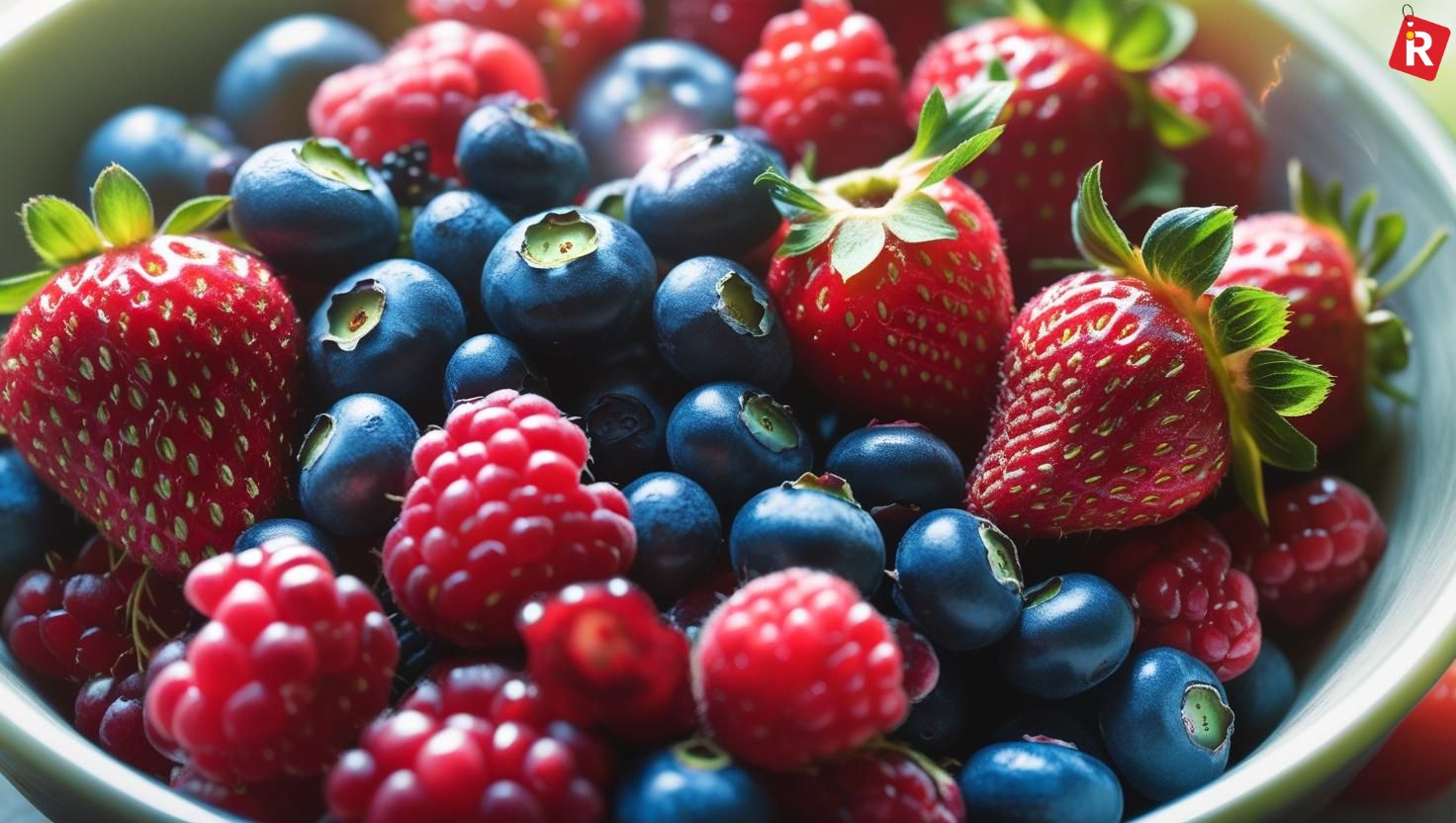
Any kind of Berries (e.g., Blueberries, Strawberries, Raspberries, Blackberries) are great for the liver since they are rich in antioxidant power. Berries are particularly high in ellagic acid, resveratrol, anthocyanins (the pigments that give them their vivid hues), and other potent polyphenols. They are also a great source of fiber and vitamin C.
Liver benefits:
- Protection Against Oxidative Stress: Berries' high antioxidant content helps shield the liver from oxidative stress and free radical damage, which can result in inflammation and liver disease.
- Reduced Inflammation: Liver tissue is soothed and protected by their anti-inflammatory substances.
- Increased Liver Enzyme Levels: Consistent intake has been associated with increased liver enzyme levels, which suggests enhanced liver health.
- Decreased Fibrosis: According to certain studies, berries' antioxidants may slow the development of liver fibrosis, or scarring.
- Overall Cellular Health: Berries indirectly improve the liver's capacity to carry out its numerous tasks by fostering cellular health throughout the body.
How to consume: Eat them raw or include them in nutritious desserts, smoothies, porridge, or yogurt. All year long, frozen berries are available and preserve the majority of their nutritious content.
Read this: A Close Look at Goa's Diverse Cuisine
Your Path to a Healthier Liver
The liver is a remarkable organ that works nonstop to maintain your health. You can strengthen its essential processes and shield yourself from a wide range of health problems by deliberately selecting to feed it the proper nutrients. Green leafy vegetables, turmeric, cruciferous vegetables, garlic, and berries are the top 5 superfoods for liver health because they provide a potent dosage of defense and assistance. Adopting these dietary allies is a tasty and proactive start toward a healthier liver and, eventually, a more vibrant and active you as we negotiate the challenges of modern life.
Next Story
How Sprouts Can Help You Live a Better Life

People across the globe are becoming more and more health-conscious as the years go by. The rise of social media influencers promoting healthy diets is a big reason for that. Since then, certain food products have been included in the diet of people who want to be. One of the most popular food items is sprouts. These small, unassuming shoots, which were disregarded in the past, are nutritious powerhouses, providing a concentrated dose of vitamins, minerals, and enzymes that is significantly higher than that of their unsprouted counterparts.
Sprouts are germinated seeds of legumes, grains, or vegetables that have just begun to grow. They are made by soaking the seeds and putting them in an environment with humidity and a good temperature. This process turns the inner seeds into tiny nutritional factories by triggering some metabolic changes. There are many scientifically proven health advantages of sprouts, ranging from improving digestion to strengthening your immune system and even helping you control your weight.
In this article, we will dive deeper into the world of sprouts, exploring how they can help you live a healthier and better life. We will discuss their nutritional benefits. How to add them to your diet, and also how to grow them by yourself at home.
Read more: A Close Look at Goa's Diverse Cuisine
The Science of Sprouting
A sprouting seed undergoes a special metabolic transformation. During this, new nutrients are created, and the other nutrients that were stored, such as proteins, lipids, and carbohydrates, are changed into more edible forms. The nutritional value of the seed increases by this process.
- Increased Vitamins: The process of sprouting boosts the levels of B vitamins (especially B2, B5, B6), Vitamin C, Vitamin K, and sometimes Vitamin E. For example, if compared, sprouted chickpeas have more Vitamin C than unsprouted ones.
- Enhanced Minerals: Sprouting breaks down the phytic acid, which is an anti-nutrient that makes them less absorbable by binding itself to these minerals is broken down. So, the bioavailability of minerals like iron, zinc, magnesium, and calcium improves.
- Higher Protein & Amino Acids: Sprouting breaks down the complex protein into simpler, more digestible amino acids. This makes them easier for the body to digest. Certain sprouts, such as those derived from legumes, are great providers of complete proteins.
- Enzyme Powerhouse: Sprouts have an abundance of enzymes that are essential catalysts that facilitate digestion and nutritional absorption. Also, raw sprouts are better than cooked ones because once cooked, they lose these active enzymes.
- Reduced Anti-nutrients: Sprouted grains and legumes are simpler to digest than unsprouted ones. The reason for this is that sprouting lowers phytic acid, lectins, and enzyme inhibitors, two anti-nutrients that can obstruct digestion and nutrient absorption.
- Increased Fiber: The fiber content in sprouts often increases, which promotes digestive health.
- Antioxidant Boost: Sprouting increases the content of many antioxidants, which shield your cells from harm caused by free radicals.
Essentially, sprouting transforms a basic seed into a concentrated, easily digested nutrition bomb that can power your path to a better life.
What's new: How to Effectively Market Your Restaurant
Specific Benefits for a Better Life

The improved nutritional composition of sprouts translates into a wide array of health benefits that can significantly improve your quality of life.
1. Supercharged Digestion & Gut Health
The first and foremost benefit of consuming sprouts is that they improve your digestion. As they are rich in live enzymes, which help to break down food more efficiently, they help to prevent issues like bloating, gas, and indigestion. Also, sprouts are a great source of both soluble and insoluble fiber. The soluble fiber of sprouts helps in nutrient absorption, which in turn helps to regulate blood sugar levels. Meanwhile, insoluble fiber adds bulk to stool, improving regularity and reducing constipation. Some fibres included in sprouts work as prebiotics, feeding beneficial bacteria in your stomach (probiotics), which is essential for a healthy gut microbiome and general digestive health. A healthy gut is increasingly associated with improved mood and immunity.
2. Bolstered Immunity & Disease Prevention
Sprouts help to improve immunity and strengthen the body’s natural defenses. Sprouts such as alfalfa, broccoli, and mung bean sprouts, are excellent sources of Vitamin C, which is a potent antioxidant required for immune cell activity and collagen formation. The elevated antioxidant levels aid in the fight against inflammation and oxidative stress, which are root causes of many chronic illnesses, such as heart disease and some types of cancer. Sulforaphane, a powerful phytochemical with anti-cancer and detoxifying effects, is particularly well-known for being present in broccoli sprouts.
3. Effective Weight Management
Sprouts are a good, nutrient-dense option for people trying to control their weight. The high Fiber Content in sprouts helps you feel fuller for longer, which in turn naturally lowers your caloric intake. They are also a great food for weight watchers because they are generally low in calories and fat and high in nutrients. They guarantee that your body gets the fuel it requires even while you're on a calorie deficit by providing vital vitamins and minerals without adding extra calories.
4. Improved Heart Health
Including sprouts in your diet can have a major positive impact on cardiovascular health. According to some research, some sprouts, such as alfalfa sprouts, may help reduce LDL (or "bad") cholesterol levels. Their antioxidant concentration helps to maintain a healthy circulatory system by preventing damage to blood vessels. Although not a major source, certain sprouts, such as chia and flax sprouts, are good sources of heart-protective omega-3 fatty acids.
5. Enhanced Energy Levels & Vitality
If you feel lethargic or tired all the time, then you could need a natural boost from sprouts. The increased B vitamin content is essential for energy metabolism, assisting your body in effectively converting meals into useful energy. Sprouts can help your body absorb and use more nutrients from all the food you eat by facilitating digestion and breaking down anti-nutrients. This has a direct effect on your energy levels. The higher protein content of sprouts, such as those made from chickpeas and lentils, gives them long-lasting energy.
Check out: How Probiotics and Fermented Foods Can Boost Gut Health
6. Better Blood Sugar Regulation
Sprouts can also help those with diabetes or those trying to control their blood sugar levels. Sprouts' high fiber content helps reduce the rate at which sugar is absorbed, avoiding sharp rises in blood sugar levels. Also, by aiding in the digestion of carbohydrates, the enzymes facilitate a more uniform release of energy.
7. Anti-Aging & Skin Health
Sprouts have vitamins and antioxidants that help to maintain healthy skin and a young appearance. It can protect your skin from free radical damage, which is a contributing factor to aging. As the collagen synthesis depends on vitamin C, it keeps skin supple and tight. The sulforaphane in broccoli sprouts helps cleanse the liver, which can lead to healthier, more radiant skin.
Know more: Sip the Season: 4 Mango Cocktails to Beat the Summer Heat
Embracing Sprouts in Your Kitchen

Regardless of your culinary experience, adding sprouts to your daily diet is surprisingly simple and adaptable.
1. Common & Easy-to-Sprout Options
- One of the most widely used sprouts in the world, mung beans have a mild flavor, are easy to grow, and are delicious fresh or in salads or stir-fries.
- Lentil sprouts have a nutty flavor and are great in salads, curries, and other dishes.
- Chickpea sprouts are robust and crunchy, and they may be lightly cooked or added to salads.
- Alfalfa sprouts are a gentle and delicate addition to salads, sandwiches, and wraps.
- Fenugreek sprouts are a somewhat bitter yet healthful addition to salads and light curries.
- Broccoli sprouts are known for having a high sulforaphane concentration. These peppery greens are perfect for smoothies or salads.
2. Simple Sprouting at Home: Your DIY Guide
To sprout, you don't require expensive equipment. Seeds, water, and a container are all you need.
- Soak: Thoroughly rinse 1/4 to 1/2 cup of seeds. Transfer them to a sterile jar and fill it with two to three times the amount of lukewarm water. Soak for eight to twelve hours.
- Rinse and Drain: Make sure the water is thoroughly drained in the morning. Drain the seeds once again after giving them a thorough rinse with new water.
- Sprout: To sprout, return the wet seeds to the jar. Use a mesh screen or a piece of muslin cloth fastened with a rubber band to cover the jar's opening. To let extra water drain and air circulate, invert the jar at an angle (for example, in a bowl or a dish rack).
- Repeat: Depending on the seed and desired sprout length, rinse and drain the sprouts two to three times a day (morning, afternoon, and evening) until they reach the length you desire. This process often takes two to five days.
- Store: After sprouting, keep them in the fridge for up to three to five days in an airtight container. Before using, give them a quick rinse.
Know this: Top 5 Korean Menu Design Ideas That Bring Seoul to the Table
3. Delicious Ways to Incorporate Sprouts:
- Raw in Salads: To add crunch and nutrients to any salad, add them.
- Sprout Salads: Make special sprout salads by combining chopped veggies, herbs, lemon juice, and your preferred seasonings.
- Sandwiches & Wraps: Add a handful of mung bean or alfalfa sprouts to sandwiches and wraps to add crunch and nutrition.
- Smoothies: For an imperceptible nutritional boost, blend alfalfa sprouts or broccoli into your morning smoothie.
- Lightly Steamed/Sautéed: Although enzymes are best when raw, some people, especially those who are eating larger sprouts, may find them more appetizing after a brief steam or mild sauté. At the very end of cooking, add them.
- Stir-fries & Curries: To preserve the most nutrients, add them at the end of the cooking process to your stir-fries or vegetable curries.
Your Road to a Better, Livelier You
In a time when processed foods and sedentary lifestyles pose health risks, sprouts' simplicity and powerful nutritional value provide a welcome counterpoint. Adopting this age-old technique can uncover a cascade of health benefits, from quiet rural households to busy urban centers around the world. These benefits include improved vitality, stronger immunity, better digestion, and longer-lasting energy.
A monument to the strength of nature's smallest gifts, sprouts are more than simply a fad in food; they represent a link to a better existence. You're not only eating well when you incorporate these little powerhouses into your diet on a daily basis; you're also investing in a more resilient, vibrant, and healthy version of yourself, one sprout at a time. Thus, gather some seeds, begin soaking, and observe the growth of your wellness path!
Next Story
10 Dry Fruits You Should Eat After Menopause—Natural Boosters for Stronger Bones & Better Moods

Menopause is a natural stage in every woman’s life. It usually begins between the ages of 45 and 55. Your body goes through many changes during this time. You may feel more tired, have mood swings, experience hot flashes, or see changes in your skin and bones.
As someone who has helped family members through menopause, you may have seen how diet can play a major role in easing symptoms. One simple change that made a big difference? Adding dry fruits to their daily routine. Dry fruits are full of nutrients that support your body after menopause. Let’s explore why they are helpful and which ones you should be eating.
Read more: 12 Delicious High-Protein Foods to Eat Daily for a Healthier You
High Protein Indian Meals You Should Try
What Happens After Menopause?
After menopause, your body stops producing as much estrogen. This hormone is important for your bones, skin, heart, and brain. As levels drop, you may notice:
- Weakening bones
- Weight gain
- Sleep problems
- Mood changes
- Joint stiffness
- Dry skin and hair
These changes are normal. But the good news is that certain foods can help manage them. Dry fruits are one of the best choices.
Why Dry Fruits?
Dry fruits are packed with natural goodness. They are small but rich in:
- Calcium and magnesium (for bone health)
- Healthy fats (for heart and hormones)
- Fiber (for digestion)
- Iron and potassium (for energy and blood health)
- Antioxidants (for aging support)
The best part? You can easily carry and snack on them anywhere—at home, at work, or while traveling.
Top 10 Dry Fruits to Eat After Menopause
Here are ten dry fruits that you should definitely consider adding to your diet after menopause.
1. Almonds

Almonds are packed with nutrients like calcium, magnesium, and vitamin E. These are important for women after menopause. They help prevent bone thinning and keep your skin soft and glowing. Almonds also contain healthy fats that are good for your heart. They may help manage cholesterol levels, which can rise after menopause. Almonds are high in protein too, which supports muscle strength as women lose lean mass with age. One benefit often missed is that almonds can help manage blood sugar levels, reducing the risk of type 2 diabetes. You can eat them raw, roasted, or soaked overnight. Soaked almonds are easier to digest. They also improve brain health and memory. Just 6–8 almonds a day is enough. Don’t overeat as they are calorie-dense. Always chew them well for better absorption.
2. Walnuts

Walnuts are full of omega-3 fatty acids. These fats are great for your brain and heart. After menopause, women may feel low or forgetful. Walnuts help with memory, mood, and mental sharpness. They also support hormone health and reduce inflammation. What many people don’t know is walnuts can also support better sleep. They contain melatonin, which helps regulate your sleep cycle. Poor sleep is common after menopause. Walnuts are also rich in antioxidants like polyphenols that fight aging and oxidative stress. Eating 2–4 walnut halves a day is enough. You can add them to salads, oatmeal, or just eat them as a snack. They’re also known to reduce LDL (bad) cholesterol. This keeps your arteries healthy. A regular intake may also lower the risk of breast cancer in women, especially post-menopause.
3. Dates

Dates are naturally sweet and full of fiber. They help improve digestion and relieve constipation, which is a common issue after menopause. Dates also contain iron, magnesium, and potassium. These minerals boost energy levels and reduce muscle cramps. They are a great alternative to sugary snacks and help manage sweet cravings. Most people don’t realize that dates also contain phytoestrogens. These are plant-based compounds that act like estrogen in the body. They may help ease menopause symptoms like hot flashes. You can eat 2–3 dates daily. Add them to smoothies, milk, or eat them with nuts like almonds. Dates also support heart health and may reduce the risk of stroke. Choose soft, seedless dates for easier digestion. Avoid overeating if you are diabetic as dates have natural sugar.
4. Figs (Anjeer)

Figs are rich in calcium and magnesium, making them excellent for bone strength. Post-menopausal women are at high risk of osteoporosis. Figs help keep bones dense and strong. They also support better digestion due to their fiber content. Anjeer also helps control blood sugar and blood pressure. Figs have a high antioxidant level, which protects your cells from aging. A lesser-known fact is that figs are also good for hormone balance. They support liver function, which is important for hormone detox. Eating 1–2 dried figs soaked overnight helps the body absorb nutrients better. Figs are also good for skin health and reduce dullness. You can eat them as a snack, in salads, or add them to warm milk. Avoid store-bought sugary versions and stick to natural dried figs.
5. Prunes

Prunes are dried plums known for their strong effect on bone health. Studies show that eating prunes daily can slow down bone loss in post-menopausal women. They are rich in vitamin K, boron, and potassium. These support calcium absorption and improve bone density. Prunes are also high in fiber, which helps with digestion. They are especially helpful if you face constipation or bloating. Few people know that prunes also support heart health. They help reduce cholesterol and blood pressure. Their high antioxidant levels protect cells from age-related damage. Eat 4–5 prunes daily as part of breakfast or a midday snack. You can soak them for better digestion or blend them into smoothies. They are low in fat but naturally sweet. This makes them a healthy alternative to sweets or desserts.
6. Raisins (Kishmish)

Raisins are small but packed with iron, potassium, and natural sugars. They are great for women who feel tired or low in energy after menopause. They help increase hemoglobin and improve blood circulation. Raisins also support bone health due to their boron content. This mineral helps the body hold on to calcium. They are also high in antioxidants like resveratrol, which support heart and skin health. Many don’t know that raisins have anti-inflammatory properties. This helps reduce joint pain and stiffness. You can eat 10–12 raisins soaked in water in the morning. Soaking makes them easier to digest. They are also good for your teeth and help reduce acidity. Raisins help in managing appetite by reducing sugar cravings. Avoid those coated with added sugar or oil.
7. Apricots (Dried)

Dried apricots are rich in vitamin A, potassium, and fiber. Vitamin A supports eye and skin health, which can weaken after menopause. Potassium helps balance blood pressure and reduces water retention. They are low in fat and naturally sweet. Apricots also contain iron, which supports red blood cell production. An important fact often ignored is that dried apricots contain beta-carotene. This compound supports immune function and slows skin aging. Their fiber helps prevent constipation, a common post-menopause issue. Eat 2–3 dried apricots as a snack or mix them in cereal. You can also soak them to make them softer and easier to digest. They are perfect for women who want to stay energetic and maintain skin glow. Avoid artificially sweetened versions.
Know more: How to Keep Strawberries Fresh: Tips for Storing Strawberries
8. Pistachios

Pistachios are high in protein, fiber, and healthy fats. They help manage cholesterol levels and support a healthy heart. For menopausal women, they are useful in weight management. Protein helps you feel full longer, reducing the chances of overeating. Pistachios also contain vitamin B6, which supports brain and nerve function. Many women experience brain fog during menopause—pistachios can help with that. These nuts are also good for blood sugar control and support eye health due to their lutein content. Eat a small handful (about 20–30 pistachios) as a midday snack. Choose unsalted and unroasted ones for better health benefits. They’re easy to carry, making them perfect for busy women who skip meals or snacks.
9. Brazil Nuts

Brazil nuts are one of the best sources of selenium. Just one nut a day gives your full daily requirement. Selenium supports thyroid function, which often becomes sluggish after menopause. A healthy thyroid keeps your energy, weight, and mood in check. Brazil nuts also help improve immunity and reduce inflammation. They’re rich in zinc and magnesium, which support hormone balance and calm the nervous system. They also contain healthy fats that are good for your heart. Many people don’t know they also support fertility and liver detox. Eat only 1–2 per day as excess selenium can be harmful. Add them to your nut mix, yogurt, or smoothies. Store in a cool place, as their oils can spoil quickly.
10. Hazelnuts

Hazelnuts are full of vitamin E, healthy fats, and magnesium. They support hormone health and improve skin elasticity. After menopause, skin can become dull and dry. Hazelnuts help restore natural glow and smoothness. They are also good for the heart and brain. Vitamin B6 in hazelnuts supports serotonin production, which lifts your mood. Many don’t know that hazelnuts are also good for reducing inflammation in the body. They also support strong nails and hair due to their rich mineral profile. Eat 6–8 hazelnuts daily. You can roast them or crush them into desserts. Add to your porridge or eat as a light evening snack. They are calorie-rich, so avoid eating too many. Always store them in airtight containers to keep them fresh.
Also check: 5 Indian Spices You Should Never Skip in Daily Cooking
6 Common Fruits That Have the Highest Amount of Fibre: Your Tasty and Simple
Mood Swings Meet Their Match—Snack Smart!
Menopause often brings mood swings, anxiety, and even mild depression. Many of these emotional changes are due to hormone drops. Walnuts, Brazil nuts, and almonds can help. Their healthy fats and nutrients support brain function and mood. They’re not a replacement for therapy or medication if needed, but they do support your emotional balance.
Hot flashes can feel intense and uncomfortable. Some studies show that magnesium and phytoestrogens may reduce the severity. Dry fruits like figs, prunes, and apricots are high in magnesium and may offer relief. Consistency is key. Try eating a mix of these daily and monitor how you feel.
Sweet Cravings After 40? Try This Instead of Chocolate
Many women crave sweets after menopause. Instead of reaching for chocolate or cake, try:
- Dates stuffed with almonds
- Raisins and apricots with yogurt
- Chopped figs in oatmeal
These are sweet, satisfying, and support your body at the same time.
Check more: What Is Caesar Salad, and Why Is It Named After the Roman Emperor?
Top 10 Health Benefits of Eating Dry Fruits Daily
6 Indian Superfoods for a Happy Gut You Need to Try Today!
Best Time to Eat Dry Fruits Post-Menopause
You can eat dry fruits any time of the day, but here’s what works best:
- Morning (empty stomach): Soaked almonds, figs, and dates to kickstart digestion
- Mid-morning or afternoon: Walnuts or Brazil nuts to fight fatigue
- Evening: Prunes or apricots to avoid sweet cravings and aid digestion
Avoid eating large quantities at night, as they may feel heavy or affect sleep.
Final Thoughts
Menopause is a natural part of every woman’s life, not a health problem. While the symptoms may feel overwhelming at times—like fatigue, mood changes, or bone weakness—simple lifestyle changes can make a big difference. Adding dry fruits to your daily diet is one of the easiest and most effective steps. They are packed with nutrients that support your body’s changing needs. From improving bone strength to boosting mood and energy, these tiny foods offer big benefits. Start with small portions and choose the ones that suit your taste and digestion. Be consistent, but don’t rush the process. Every woman’s body is different, so it’s important to listen to yours. And always speak with your doctor or a certified nutritionist before changing your diet. Prioritize your well-being—because you deserve it.
Next Story
How Probiotics and Fermented Foods Can Boost Gut Health

As of 2025, people are becoming more health-conscious and looking for innovative ways to improve their health. Going to the gym to burn calories, practicing yoga for mental and physical health, and food planning for a balanced, calorie-free diet. People are doing everything necessary to stay in excellent health. However, in the midst of all of this, we sometimes overlook one critical aspect of becoming healthy. That is, our gastrointestinal health. A healthy gut indicates that your digestive system is performing well. It is an essential component of our body's general wellness. A healthy stomach can boost your immunity, so you won't get ill as often. It also affects our mental health and overall well-being.
So, how can we improve our gut health? Scientists all over the world have discovered that probiotic-rich meals, often known as fermented foods, have a significant impact on gut health. They not only aid in improving our gut health, but they can also help to reverse it. But why can probiotics and fermented foods improve gut health? If you don't know, don't worry; in this article, we'll go over why probiotic and fermented foods are beneficial to gut health, as well as which foods contain these traits.
What's new: How to design a menu card for your restaurant
What Exactly is Gut Health?
Before we move further, let’s take a look at what a preferred gut health is. Your gut is home to many kinds of microorganisms, collectively known as the gut microbiome. This community consists of both good bacteria (Probiotics) and bad bacteria. A healthy gut is characterised by a wide variety of different microorganisms. But there should be more beneficial bacteria than the bad ones. Also, the gut barrier, which is a lining on stomach walls that protects undigested food particles and toxins from entering the bloodstream, should be intact.
Sometimes the balance of a healthy gut is disrupted due to various reasons, like stress, poor diet, antibiotics, or environmental toxins. In such a situation, the harmful bacteria start to flourish, and it leads to a situation called Dysbiosis. This situation is linked to various health issues like:
- Digestive problems
- Mood disorders
- Weakened immune system
- Skin conditions
- Metabolic issues
- Chronic inflammation
Read more: The Best Bar POS Systems: 10 Must-Have Features (2025)
What are Probiotics?

The World Health Organization (WHO) defines probiotics as "live microorganisms that, when administered in adequate amounts, confer a health benefit on the host." These microorganisms are mostly yeast and bacteria and are referred to as good or beneficial bacteria. Once an adequate amount of probiotics is consumed, they fight for space with the bad bacteria and take control of the gut. Once there is an adequate amount of good bacteria in your gut, your stomach automatically becomes stable. Probiotics are mostly found in fermented foods and some supplements.
Key characteristics of probiotics:
- Live and Active: When consumed, they must be alive and able to survive the stomach's severe acidic environment before reaching the bowels.
- Specific Strains: Different strains (such as Lactobacillus acidophilus and Bifidobacterium bifidum) have different benefits.
- Adequate Amounts: To be effective, they must be taken in large enough numbers (measured in Colony Forming Units or CFUs).
Read more: Why You Should Consume 1 Coconut Daily During Summer
What are Fermented Foods?
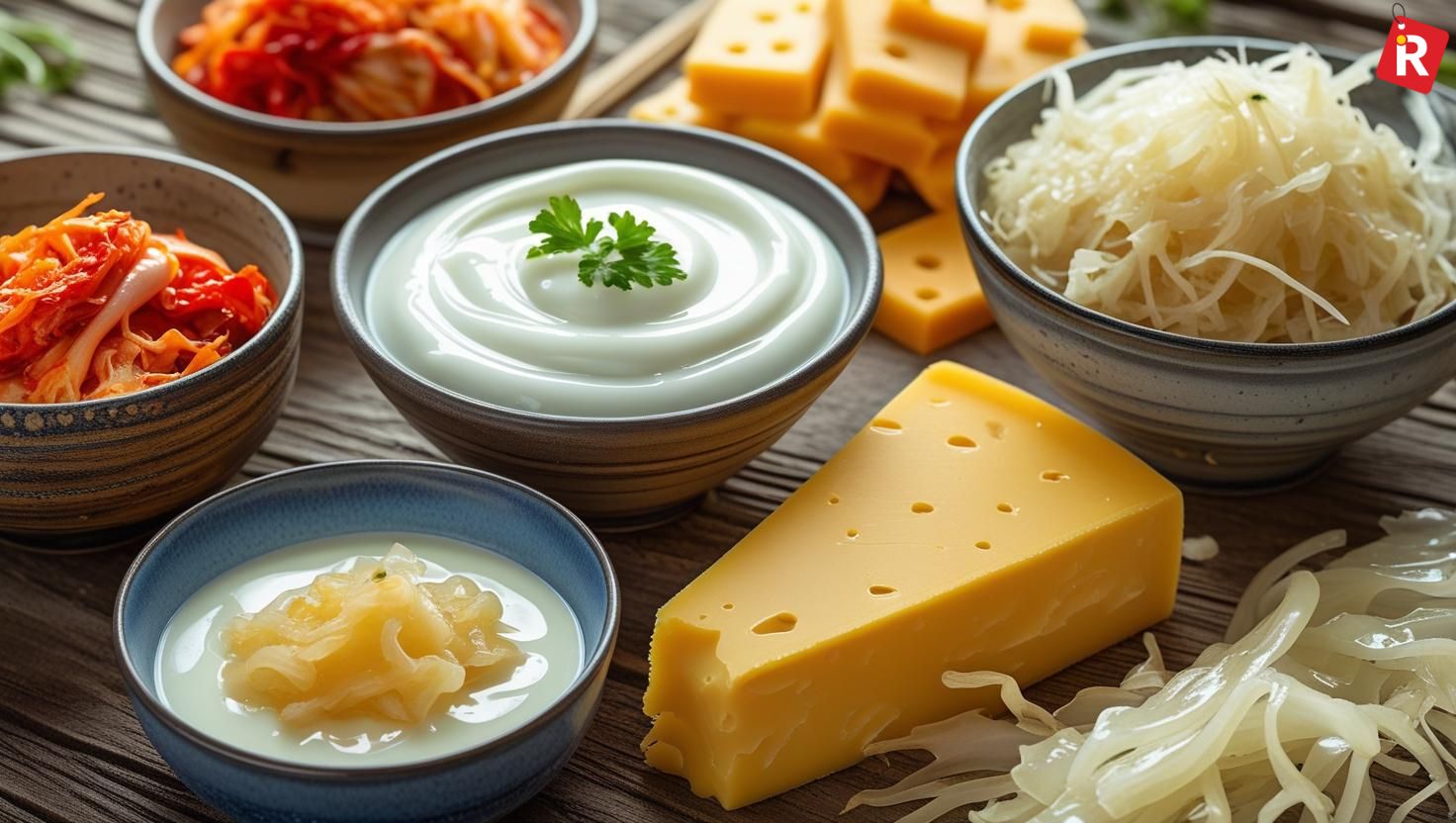
Fermented foods are products of regulated microbial development in which beneficial bacteria, yeasts, or molds transform carbohydrates into alcohol, gases, or organic acids. This technique not only preserves the food, but it also improves its flavor, digestibility, and nutritional value.
Key characteristics of fermented foods:
- Naturally Rich in Microbes: They include a wide range of live microorganisms, albeit the specific strains and amounts can differ greatly.
- Enhanced Nutrition: Fermentation can boost nutrient bioavailability, create new vitamins (such as B vitamins and K2), and degrade antinutrients.
- Improved Digestibility: Microbes predigest part of the complex carbs and proteins, making the food simpler on your system.
- Flavor Development: Fermentation produces distinct, often tangy or umami flavors.
While many fermented foods include probiotics, not all of them are probiotic-rich. For a fermented product to be considered a substantial source of probiotics, the microorganisms must be alive and present in sufficient quantities when consumed.
What's new: 10 Benefits of Turmeric in Your Daily Life and Top Brands to Pick
History of Fermented Foods
Fermented foods may have been around from the beginning of humanity. Fermentation is distinguished by its ability to be preserved for extended periods. So, humans all around the world have employed various fermentation techniques to store products such as wheat, vegetables, and dairy.
The first fermented foods were most likely discovered purely by chance. Consider early humans preserving surplus milk in animal bladders or leaving fruit in simple containers. Over time, naturally occurring yeasts and bacteria would start to act on the sugars and change them. The "spoiled" milk may have become acidic and thick (like early yogurt), or the abandoned fruit juice may have bubbled into an intoxicating brew.
These serendipitous findings would have been revolutionary. Not only did these new substances have distinct aromas and textures, but they also lasted longer than their fresh equivalents. In a world without refrigeration, this preservation capability was nothing short of miraculous, assuring food security and allowing early societies to stockpile provisions for tough times.
How Probiotics & Fermented Foods Work Their Magic in Your Gut
The processes by which these beneficial bacteria contribute to gut health are complex and amazing:
- Balancing the Microbiome: They compete with harmful bacteria for space and nutrients, which helps to create a healthy balance and suppress the growth of pathogens.
- Strengthening the Gut Barrier: Probiotics help to repair the intestinal wall, preventing “leaky gut” and reducing the entry of toxins and undigested food into the bloodstream. This is a crucial process for overall immune health.
- Producing Beneficial Compounds: They create short-chain fatty acids (SCFAs), such as butyrate, acetate, and propionate. Butyrate, in particular, is the primary fuel source for gut cells, helping to reduce inflammation and maintain gut integrity.
- Aiding Digestion: They assist in breaking down complex carbohydrates, fibers, and even lactose. This process helps in improving nutrient absorption and reducing digestive problems like bloating and gas.
- Boosting the Immune System: The gut contains a large amount of your immune system. Probiotics work directly with immune cells, regulating immunological responses and improving the body's ability to fight infections.
- Synthesizing Vitamins: Certain probiotic strains can create critical vitamins, including B vitamins (B12, folate) and vitamin K2, which are required for a variety of biological processes.
- Influencing Mood & Cognition (Gut-Brain Axis): The gut and brain can communicate via the vagus nerve and various neurotransmitters. Probiotics influence the production of neurotransmitters like serotonin (a large percentage of which is produced in the gut) and GABA, potentially impacting mood, stress levels, and cognitive function.
Read more: How to design a menu card for a Hotel: 10 Things not to Skip
Top Probiotic and Fermented Food Sources for Optimal Gut Health
Various food products are rich in probiotics, and a wide variety of fermented food products are available across the world. Let’s take a look at them.
Dairy-based delights:
- Yogurt (Dahi) is the most frequent and accessible source. Look for yogurts branded as "live and active cultures" or "probiotic." Homemade dahi is good because it includes a lot of living germs. In India, dahi is a staple and an excellent daily source.
- Kefir is a fermented milk drink that is thinner in consistency than yogurt and contains a greater range of bacteria and yeasts. It has a tart, slightly fizzy flavor.
- Buttermilk (Chaas/Lassi): Traditional Indian chaas (savory buttermilk) and lassi (sweet or savory yogurt drinks) are delicious fermented choices, especially when made with freshly cultured dahi.
Vegetable & Grain Ferments:
- Kimchi is a typical Korean side dish made from fermented vegetables, including Napa cabbage and Korean radish, with various flavors. Known for its fiery, acidic flavor and high probiotic content.
- Sauerkraut is fermented cabbage that is a mainstay in Central European cuisine. Simple to prepare at home with only cabbage and salt.
- Pickles (Naturally Fermented): Not all pickles undergo fermentation. Look for "lacto-fermented" pickles (prepared with salt and water rather than vinegar) that are kept refrigerated. Many traditional Indian achaar (pickles) were previously lacto-fermented, but modern commercial variations frequently employ vinegar, which does not contain living microorganisms.
- The fermented rice and lentil batter used in the classic South Indian meals like Idli and Dosa contains a high concentration of beneficial microorganisms, notably Lactobacillus species. An authentic Indian probiotic powerhouse.
- Like idli/dosa, the fermentation process of Appam/Dhokla batters (appam, a lacy rice pancake, and dhokla, a savory steamed cake) contributes healthy bacteria.
- Kanji, a traditional North Indian fermented drink prepared with black carrots, mustard seeds, and spices that is popular throughout the winter. A unique Indian fermented beverage.
Beverage Ferments:
- Kombucha, a sweetened tea fermented with a SCOBY (Symbiotic Culture of Bacteria and Yeast), is a sour and slightly effervescent beverage. Flavors can vary greatly.
- Apple Cider Vinegar (with "The Mother"), while not as high in probiotics as yogurt, ACV with the hazy "mother" has some helpful bacteria and enzymes that can help with digestion and create a more friendly gut environment.
Taking Care of Your Inner Health
The gut is frequently where the path to optimal health starts. In June 2025, the research is clearer than ever: fermented foods and probiotics are scientifically proven allies in promoting a healthy and balanced gut microbiota, not just passing health trends. Including these living foods in your daily routine gives a tasty and convenient method to improve digestion, immunity, mood, and general vigor. You can enjoy the soothing warmth of homemade dahi or the tart zest of a new kombucha flavor.
Start growing your inner garden now by embracing the age-old wisdom that is being guided by contemporary science. Your entire body, including your gut, will appreciate it.
Next Story
Why You Should Consume 1 Coconut Daily During Summer

Summers in India are intensely hot, humid, and often leave people feeling exhausted. Stepping out during the day can quickly drain energy, leaving one tired, dehydrated, and irritable. Even drinking plenty of water sometimes isn’t enough to beat the heat. That’s why making small changes to the daily diet becomes essential, and one of the simplest and most effective additions is a fresh coconut.
Coconut, often called nature’s summer gift, is more than just a refreshing drink. It is rich in essential electrolytes, offers powerful hydration, and helps cool the body from within. Regular consumption can improve energy levels, support digestion, and even promote clearer skin by reducing heat-related breakouts. Whether it's the nutrient-rich coconut water or the soft, tender flesh, both offer a range of health benefits. Adding one coconut a day to the diet can make a noticeable difference in how the body handles summer stress. It’s affordable, natural, and easily available across India during the hotter months. Here's why consuming one coconut daily in summer is a smart, health-friendly habit worth adopting.
Read more: 12 Delicious High-Protein Foods to Eat Daily for a Healthier You
Why Should You Soak Mangoes Before Eating?
The Natural Coolant You Didn’t Know You Needed
In the peak of summer, our body heats up fast. We sweat more. We lose water and minerals quickly. That’s where coconut comes in. Coconut water and tender coconut meat are full of cooling properties.
In Ayurveda, coconut is known as a Sheetal or cooling food. It helps calm your internal system and balance body heat. If you're someone who gets heat boils, skin rashes, or headaches during summer, coconut can actually help soothe these symptoms.
- Electrolyte Overload? Yes, Please!
Coconut water is rich in essential electrolytes such as potassium, magnesium, sodium, and calcium. These minerals play a key role in maintaining hydration, especially during the hot summer months. For individuals who work outdoors or engage in physical activity, water alone may not be enough to replenish what the body loses through sweat. Electrolytes are necessary to support proper muscle function, nerve activity, and overall energy levels.
Rather than consuming sugary sports drinks filled with artificial additives, opting for a fresh coconut is a healthier, more natural choice. It is low in calories, completely free of preservatives, and provides effective hydration. Many people find that incorporating coconut water into their routine helps restore energy quickly and keeps them feeling refreshed longer.
Say Goodbye to Heat Rashes and Summer Pimples
Summer skin problems are quite common, especially due to the combination of sweat, dust, and heat. These conditions often lead to acne, rashes, and dull skin. Coconut water can be an effective natural remedy for such issues. When consumed regularly, coconut water helps purify the blood and flush out toxins from the body. This internal cleansing reflects on the skin, resulting in a clearer, smoother complexion. It also hydrates the skin from within, helping to maintain its natural glow even in extreme heat. Additionally, coconut water can be applied directly to the face using a cotton ball. Its cooling and soothing properties help calm inflamed or irritated skin. Whether used internally or externally, coconut water supports healthier skin during the summer.
Know more: 10 Benefits of Turmeric in Your Daily Life and Top Brands to Pick
Weight Loss & Detox in a Shell

Trying to lose weight this summer? Coconut water can be a smart and refreshing addition to your diet. It’s light, nutritious, and helps the body stay hydrated without adding extra calories. Combined with tender coconut meat, it offers a balance of hydration, healthy fats, and natural detox support.
Here’s why it works well for weight management:
- Low in Calories & Fat-Free: Coconut water is naturally low in calories and contains no fat, making it ideal for calorie-conscious diets.
- Keeps You Full for Longer: Tender coconut meat has healthy fats that support metabolism and reduce frequent hunger pangs.
- Natural Detox Support: Acts as a mild diuretic that helps flush out toxins and reduce bloating or water retention.
Also check: How to Keep Cilantro Fresh: Tips for Storing Cilantro
How to Keep Strawberries Fresh: Tips for Storing Strawberries
Coconut Loves Your Digestive System
Summers can be tough on your stomach. You may feel bloated, constipated, or just uneasy. Coconut can help here too. Coconut water is gentle on the stomach and easy to digest. It soothes acidity and helps keep your digestion smooth. Coconut meat, on the other hand, is rich in fiber. It helps in regular bowel movements and keeps your gut healthy. A glass of coconut water in the morning, before breakfast, can do wonders for your digestion. I personally find it a gentle and natural way to start my day.
A Summer Beauty Hack in Disguise
Coconut is not just good for health—it’s great for beauty too. If you want glowing skin and shiny hair during the summer, start with your diet. Coconut water keeps your skin hydrated, reduces sun damage, and makes your skin look fresh. You can also mix coconut water with rose water and spray it on your face as a natural toner. For your hair, use coconut oil or apply a paste made from fresh coconut meat. It deeply nourishes the scalp and prevents dryness caused by heat. This is a beauty hack I swear by. It's easy, affordable, and 100% natural.
Energy drinks and bottled juices are tempting during summer. But most of them contain high sugar and artificial additives. Coconut water, on the other hand, is completely natural. It's like a plant-based energy drink. And unlike packaged drinks, it doesn’t spike your blood sugar. It gives you a steady boost of hydration and energy. Plus, it’s easy to find and very affordable in most parts of India. During my college years, I would often grab a packaged juice after a long walk home. But switching to coconut water was not just healthier—it tasted better too.
Check more: What Happens When You Consume 1 Avocado Daily?
What Is Caesar Salad, and Why Is It Named After the Roman Emperor?
1 Health Benefits of Carrots: Nutrition, History & Why You Should Eat It Daily
Crack It, Sip It, Glow Up
Here’s a quick summary of why one coconut a day makes sense during summer:
- Cools your body naturally
- Keeps you hydrated with essential minerals
- Prevents summer acne and heat rashes
- Aids in weight loss and detox
- Supports smooth digestion
- Makes your skin and hair look healthier
- Is a better alternative to processed drinks
Whether you buy it from your local vendor or get it delivered through quick commerce apps, coconuts are easy to include in your daily life.
Summing Up!
Coconut is more than just a tropical fruit—it’s nature’s answer to summer health and wellness. Packed with nutrients, antioxidants, and natural hydration, it helps your body stay cool, your skin stay clear, and your energy levels stay up. Whether you drink its water or eat its tender meat, coconut offers a perfect balance of health and taste. It’s light on the stomach, rich in electrolytes, and easy on your budget.
If you’re feeling dull, tired, or dehydrated during the summer months, try adding one coconut to your daily routine. Give it just seven days. You’re likely to feel more refreshed, energetic, and focused. Your skin may glow, your digestion will improve, and that sluggish heat feeling? Gone. Simple, effective, and straight from nature—start your one-coconut-a-day habit today.
Next Story
10 Benefits of Turmeric in Your Daily Life and Top Brands to Pick

In many Indian households, haldi has always been more than a cooking ingredient. You may remember how grandmothers add it not just to curries, but also to milk, face packs, and even warm water during colds. It was her go-to remedy for almost everything. And now, modern science is backing what our elders always believed—turmeric is packed with healing properties.
From boosting immunity and aiding digestion to giving you glowing skin, turmeric has a lot to offer. It contains curcumin, a natural compound known for its anti-inflammatory and antioxidant powers. Whether you want to fight infections, heal faster, or just feel better from within, turmeric can do it all—if used regularly and in the right form. In this article, I’ll walk you through the top 10 benefits of turmeric in your daily life. I’ll also share 5 trusted turmeric brands in India to help you pick the best one for your needs.
Read more: How to Keep Bananas Fresh: Tips for Storing Bananas
Why Should You Soak Mangoes Before Eating?
Why Turmeric Is Your Golden Bestie
Turmeric, or haldi, has been a part of Indian traditions for centuries. From healing wounds to treating colds, it’s been the go-to remedy for generations. But it’s not just a traditional fix. Turmeric is packed with curcumin, a compound that has anti-inflammatory, antioxidant, and healing properties.
10 Benefits of Turmeric in Your Daily Life

- Boosts Immunity: Turmeric is a natural immunity booster. A warm glass of haldi doodh can help your body fight infections. During flu season, I make it a daily routine.
- Gives You Clear, Glowing Skin: Turmeric fights acne and blemishes. You can mix it with yogurt and apply it as a face mask. It works wonders to reduce scars and improve skin tone.
- Aids Digestion: If you face acidity or bloating, turmeric can help. Adding a pinch to your food improves gut health and keeps your digestive system active.
- Soothes Joint Pain: Turmeric’s anti-inflammatory properties help reduce joint pain and stiffness. It’s especially helpful for elderly people or those with arthritis.
- Improves Mood: Feeling low or anxious? Studies show that turmeric can boost serotonin and dopamine. I often mix turmeric in warm tea when I need a mood lift.
- Heals Cuts and Wounds: Turmeric is a natural antiseptic. I’ve seen my mom dab it on minor cuts to stop bleeding and prevent infection.
- Supports Liver Health: Turmeric helps detox your liver by flushing out toxins. It’s great for those who often eat oily or processed food.
- Reduces Inflammation: If you work out often or have chronic pain, turmeric can reduce swelling and speed up recovery.
- Promotes Better Sleep: Turmeric milk at night calms the body. It’s a home remedy I always turn to for restful sleep.
- Aids Weight Loss: When combined with a healthy diet, turmeric helps in breaking down fat. It supports metabolism and reduces fat tissue growth.
Know more: Health Benefits of Quinoa: A Superfood for Every Diet
6 Unexpected Benefits of Eating Jackfruit (Kathal) – Nature’s Spiky Surprise!
Weird (But Wonderful) Uses of Turmeric
- Teeth Whitening: Yes, turmeric powder can polish your teeth when mixed with coconut oil.
- Haldi Ceremony: Indian weddings use turmeric for skin glow and blessings.
- Fabric Dye: Natural fabric colors often come from turmeric.
Top 5 Turmeric Brands in India You Can Trust

If you’re looking to add high-quality turmeric to your routine, here are 5 reliable brands I’ve tried and recommend:
1. TATA Sampann Turmeric Powder: TATA Sampann offers turmeric with 3% curcumin, sourced from Salem, Tamil Nadu, known for its high-quality haldi. It’s hygienically packed to retain aroma and freshness. Ideal for daily cooking, turmeric milk, or home remedies, it brings both taste and health benefits in every pinch.
2. Everest Turmeric Powder: Everest is a trusted Indian spice brand offering consistent, bright yellow turmeric powder. It’s widely available, affordable, and perfect for everyday use in curries, dals, and gravies. Known for its flavor and quality, this is a staple in many Indian kitchens for both taste and tradition.
3. Catch Haldi Powder: Catch Haldi is finely ground and has a strong, natural flavor that blends easily into any dish. Its vacuum-sealed packaging ensures long-lasting freshness. Ideal for those upgrading from local turmeric, it enhances color, taste, and health value in cooking and turmeric milk preparations.
4. Aashirvaad Organic Turmeric Powder: Aashirvaad Organic Turmeric is certified by USDA and India Organic, ensuring chemical-free, farm-sourced quality. It’s great for those seeking clean, organic options. Suitable for cooking and skincare, it offers rich color and aroma—perfect for face masks, herbal teas, and golden milk routines.
5. 24 Mantra Organic Turmeric Powder: 24 Mantra offers premium organic turmeric made without pesticides or harmful chemicals. It contains good curcumin content and comes in eco-friendly packaging. Safe for children and ideal for health-conscious users, it works well in daily cooking, health drinks, and traditional home remedies.
Also check: 12 Delicious High-Protein Foods to Eat Daily for a Healthier You
How to Add Turmeric to Your Daily Routine
If you’re not sure how to use turmeric beyond cooking, here are easy ways to try:
- Golden Milk: Mix haldi with warm milk, black pepper, and a drop of honey.
- Haldi Detox Water: Add a pinch to warm water with lemon in the morning.
- Turmeric Tea: Steep turmeric with ginger and cinnamon.
- Turmeric Face Mask: Blend with curd or rosewater for glowing skin.
- Turmeric Latte: A modern twist on grandma’s haldi doodh — available in cafes too.
Turmeric vs Curcumin: What’s the Real Deal?
Curcumin is the main active compound found in turmeric and is responsible for most of its health benefits. It has strong anti-inflammatory and antioxidant properties that help with healing, immunity, and overall wellness. While turmeric contains many nutrients, curcumin is the one that plays the key role in reducing inflammation and fighting free radicals in the body. Some people prefer taking curcumin supplements or capsules because they offer a higher and more concentrated dose. However, for most people, using natural turmeric powder daily—whether in cooking, warm milk, or teas—can still provide steady health benefits over time. It’s a simple and natural way to boost your health without the need for extra supplements.
Check more: 6 Benefits of Drinking Black Coffee
These 7 Foods Can Help You Cool Your Stomach in Summer
What to Look For When Buying Turmeric
Don’t just go for the cheapest pack. Look for:
- High Curcumin Content (2–5%)
- Organic Certification (USDA, India Organic)
- Trusted Source (South Indian turmeric is preferred)
- Air-tight or Vacuum Packing to maintain freshness
Final Words
Turmeric is a natural healer that supports your body from within. Rich in curcumin and other nutrients, turmeric helps fight inflammation, boost immunity, improve digestion, and even enhance skin health. It’s been used in Indian homes for centuries, not just for cooking but also for wellness remedies. Whether you want to manage joint pain, reduce acne, or sleep better at night, a small daily dose of haldi can bring real results over time. You don’t need fancy supplements to start—just pick a high-quality turmeric brand and add it to your routine. Mix it into milk, tea, or even face packs. With regular use, turmeric can help you stay balanced, healthy, and naturally protected every day.
Next Story
5 Ways to Use Garden Cress Seeds (Halim) for Stronger Hair and Bones

Looking for a natural and effective way to strengthen your hair and bones? The answer might be simpler than you think—right in your kitchen. Garden cress seeds, commonly called halim or aliv, are small but incredibly powerful seeds packed with essential nutrients. For generations, these seeds have been a staple in Indian households, prized for their health benefits. Rich in iron, calcium, protein, and other vital minerals, halim seeds support healthy hair growth by nourishing hair follicles and improving scalp circulation. At the same time, they contribute to stronger bones by supplying calcium and other bone-friendly nutrients. Whether you’re struggling with hair thinning, brittle nails, or weak bones, incorporating garden cress seeds into your daily routine can offer a natural boost. From simple drinks to tasty snacks and even hair masks, there are many easy and practical ways to enjoy their benefits. Let’s dive into five effective methods to use halim seeds for better hair and bone health.
Read more: These 7 Foods Can Help You Cool Your Stomach in Summer
What to Drink This Month: A Sip-Worthy Guide
Why Garden Cress Seeds Deserve Your Attention
Garden cress seeds, also known as halim, are small reddish-brown seeds packed with powerful nutrients. Despite their modest size, they contain iron, calcium, protein, omega-3 fatty acids, and folate—nutrients vital for healthy hair roots and strong bones. These seeds have been valued in Ayurveda for centuries, especially for women, as they help reduce hair fall, strengthen bones, and support postpartum recovery. Today, nutritionists also recommend halim seeds as a natural health booster for anyone seeking better hair and bone health. If you’ve tried various hair serums or calcium supplements without much success, garden cress seeds might be the natural solution you need. Easy to include in your diet, these seeds offer a simple yet effective way to nourish your body from within and promote long-lasting wellness.
1. Halim Seed Water Shot – Start Your Day Right

Halim seeds are packed with iron and folate, two essential nutrients that support the production of red blood cells. These red blood cells improve blood circulation throughout the body, including the scalp. Better blood flow to the scalp means that more nutrients reach your hair roots, promoting stronger and healthier hair growth. This makes halim seeds especially beneficial for those experiencing hair thinning or hair fall. Additionally, if you often feel low on energy—especially during your menstrual cycle—drinking water soaked with halim seeds can provide a natural energy boost. This simple remedy helps replenish iron levels, reducing fatigue and supporting overall vitality. Including halim seed water in your daily routine can make a noticeable difference in both your energy levels and hair health.
- How to use: Soak 1 tablespoon of halim seeds in half a glass of water overnight. Drink this first thing in the morning.
- Tip: Add a few drops of lemon juice for better iron absorption.
Know more: 12 Delicious High-Protein Foods to Eat Daily for a Healthier You
2. Halim + Jaggery Energy Balls – Sweet and Healthy

These energy balls are rich in iron, calcium, and healthy fats, making them a powerful nutritional snack. Jaggery not only adds natural sweetness but also helps improve the absorption of iron in the body. Ghee contributes healthy fats that support bone health and overall nourishment. Traditionally, this recipe is given to new mothers to aid recovery, but its benefits extend to anyone looking to strengthen their nails, reduce joint pain, or combat hair thinning. These balls provide a natural boost of essential nutrients that support bone strength and hair growth. Easy to prepare and delicious, they can be included as a daily snack to enhance your overall health and well-being.
- How to use: Roast 2 tablespoons of halim seeds. Mix them with crushed jaggery and ghee. Roll them into small balls.
- Tip: Store these balls in an airtight container and have one every day after lunch.
3. Halim Smoothie with Almond Milk – A Modern Twist

This smoothie is a nutrient-packed drink rich in protein, calcium, and fiber, making it an excellent choice for vegetarians or those who avoid dairy products. By blending garden cress seeds with almond milk and natural fruits like banana, you create a delicious and wholesome beverage that supports overall health. The protein in this smoothie helps promote healthy hair growth by strengthening hair follicles from within. Meanwhile, the calcium content contributes to stronger bones, reducing the risk of fractures and bone-related issues. The fiber aids digestion and helps your body absorb nutrients more effectively. This smoothie is an easy and tasty way to include essential nutrients in your daily diet, supporting both your hair and bone health naturally and effectively.
- How to use: Blend soaked halim seeds with almond milk, banana, and a pinch of cinnamon.
- Tip: If you’re rushing through breakfast every morning, this smoothie is a quick and filling option. It tastes great and supports long-term health.
Also check: 8 Tropical Cocktails You Can Make Without Rum
4. Halim Hair Mask – For Direct Scalp Nourishment

Halim seeds possess natural anti-inflammatory and antimicrobial properties that make them ideal for scalp care. When used as a hair mask, these seeds help soothe irritation and reduce dandruff effectively. The nutrients in halim seeds nourish the scalp, promoting stronger and healthier hair growth from the root. This natural treatment is especially helpful for those struggling with dry scalp or itchy skin, offering relief without the use of harsh chemicals or synthetic products. Regular use of a halim seed hair mask can improve scalp health, reduce flakiness, and prevent hair breakage. It’s a gentle and natural way to maintain a clean, balanced scalp while encouraging thick, resilient hair. This makes halim seeds a valuable ingredient for anyone seeking chemical-free hair care solutions.
- How to use: Grind 2 tablespoons of soaked halim seeds into a thick paste. Mix it with coconut oil or aloe vera gel. Apply it to your scalp and hair. Leave it for 30–45 minutes and rinse with a mild shampoo.
- Tip: Use once a week for visible results in a month.
5. Halim + Warm Milk Night Drink – Your Bedtime Buddy

Milk is a rich source of calcium, essential for maintaining strong and healthy bones. When combined with halim seeds, which provide protein and iron, this drink becomes a powerful natural remedy for bone repair and regeneration. Consuming this combination before bedtime supports the body’s healing processes during sleep, a crucial time for bone health and overall recovery. This nighttime drink is especially beneficial for people over 40, who may experience natural bone density loss, and for those recovering from bone injuries. Additionally, it can help improve sleep quality, allowing the body to rest better and repair itself more efficiently. Incorporating warm milk with halim seeds into your nightly routine is a simple yet effective way to promote stronger bones and better overall health.
- How to use: Mix 1 teaspoon of roasted halim seeds in a cup of warm milk. Drink it before bed.
- Tip: This drink has helped many people sleep better and feel less tired in the morning.
Check more: Top 10 Health Benefits of Eating Dry Fruits Daily
Halim-tastic Hair?
Halim seeds help improve the health of your scalp from within. They work on your hair’s roots and help reduce breakage and thinning. If you’re someone who has tried expensive shampoos or oils with no results, halim might be the missing link. Consuming halim regularly can also make your hair shinier and fuller over time.
Bones So Strong, You’ll Outrun Your Grandkids
Strong bones are not just about taking calcium supplements. Your body needs multiple nutrients to build and protect bone tissue—like iron, magnesium, and vitamin C. Halim seeds offer all these. If you have a family history of arthritis or osteoporosis, adding halim to your diet can help lower that risk.
Not Just a Seed – It’s a Superhero in Disguise
You’ve probably heard of chia seeds or flaxseeds. Garden cress seeds are just as powerful, if not more. They’re easier to digest and cost less. Plus, you get multiple health benefits from just one seed. This tiny superfood supports immunity, digestion, hormone balance, and even skin health. If your grandmother made you drink halim water or eat those sticky laddoos during winters, she was ahead of her time. These traditional habits are backed by modern science today. It’s time we listen to our roots and include such powerful foods in our routine again.
The Bottom Line!
Halim seeds may be small, but their benefits for your health are significant. Whether your goal is to reduce hair fall, strengthen your bones, or simply improve your overall nutrition, incorporating these seeds into your daily routine can make a real difference. Start by trying one simple method—like drinking halim seed water or adding them to your meals—and observe how your body responds. These seeds are a natural, effective way to support your health without relying on chemicals or supplements. Nature provides us with powerful remedies, and halim seeds are a perfect example. By using them consistently and thoughtfully, you can unlock their full potential and enjoy healthier hair, stronger bones, and improved well-being.
Next Story
11 Health Benefits of Carrots: Nutrition, History & Why You Should Eat It Daily

Carrots, the vibrant orange root vegetable commonly found in Indian kitchens, are much more than a crunchy snack. Packed with essential nutrients, carrots offer a wide range of health benefits and have a rich historical and cultural significance. Originally cultivated in Persia over a thousand years ago, carrots were first grown in hues of purple, red, and white. The familiar orange variety was later developed in the Netherlands and became popular worldwide.
In India, carrots are consumed across states, especially in North India during winters, where red carrots are used for dishes like gajar ka halwa. They are enjoyed raw, cooked, juiced, or blended into curries and salads. What makes carrots special is their versatility and universal health benefits. They’re safe for almost everyone, including children, the elderly, and people with conditions like diabetes or heart disease, thanks to their low glycemic index and rich antioxidant profile. High in beta-carotene, fiber, vitamin A, and potassium, carrots support vision, heart health, immunity, and more. Adding them regularly to your diet is an easy step toward better health.
Read more: 12 Delicious High-Protein Foods to Eat Daily for a Healthier You
Health Benefits of Quinoa: A Superfood for Every Diet
What is a Carrot? A Brief History
Carrots (Daucus carota) are root vegetables that were first cultivated in Persia (modern-day Iran and Afghanistan) over 1,000 years ago. Initially, carrots weren’t orange—they came in shades of purple, red, and white. The familiar orange variety was developed in the Netherlands during the 17th century. Today, carrots are one of the most commonly grown vegetables worldwide.
In India, carrots are cultivated in several states, but the most prominent producers include:
- Uttar Pradesh
- Punjab
- Haryana
- Karnataka
- Andhra Pradesh
Delhi’s red carrots (popularly used for gajar ka halwa) are especially famous during winter months for their sweet flavor and juiciness.
Nutritional Facts of Carrots (Per 100g)
Carrots are packed with essential vitamins and minerals that contribute to various aspects of health. Here's a snapshot of their nutritional composition:
- Calories: 41 kcal
- Carbohydrates: 9.6 g
- Protein: 0.9 g
- Fat: 0.2 g
- Fiber: 2.8 g
- Vitamin A (from beta-carotene): 835 μg (93% DV)
- Vitamin K1: 13.2 μg
- Vitamin C: 5.9 mg
- Potassium: 320 mg
- Glycemic Index: 35 (Low)
Know more: 10 Superfoods That Will Supercharge Your Diet & Make You Feel Like a
11 Powerful Health Benefits of Carrots
- Supports Eye Health: Carrots are rich in beta-carotene, which the body converts into Vitamin A—essential for healthy vision and preventing night blindness.
- Improves Skin Quality: The antioxidants and Vitamin C in carrots help fight free radicals, keeping your skin youthful and glowing.
- Boosts Immunity: With a high dose of Vitamin A and C, carrots help strengthen the immune system, making the body more resistant to infections.
- Promotes Heart Health: Potassium in carrots helps regulate blood pressure, while dietary fiber reduces LDL (bad cholesterol) levels.
- Aids in Digestion: The fiber in carrots supports healthy digestion and helps prevent constipation.
- Supports Weight Management: Low in calories and high in fiber, carrots help keep you full, making them ideal for weight loss diets.
- Regulates Blood Sugar Levels: Despite their slight sweetness, carrots have a low glycemic index, making them suitable for people with diabetes.
- Enhances Liver Function: Carrots detoxify the liver by flushing out toxins and reducing fat deposits, thanks to their antioxidant content.
- Good for Oral Health: Chewing raw carrots stimulates saliva production and reduces the risk of cavities by controlling oral bacteria.
- Prevents Cancer: Antioxidants like beta-carotene and falcarinol in carrots have been shown to reduce the risk of certain cancers, including colon and lung cancer.
- Improves Brain Health: The nutrients in carrots help protect the brain from oxidative stress and improve memory and cognitive function.
Also check: 15 Incredible Ways Beetroot Boosts Your Health & Wellness
Who Can Eat Carrots?
Carrots are safe and beneficial for nearly everyone—including people with:
- Diabetes (due to their low glycemic index)
- Heart disease
- Digestive disorders
- High blood pressure
- Skin issues
Even infants can be introduced to mashed or steamed carrots early on, making them one of the most universally consumable vegetables.
Protein Content and Glycemic Index
Though not high in protein (about 0.9g per 100g), carrots complement other protein-rich foods well. Their low Glycemic Index (35) makes them ideal for people aiming to manage blood sugar.
How to Store Carrots
Proper storage is key to preserving the freshness and nutrients of carrots:
- Remove the green tops, as they draw moisture from the root.
- Store carrots in the refrigerator in perforated plastic bags or containers with a damp cloth.
- Keep them away from ethylene-producing fruits like apples and bananas to avoid spoilage.
Carrots can last for up to 2-3 weeks when stored correctly.
How to Reuse Carrots
- Use leftover carrot peels in broths or as compost.
- Grate extra carrots into parathas, salads, or desserts like gajar ka halwa.
- Blend slightly old carrots into smoothies or soups.
The Bottom Line
Carrots aren’t just brightening up your plate—they’re quietly working wonders for your health. This vibrant root vegetable offers far more than crunch and color. Rich in essential nutrients like beta-carotene, fiber, and antioxidants, carrots support everything from eye health and immunity to heart function and blood sugar balance. Whether you're dealing with a chronic condition or simply aiming for a healthier lifestyle, carrots fit right into any diet. Their natural sweetness makes them a tasty addition to salads, juices, stir-fries, or traditional Indian dishes. Easy to prepare and even easier to love, carrots are one of the simplest, most accessible superfoods you can add to your routine. A small habit with big health benefits—carrots truly deliver on all fronts..
Next Story
7 Protein-Rich Vegan Foods That Pack a Punch – No Meat, No Problem!

Protein is an essential nutrient that your body needs daily. It helps build and repair muscles, supports a strong immune system, and keeps you feeling full for longer. Many people believe that protein only comes from animal-based foods like chicken, eggs, or fish. However, this is a common myth. You can get enough protein from plant-based sources as well — especially if you follow a vegan lifestyle or are looking to reduce meat intake.
India, in particular, has a rich variety of traditional plant-based foods that are naturally high in protein. From dals and legumes to tofu and seeds, these foods are not only nutritious but also easy to prepare and delicious. Whether it’s a simple bowl of rajma chawal, a serving of sprouted moong salad, or a smoothie with peanut butter and chia seeds, you can add protein to every meal. What’s more, many of these foods are already part of our everyday meals, making it easier to adopt a high-protein vegan diet without changing your eating habits drastically. Whether you're a fitness enthusiast, someone watching your weight, or simply aiming to eat healthier, protein-rich vegan foods can help you meet your goals naturally. Here’s a detailed look at 7 protein-rich vegan foods that are perfect for your Indian kitchen.
Check more: 12 Delicious High-Protein Foods to Eat Daily for a Healthier You
1. Chickpeas – The OG of Plant Power

Chickpeas are used in many traditional and modern recipes. They are popular in Indian, Middle Eastern, and Mediterranean dishes. In India, black chickpeas (kala chana) are also a good source of protein. They are often eaten during Navratri fasting or boiled and mixed with lemon and salt for a light snack. Chickpeas are also great for heart health due to their low glycemic index. You can make chickpea flour (besan), which is used in pakoras, cheelas, and dhoklas. Besan is a good way to add protein to your diet without extra cooking. Chickpeas also support bone health as they contain magnesium and phosphorus. Soaking chickpeas before cooking helps in digestion and improves nutrient absorption. Chickpeas are also budget-friendly and easily available in Indian markets.
How to use them:
- Make classic chhole with roti
- Add boiled chickpeas to salads or chaats
- Blend into creamy hummus with garlic and lemon
- Roast with spices for a crunchy snack
Also read: A Guide to Different Breads and Their Nutritional Value
2. Lentils – Dal-icious Protein Bomb

Lentils have been part of Indian meals for centuries. They are easy to cook and available in many types like urad, chana, masoor, and moong. Each lentil has a slightly different taste and texture. Moong dal is light and good for digestion, while urad dal is often used in dosas and idlis. Lentils are also good for people managing diabetes as they have complex carbs and fiber. You can sprout lentils and eat them raw or in salads. Sprouted lentils have more nutrients and are easier to digest. Lentils can also be turned into flour, which is used in making parathas or pancakes. They are a smart way to add protein to any Indian dish. Eating dal with rice gives you all nine essential amino acids, making it a complete protein.
How to use them:
- Cook regular dal tadka or dal fry
- Prepare sambhar with vegetables
- Use in soups and stews
- Combine with rice for a balanced meal
Know more: Health Benefits of Quinoa: A Superfood for Every Diet
3. Tofu – The ‘Paneer’ for Plant Lovers

Tofu is a soft and spongy food made from soy milk. It is very popular in Asian cooking, especially in Chinese and Thai recipes. Tofu comes in different textures – soft, firm, and extra firm. Soft tofu is great for smoothies and desserts, while firm tofu works well in stir-fries. Tofu is naturally low in calories but high in protein and iron. It’s a great option for people trying to lose weight or avoid dairy. Many vegan restaurants in India now offer tofu-based dishes. Homemade tofu is also easy to prepare if you have soybeans and lemon juice. Tofu can also be grilled or baked for a smoky flavor. It’s a versatile meat substitute in vegan diets. If you freeze and then thaw tofu before cooking, it becomes firmer and chewier—similar to meat.
How to use it:
- Stir-fry with bell peppers and sauces
- Make tofu tikka or tofu bhurji
- Add to curries instead of paneer
- Use in sandwiches or wraps
Also check: Is Frozen Food a Health Hero or Hidden Villain? The Shocking Truth Revealed!
4. Quinoa – The Fancy Seed with Superpowers

Quinoa is often called a “super grain,” though it’s actually a seed. It is grown mostly in South America, especially in Peru and Bolivia. In recent years, India has started growing quinoa in states like Rajasthan and Andhra Pradesh. It cooks fast and has a light, nutty flavor. Quinoa is naturally gluten-free, which makes it great for people with wheat allergies. It is rich in iron and magnesium, which help fight tiredness and improve sleep. You can use quinoa instead of rice for a protein-rich twist. It can also be used in upma, pongal, or even quinoa kheer. Because it is light on the stomach, quinoa is good for post-workout meals. Wash it well to remove its bitter coating. Though quinoa is not grown widely in India, you can now find it in many grocery stores and online.
How to use it:
- Make quinoa pulao or khichdi
- Use in Buddha bowls with veggies
- Add to salads with lemon dressing
- Mix with dal for extra protein
5. Tempeh – Fermented, Funky, and Full of Gains

Tempeh is not very common in Indian homes yet but is gaining popularity in urban cities. It has a firm texture and is often used as a meat alternative in burgers, wraps, and bowls. Unlike tofu, tempeh is fermented, which means it supports gut health and digestion. It also has a richer, earthier flavor compared to tofu. Tempeh is usually made in blocks and can be sliced, cubed, or crumbled. It is now available in India through vegan brands and specialty food stores. You can marinate it in Indian spices and grill or fry it. Tempeh is also rich in B vitamins and calcium, making it a good addition to a vegan diet. Store it in the fridge for longer shelf life. Tempeh is slowly gaining popularity in India. You can find it in vegan and organic food stores.
How to use it:
- Grill it and add to sandwiches or wraps
- Add to stir-fries and noodle dishes
- Use in place of meat for biryani or curry
- Crumble it into paratha stuffing
6. Green Peas – The Underdog of Vegan Protein

Green peas are a staple in Indian homes and are used in many dishes like matar paneer, aloo matar, and fried rice. They are also added to soups, cutlets, and snacks. Frozen peas are available all year and are just as nutritious as fresh ones. Green peas are low in fat but high in plant protein and fiber. They also contain vitamin K and folate, which help in maintaining strong bones. For a fun twist, you can blend peas into spreads and dips. Green peas are also used in making street food like matar kulcha. They help in reducing inflammation and support eye health. Since they’re sweet and soft, even kids enjoy eating them. Green peas are easily available, low-cost, and can be stored in the freezer year-round.
How to use them:
- Add to pulao, curries, and aloo matar
- Mix in soups or vegetable stir-fries
- Stuff in parathas with spices
- Blend into pea and mint soup
7. Nuts & Seeds – Small But Strong

Nuts and seeds are power-packed foods that can be eaten raw, roasted, or ground into butter. They are great as snacks or toppings on smoothies and salads. In India, peanuts and sesame seeds are very common and affordable. You can make chutneys, ladoos, or energy bars using them. Flaxseeds and chia seeds are good for heart and skin health. They contain omega-3 fatty acids, which help reduce cholesterol. Almonds and walnuts are also rich in protein and memory-boosting nutrients. Roasted pumpkin and sunflower seeds are great crunchy toppings. You can even make dairy-free milk from almonds or cashews. Keep a small mix of nuts and seeds in your bag for a protein-rich snack on the go. They are also full of healthy fats and good for heart and brain health.
Top vegan options include:
- Hemp seeds: 10g protein in 3 tbsp
- Pumpkin seeds: 7g per ounce
- Chia seeds: 5g per 2 tbsp
- Peanut butter: 8g per 2 tbsp
- Almonds: 6g in 28g
How to use them:
- Sprinkle on smoothies and oatmeal
- Blend into chutneys or dips
- Spread peanut butter on toast
- Add to ladoos and granola
Can You Build Muscle on a Vegan Diet?
Yes, absolutely. You can build strong muscles and maintain energy by combining different plant-based foods. To get all essential amino acids, try mixing cereals and pulses. For example, eat dal with rice or hummus with whole wheat bread.
Whey protein is dairy-based and not suitable for vegans. Plant protein powders like pea, rice, and hemp are good alternatives. They are easier to digest and better for people with lactose intolerance or allergies. Plant-based protein is also better for the environment.
The Bottom Line
You don’t need meat, eggs, or dairy to meet your protein needs. With the right mix of foods, you can get plenty of protein from plants. Whether you’re trying to gain muscle, eat healthier, or reduce your carbon footprint, these vegan options have you covered. Try adding at least one of these to your next meal. Start with a tofu curry today or a chana salad tomorrow. Your body—and the planet—will thank you.
Next Story
Beauty and Healthcare Go Hand in Hand, says Daphne Danielson

Recently we have seen a lot of global skin care brands entering the Indian market. BelleWave Cosmetics Pte. Ltd. (a VLCC Group Company), a premium Switzerland-based skincare brand, launched a range of products for top 1000 salons, covering 10 metro cities in India.
In a casual chat with Franchise India, Daphne Danielson, Training Manager, Regional, BelleWave Cosmetics speaks that beauty and healthcare go hand in hand.
Immediate Results
Daphne began her career as a beautician, after which she took up courses to enhance her skills and gradually she became a trainer. With over 24 years of experience as an aesthetician and trainer, Daphne has observed the industry’s growth closely.
Daphne believes that people these days are very restless and want an immediate result, which is why the aesthetic found its market. She says, “People want fast, immediate results and they don’t mind spending a large sum of money for that. At the end of the day, they don’t think of the side effects that some may have, which is making beauty industry a bit tougher with the aesthetic.”
Beauty and Healthcare
For a long time, beauty and healthcare were treated as two different entities, but the technology and development have made them come under one roof.
Daphne says, “I see that the beauty industry is merging with aesthetic doctors. So, they are working hand in hand. There are certain skin ailments which beauticians cannot treat, they refer to their partner doctors to do the job and then they come back to the beautician for maintenance and prevention.”
She adds, “The skin is a living organ, it produces cells and cells do age and die off. We are not doctors with Ph.D. that we will be able to diagnose ailments in depth. So, these are the times when we will need a doctor’s expertise in this.”
Indian Customers vs Global Brands
Daphne believes that Indian customers are more attracted to herbal, ayurvedic and natural products, whereas global brands use chemicals and natural products in synchronization and align the qualities as per the skin’s demand.
Daphne says, “Indian brands and Indian customer are very fond of herbal and natural products, which is good but these days the pollutants have increased in the atmosphere, that’s why global brands like BelleWave use chemicals to extract the pure quality of the natural products and enhances the function of the products.”
Watch the video interview here:
Next Story
Also Worth Reading
Copyright © 2009 - 2025 Restaurant India.





